



This family-friendly ‘Albion’ style fair for Finsbury Park’s 150th anniversary forms part of our 3-year programme Citizen Sci-Fi – crowdsourcing creative and technological visions of our communities and public spaces, together.
Music, storytelling, costumes, food, and all kinds of activities for exploring the future of the park and beyond!
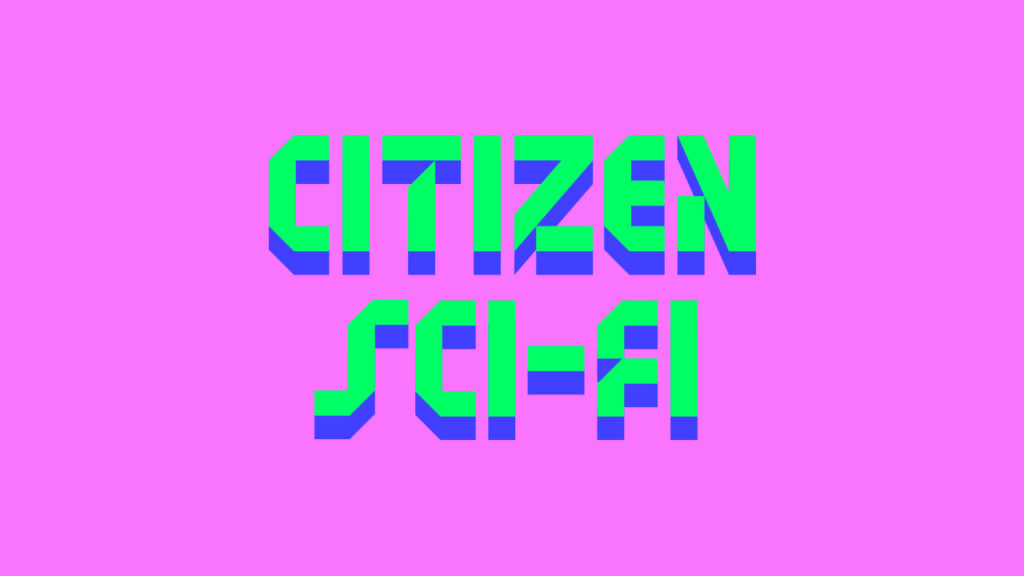
Activities Include:
Martin Zeilinger
Should a cashless society leave us quaking in our boots? Come play our game imagining the future of money – and how we’ll get by if there’s no cash to pay for things. You’ll get given a scenario and asked to design a way to make exchanges in the future. Are you a ‘Barter Bender’ or ‘Sharey Carey’? Or will you sink the system and start again? Find out!
Times: 10.00-5.00
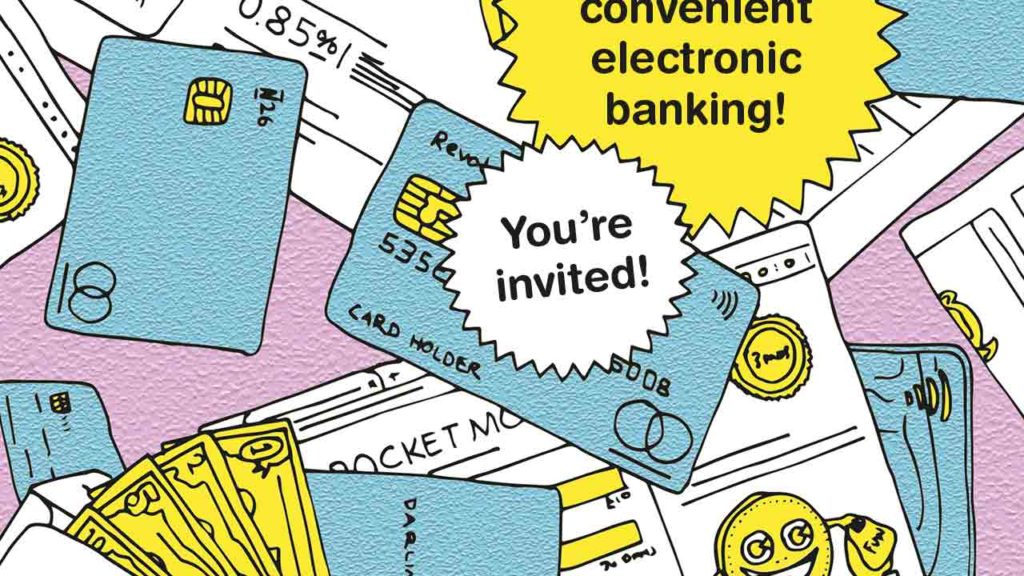
Mud Howard and Stephen Oram
Gather round and listen to two short stories emerging from the heady mix of sci-fi authors, scientists and the folk of Finsbury Park. Come and decide if these are the futures you want for your park?
Times: 11.30, 2.30
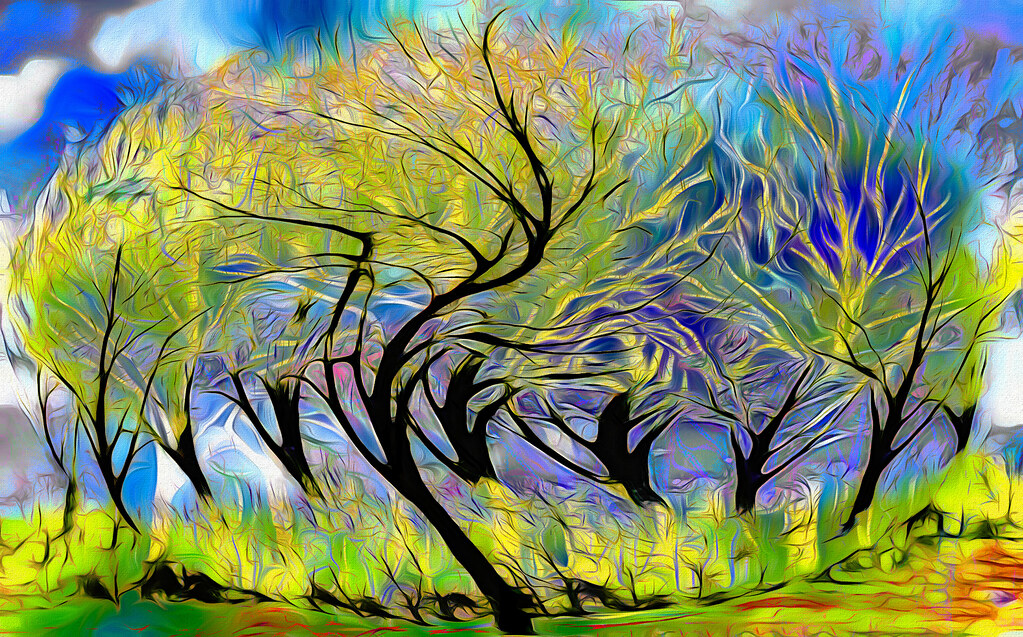
Idit Nathan and Helen Stratford
Take part in the launch of an entirely new app that leads you on a walk of the park that’s like no park walk you’ve ever been on before! This app was designed with local people through similarly silly strolls and we need YOU to bring it to life! Drop by and we’ll show you how to download the app (it’s very easy!) and collect a map that will help you ‘catch’ prompts all around the park. We’ll also have colourful badges for you to take home.
Times: 10.00-5.00
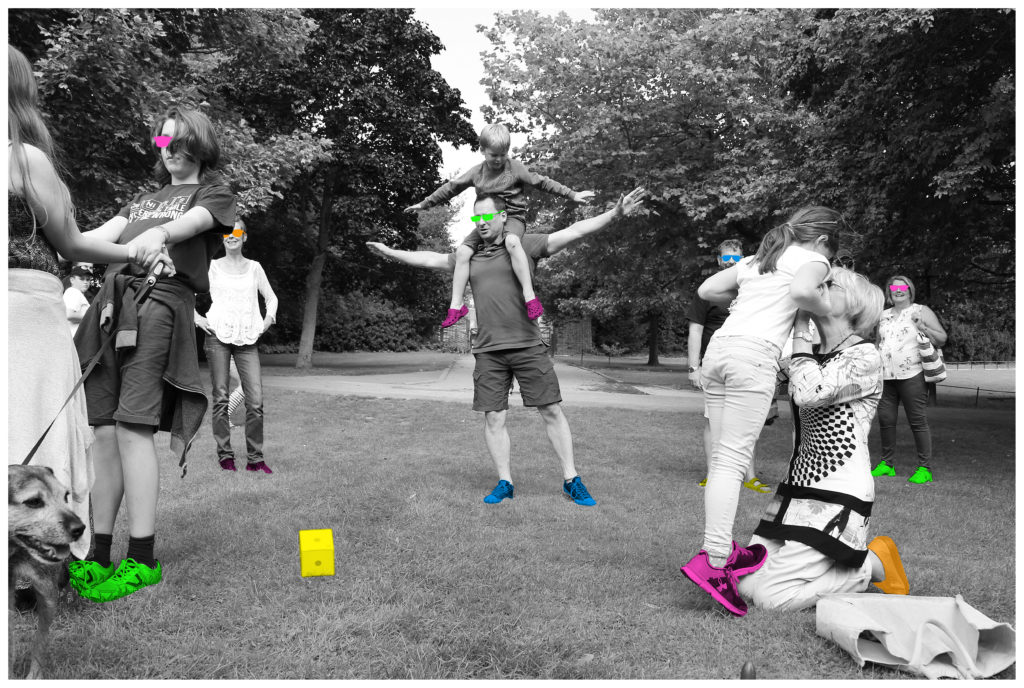
Jason Wilsher-Mills
Pedal Power, come meet Jason and the Argonauts – a set of wild and wacky AR-enabled characters who have come to visit you. Jason will show you how he made them and how you can help him make new ones all about the Pedal Power community. (this activity is especially for Pedal Power, but all welcome)
Times: 10.00-5.00
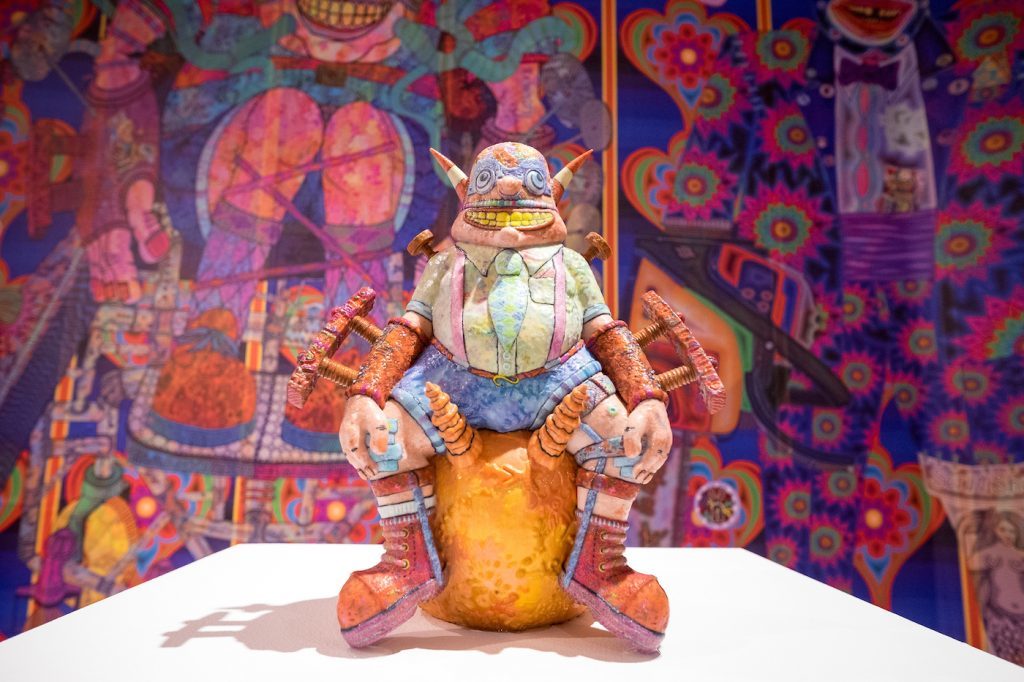
Alex Dayo
Drop by and join in a family-friendly Community Drumming workshop led by Alex Dayo, master drummer from Burkina Faso (West Africa), find your inner rhythm and let it out!
Times: 10.30, 4.00
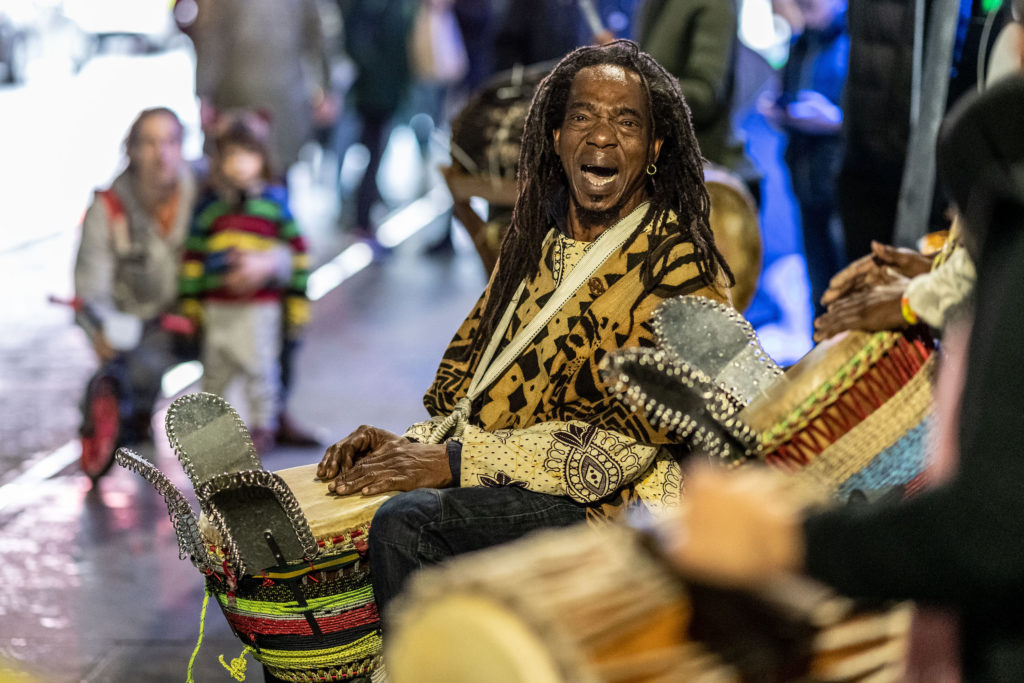
Possible Bodies: The Underground Division – Helen Pritchard, Jara Rocha, Femke Snelting
Join a research session with Possible Bodies: The Underground Division, a team of fiction writers, geo-techno-scientists and trans*feminist device problematizers. A hands-on collective investigation into the micro, meso and macro political consequences of earth scanning practices. Together we’ll look at what undergrounds are rendered when using techniques such as Terrestrial Light Detection and Ranging, magnetic resonance, UltraSound, and Computer Tomography.
Times: All day but limited places, book now

Feminist Internet
What have parks done for their communities? What role do they play in our lives both socially and politically? What kind of spaces could they be for us in the future? Feminist Internet launch a special episode of their podcast series and an accompanying zine for the Albion fair that unearths the history of Finsbury Park, examining the role urban parks play within their communities and speculates about their potential futures.
Times: 10.00-5.00
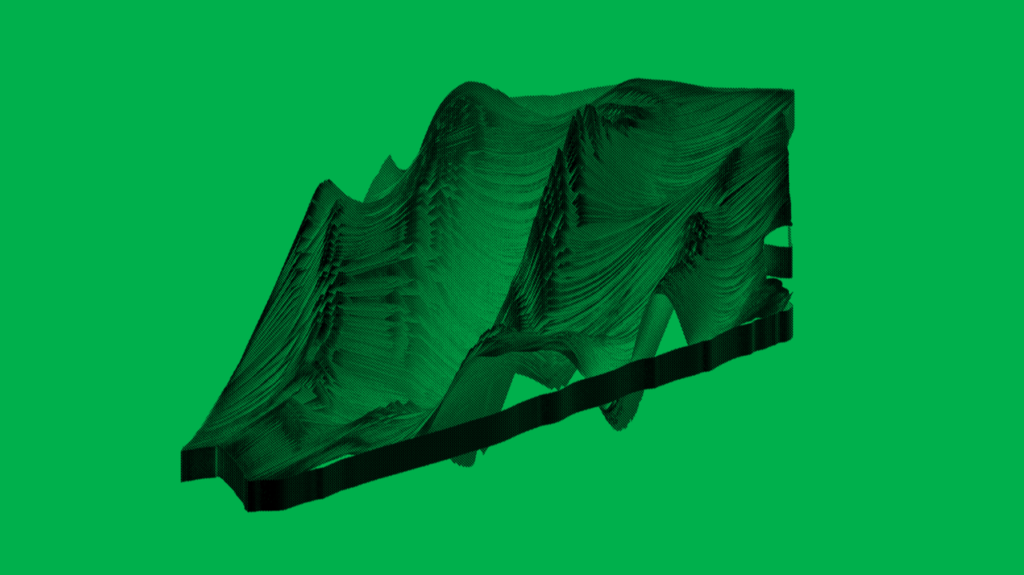
Larisa Blazic
It’s time to call this meeting to order! Join a special Theatre of the Oppressed inspired performance by reading aloud meeting minutes published by Finsbury Park’s many organisations and community hubs.
Times: 12.00-2.30
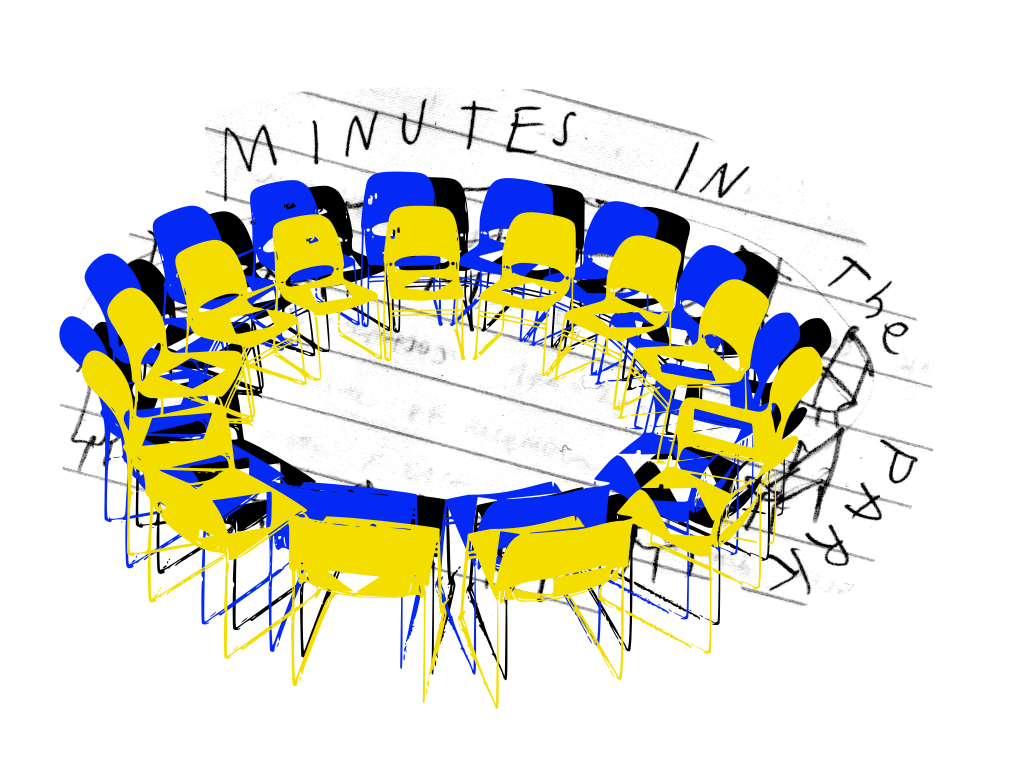
Sunara Begum
The ‘Who Am I?’ workshop is about reversing technology and reflecting on history through creativity. Design and create your own special crest and emblem to signify who you are. Investigate the world of sound through percussion-led music making and immerse yourself in the art of expression through movement. The workshop looks at understanding who we are, tapping into our inner self, asking questions, seeking answers and sharing personal and collective journeys.
Times: 10.00-5.00
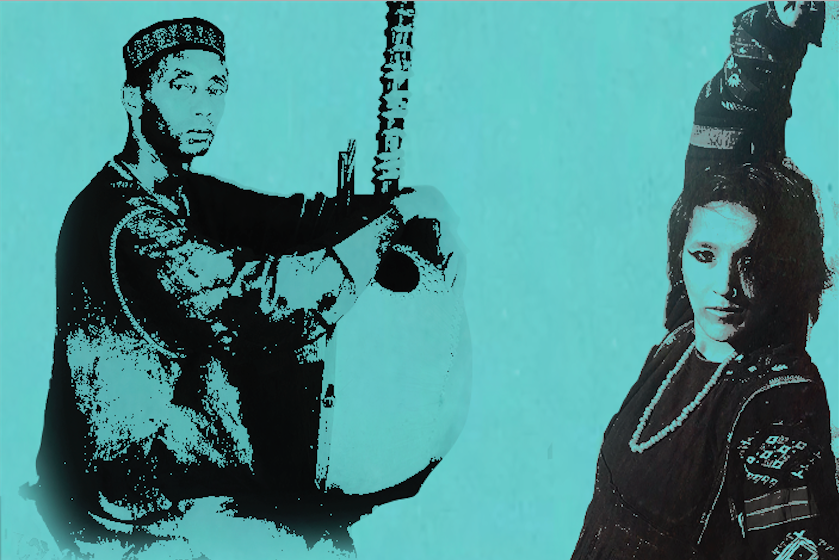
Artist: Alistair Gentry. Curators: Hannah Redler Hawes and Julie Freeman.
Just how trusting are you? Meet the hot-pink puppet-robot who wants to tell you all about your life online! How much will you reveal and how much does the trustbot know already?
Times: 10.00-11.30, 12.00-2.00, 3.00-5.00
This work was produced as part of an ODI R&D project funded by Innovate UK.

Rachel Jacobs
How will you dress fancy for the Future Machine? Rachel Jacobs needs your help to create a stylish parade for the unveiling of the Future Machine this autumn. What will you wear?
Times: 10.00-5.00
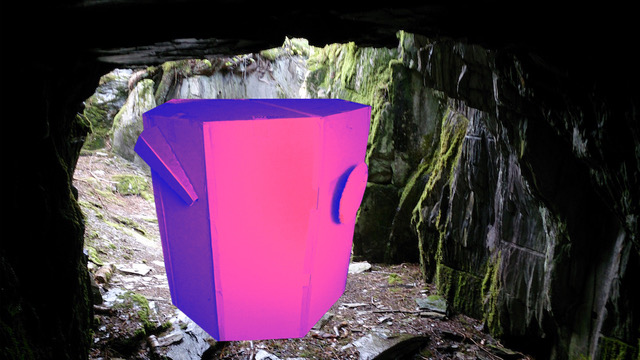
They Are Here
There will be a vegetarian and Halal barbeque on the go, with servings inspired by recipes from the refugees They Are Here have been collaborating with. Food will be offered in exchange for a sketch reimagining the transformation of the garden, this will inform the changes taking place in the Autumn.
Times: DJ 12.00-4.30. BBQ 1.00-4.30
Kathryn Davis, Dhelia Snoussi and Zey Kussan, Museum of London
What might future archaeologist say about us in the park? How right (or wrong!) could they be? Discover the left objects found in park through the Everything project, and see what connections you can make to you, the park and 2019.
Times: 11.00-1.00
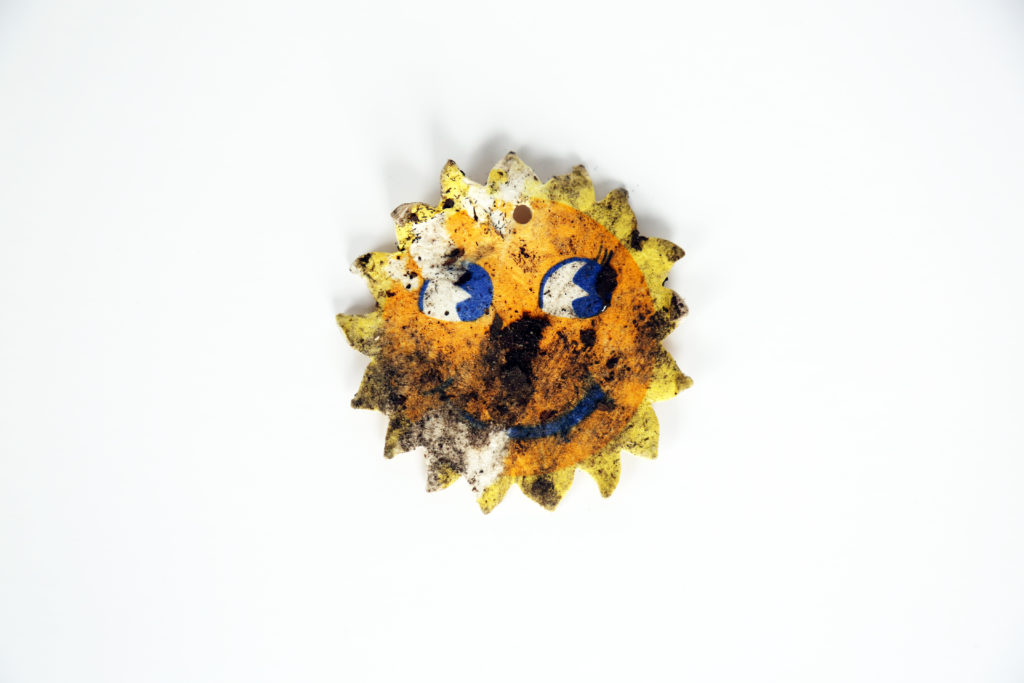
Andrew Smith, Goran Vodicka
Come and map your experiences of Finsbury Park and feed into research about urban parks and festivals.
Times: 10.00-5.00
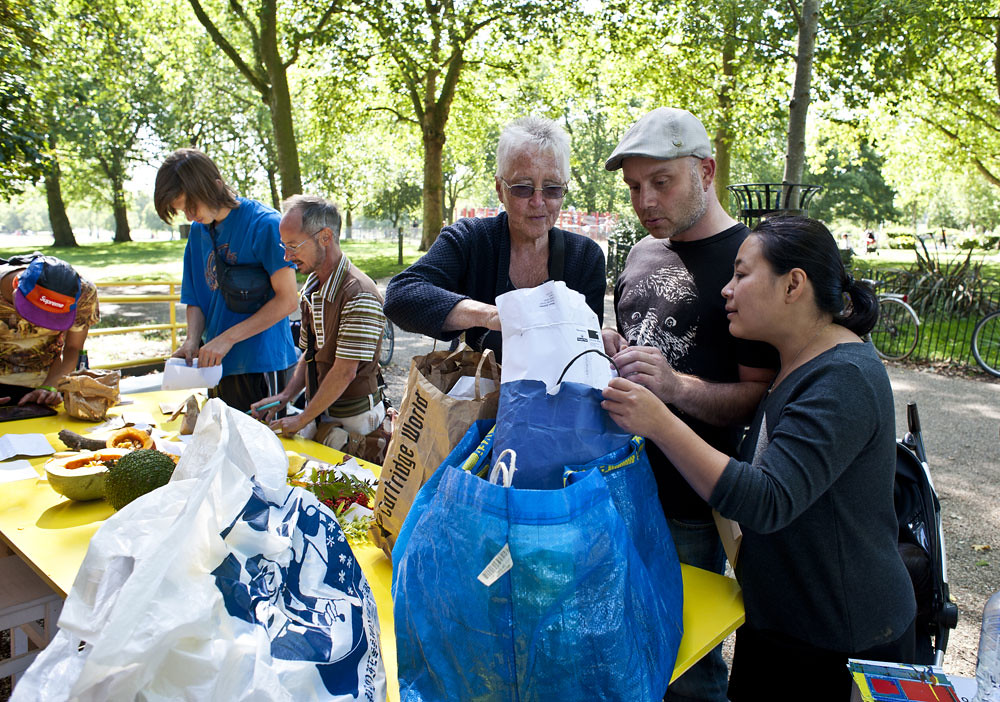
Featured image: Image by Studio Hyte, artwork in image by Jason Wilsher-Mills
Alex Dayo
Alex Dayo is a versatile composer, arranger and musician (he primarily plays percussion instruments), who was born in Burkina Faso, West Africa. Alex recalls growing up to the sound of drumbeats all around him – music has been part of his everyday life from birth, with instruments replacing childhood toys. His professional musical career started in the 1980s, accompanying the National Ballet Kouledafourou on tour as well as playing for African Royalty and globally-recognised dignitaries at private and public events and the Ensemble des Radios and Televisions of Burkina Faso, based in Bobo-Dioulasso. In 1985, Alex founded Fusion band Wountey, and, for fifteen years, toured with his band and the Ballet across Africa and Europe, spreading Burkina Faso’s cultural fusion to a wider audience. His musical collaborations include Ali Farka Toure, Femi Kuti and Salif Keita from Africa and traditional Master Griots from Burkina Faso/Mali/Guinea/Gambia. An accomplished arranger, Alex modifies his style according to the need, incorporating African traditional, Fusion, Jazz, Rock, Latin and Caribbean influences. A highlight of Alex’s career was being chosen to play at the Opening and Closing ceremonies at the London 2012 Olympics. As well as gaining British community music teaching qualifications, Alex developed his teaching skills working throughout Europe (Switzerland, Italy, Germany, Austria, Luxembourg, Belgium, France and Holland) and Africa and has played at numerous festivals and events, including Notting Hill and Hackney Carnivals, where he has performed for the past ten years.
Alistair Gentry
Alistair Gentry is a science fiction artist. He likes silly costumes, museums, absurdity, visiting the uncanny valley, the Oxford comma, and making machines do things their manufacturers wouldn’t approve of. DoxBox trustbot was developed during his embedded research residency at The Open Data Institute. Other recent projects include an imaginary tourist information agency and a technological ritual with televisions and credit card shredders.
Andrew Smith
Andrew Smith is a Reader in the School of Architecture and Cities at the University of Westminster. His background is in urban geography and one of his main research interests is the significance of organised events in post-industrial and entrepreneurial cities.
Goran Vodicka is a Research Fellow in the School of Architecture and Cities at the University of Westminster. He is an architect/urbanist and his research is broadly focused on diversity and inclusion in public spaces.
Feminist Internet
Feminist Internet is a group of artists and designers working to advance online and offline equalities for women and other marginalised groups through creative and critical practice.
Hannah Redler Hawes
Hannah is the director of the Data as Culture art programme at the ODI and an idneoendent curator. She specialises in art and technology, art and science and emerging artistic practice with an interest in participatory process. She develops interdisciplinary projects for galleries, museums, digital space and non-art contexts. Alongside her work with ODI she curates exhibitions, events and art interventions. Past projects have been with Science Gallery London, Tate Modern, Natural History Museum, FACT Liverpool, the Digital Catapult and the Institute of Physics. As an artist, Julie’s focus is the investigation of data as an art material, using it to create work that reflects the human condition through the analysis and representation of data. As a computer scientist and artist, Julie oftens works collaboratively and experimentally with scientists. Her work has been shown widely in the UK and internationally, and she has won awards from the Wellcome Trust, the Arts Council and Nesta. She holds a PhD in Media & Arts Technology from QMUL and is the founder of the Data as Culture art programme at the ODI.
http://culture.theodi.org/about/
Helen Stratford and Idit Nathan
Helen Stratford and Idit Nathan – Working collaboratively as Play Anywhere Now or Never! and combining backgrounds in theatre and architecture, Idit and Helen have worked in partnership with Wysing Arts Centre, Kettles Yard, Cambridge and METAL and in locations across the UK (Bristol, Sunderland, Peterborough, Southend and London). In 2015 they formulated Play The City Now or Never! (PCNN) working with METAL Peterborough and Southend to develop the PCNN App, a site-specific geo-locative App for mobile devices positioned at the intersection of art, play and technology. The PCNN App, like other low-tech resources they have developed, such as a compilation of games and scores as well as DIY die, solicits playful engagement with spaces and sites. Other recent and ongoing collaborative projects include developing a mobile artwork for Yorkshire Sculpture Park as well as walkshops for Cambridge Junction, Festival of Ideas Cambridge, CounterPlay ’16 Aarhus, Wellcome Trust, Live Art Development Agency and the National Theatre.
www.playanywherenowornever.com
Jason Wilsher-Mills
Jason Wilsher-Mills is a disabled digital artist who is based in the East Midlands, using iPads to create paintings which detail his disability, childhood memories, popular culture, social history/heritage, creating new biographical narratives, through theatrical artifice and humour. He initially painted traditionally, with oils, but since becoming disabled has found the iPad screen more manageable – affording him the opportunity to create large pieces of artwork, through high-resolution files, modern Giclée printing methods & projection methods. It has also given him the chance to work collaboratively, due to its connectivity and accessibility. The primary themes of his work include memory, childhood, disability and illness. In parallel to his own artistic practice Wilsher-Mills conducts public art commissions and residencies working primarily with learning disabled collaborators on wild and wacky interactive sculptures.
Larisa Blazic
Larisa Blazic is a London based digital artisan, educator and feminist hacker with practice ranging from net.art to FLOSS art and design. In her most recent work, Data Union Fork, part of Vertigo STARTS Residency, she explores collective response to personal data abuses by state and corporate sector and creates experiments based on technologies developed within the DECODE project and investigates local governance in Local&&Ledger project.
Martin Zeilinger
Martin Zeilinger is a London-based interdisciplinary researcher, curator, and media practitioner. Currently he works as Senior Lecturer in Media at Anglia Ruskin University (Cambridge/UK), and also serves as curator of the Vector Festival (Toronto/CAN). His research interests include digital art, appropriation-based art practices, experimental uses of financial technologies in contemporary art, theories of cultural ownership and intellectual property, political economies of new media, live coding and creative computing, videogame culture, and experimental game art.
Mud Howard
Mud Howard (they/them) is a gender non-conforming poet, performer and activist from the states. mud creates work that explores the intimacy and isolation between queer and trans bodies. mud is a Pushcart Prize nominee. they are currently working on their first full-length novel: a queer and trans memoir full of lies and magic. they were the first annual youth writing fellow for Transfaith in the summer of 2017. their poem “clearing” was selected by Eduardo C. Corral for Sundress Publication’s the Best of the Net 2017. mud is a graduate of the low-res MFA Poetry Program at the IPRC in Portland, OR and holds a Masters in Creative Writing from the University of Westminster. you can find their work in THEM, The Lifted Brow, Foglifter, and Cleaver Magazine. they spend a lot of time scheming both how to survive and not perpetuate toxic masculinity. they love to lip sync, show up to the dance party early and paint their mustache turquoise and gold.
Possible Bodies – Femke Snelting
Femke Snelting works as artist and designer, developing undisciplined research at the intersection of feminisms and free software. In various constellations she explores how digital tools and cultural practices might co-construct each other. She is member of Constant, a non-profit, artist-run association for art and media based in Brussels.
www.snelting.domainepublic.net
Possible Bodies – Helen Pritchard
Helen Pritchard is an artist and researcher, whose interdisciplinary work brings together the fields of Computational Aesthetics, Geography and Feminist TechnoScience. Helen’s practice is both one of writing and making and these two modes mutually inform each other in order to consider the impact of computational practices on our engagement with environments. Helen is the head of Digital Art and a lecturer in Computational Art at Goldsmiths, University of London.
Possible Bodies – Jara Rocha
Jara Rocha is an independent researcher/mediator who tends to attend to the semiotic-material urgencies of present cultures with a trans*feminist sensibility. Works with infrastructural politics and aesthetics, text logistics, body inscriptions and tests non-formal ways of learning in collective situations like Euraca Seminar, Las promesas de los algos, Relearn Summerschool, or The Darmstadt Delegation.
Rachel Jacobs
Rachel Jacobs is an artist, researcher and games designer. She co-founded the artist-led collective Active Ingredient in 1996 and the commercial games company Mudlark Production Company in 2007. She completed a Doctorate in Computer Science in 2014. Rachel is a practising artist exhibiting nationally and internationally, and a Research Associate at the Horizon Digital Economy Institute, University of Nottingham. Her artworks include the award winning ‘Heartlands (Ere Be Dragons)’ one of the first mobile games that took place on city streets in Sao Paulo, Yokhama, Berlin, Paris, Cambridge, Bristol and Nottingham; ‘A Conversation Between Trees’, a touring artwork and schools exchange using environmental sensors to connect forests in the UK and Brazil; and ‘The Prediction Machine’, an interactive installation that predicts the future impacted by climate change. Rachel is currently developing a series of artists interventions ‘Creating Rituals for When The Future Comes’, alongside a mobile interactive artwork the ‘Future Machine’.
Stephen Oram
Stephen Oram writes thought provoking stories that mix science fiction with social comment, mainly in a recognisable near-future. He is one of the writers for SciFutures and, as 2016 Author in Residence at Virtual Futures – described by the Guardian as “the Glastonbury of cyberculture” – he was one of the masterminds behind the new Near-Future Fiction series and continues to be a lead curator. Oram is a member of the Clockhouse London Writers and a member of the Alliance of Independent Authors. He has two published novels: Fluence and Quantum Confessions, and a collection of sci-fi shorts, Eating Robots and Other Stories. As the Author in Residence for Virtual Futures Salons he wrote stories on the new and exciting worlds of neurostimulation, bionic prosthetics and bio-art. These Salons bring together artists, philosophers, cultural theorists, technologists and fiction writers to consider the future of humanity and technology. Recently, his focus has been on collaborating with experts to understand the work that’s going on in neuroscience, artificial intelligence and deep machine learning. From this Oram writes short pieces of near-future science fiction as thought experiments and use them as a starting point for discussion between himself, scientists and the public. Oram is always interested in creating and contributing to debate about potential futures.
Sunara Begum
Originally from Bangladesh, Sunara Begum studied film and fine art in the UK and Yoga and Ayurveda in India. She lives between London and Lagos where she is the co-founder of several international arts initiatives including Chand Aftara, an artist’s collective dedicated to the exhibition and production of experimental cinema, New Horizons Africa, an annual music and arts festival and Living Legacies, Gambia’s first traditional music archive. Begum’s work has been widely exhibited in film festivals, museums, galleries and cinematheques worldwide. In 2017, her film Meditation on Stillness was selected as the Best Experimental Short at the Art Africa Film Festival and the Jury Grand Prize at the 21st Media City Film Festival. Her films are in the permanent collections of Dimbola Museum & Galleries (UK), Lionel Wendt Gallery (Sri Lanka), Centre for Contemporary Art (Nigeria), Drik Gallery (Bangladesh) as well as Central Saint Martins College of Art & Design. Sunara’s work is a highly personal expression of themes including gender, memory and migration with powerful imagery that evokes deep-rooted feelings of reflection, contemplation and stillness. Sunara has developed a visual language that is distinctly her own drawn from her unique lived experience, straddling the dialectics of east and west, cultural identity, femininity and the immutable polarities of displacement.
They Are Here
They Are Here (f. 2006) is a collaborative practice steered by Helen Walker and Harun Morrison. They are currently based in London and on the River Lea. Their work can be read as a series of context specific games. The entry, invitation or participation can be as significant as the game’s conditions and structure. Through these games, they seek to create ephemeral systems and temporary, micro-communities that offer an alternate means of engaging with a situation, history or ideology. In parallel, they initiate multiyear socially engaged projects that become generative spaces for further works. They Are Here work across media and types of site, particularly civic spaces.
Museum of London
Curating London will change how the museum collects 21st century London. It also seeks to recruit staff from a broader range of backgrounds and professional experience and puts Londoners at the heart of our collecting practice by working in partnership with local communities. From physical objects to interviewing Londoners about their own histories and memories, Curating London will capture, collect and record contemporary London.
The project started in April 2018 and runs until March 2022.
Each year the museum will begin four projects: three area studies of particular areas and one themed study that spans the whole of London.
https://www.museumoflondon.org.uk/discover/curating-london-collecting-community-contemporary-city
Featured Image: Smoke Signals at the International Anthony Burgess Foundation, Manchester
Red floodlights illuminate the silhouette of a grand piano standing in the centre of a darkened room. As musician and composer Jonathan Hering begins to strike the keys of the late Anthony Burgess’ piano, a hidden bank of machines cough a sequence of smoke rings into the air, which catch in the red light above. The room fills with a ghostly red mist, all but obscuring the source of the beautiful music. The irregular pattern of smoke puffs suggest it’s some sort of message or code. In fact, it’s a sequence based on email data from seven arts organisations, put through a Polybius cipher.
Smoke Signals places digital communication in context, as simply the latest in a line of our approaches to long-distance forms of communication,” explains co-creator Ed Carter. “I was very interested in the way that as the smoke, or ‘data’, filled the room it became more and more dense. At the beginning, you can decipher it if you understood the code, but eventually it becomes more of a fog – which is a nice analogy for the way data works on a big scale.”
This performance of Smoke Signals at Manchester’s International Anthony Burgess Foundation captures much of what FutureEverything festival is all about: looking simultaneously backward and forward through technology, fusing the analogue and the digital, the theoretical and the artistic, and uniting practitioners across disciplines.
FutureEverything is an innovation lab for digital culture and an annual ideas festival exploring the space where technology, society and culture collide. Featuring thought-provoking panel discussions, original commissions and parties, this year it took place in arts venues across the city, from Wednesday 30th March to Saturday 2nd April.
This summary explores how the festival encourages multi-disciplinary collaboration between different creative communities through interviews with artists who embody this collaborative ethos in a variety of different ways. How do they bridge the divides between disciplines to break new ground and meet the challenges of the future?
Commissioned for FutureEverything, artist Ed Carter created Smoke Signals with engineer and technologist David Cranmer. Musicians Sara Lowes and Jo Dudderidge & Harry Fausing Smith and Hering, then devised original compositions in response to the piece, taking each performance in a new direction. “Working with a collaborator or collaborators is like working with a process or working with a data set,” Ed says. “You create a framework but leave a degree of openness which allows for the unexpected.”
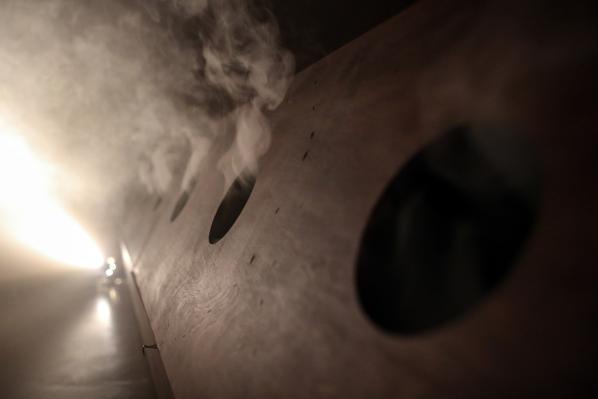
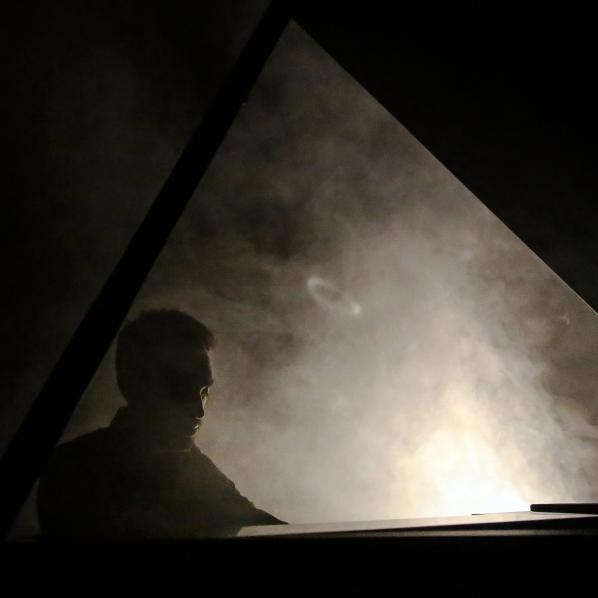
Newcastle’s Occasion Collective chose to deconstruct the collaboration process behind their Babble series of improvised performances at Islington Mill in a lively workshop on the final day of the festival. The collective invited participants to get hands-on with improvised dance and live-sampling in sound and video, to help reveal the feedback loops between artists at the heart of their multilayered performances.
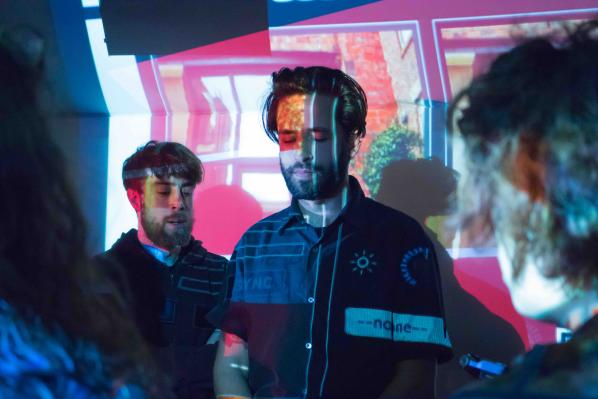
The concept grew from musician Jamie Cook’s final-year music degree performance, where he played with a saxophonist and manipulated her audio live, creating loops, sampling, applying effects and changing speed. “I wanted to use electronics in a very tactile way, so that the audience weren’t shut out between me and the computer screen,” he says. “They could see all of the sounds I was creating, they could see them being taken and then transformed. Over time I added more members from other media, like dancers and visual artists, which grew into this ensemble where everyone improvises live and feeds off each-other’s ideas.”
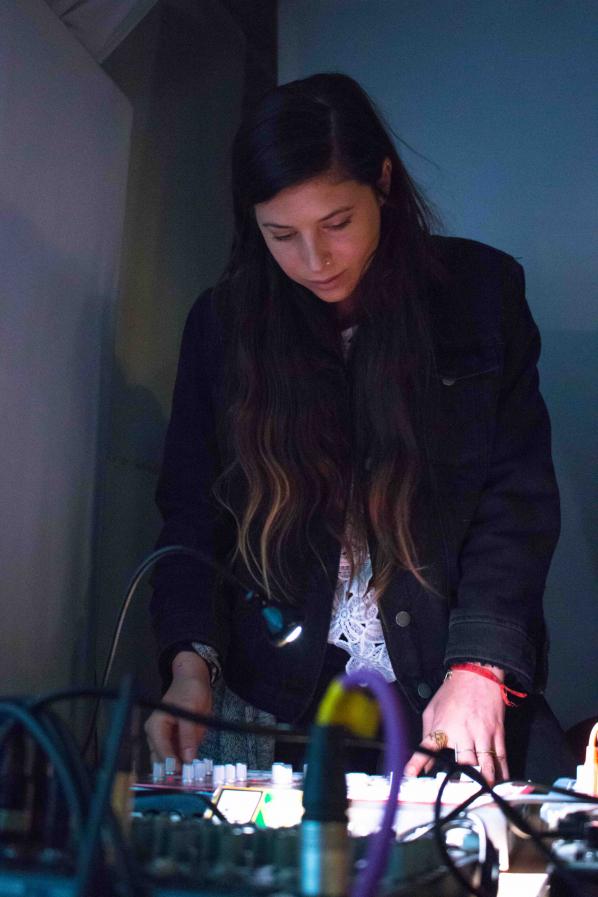
Each Babble performance refers to a short poem written by Charlie Dearnley, based on stories told by his grandmother, which “all grapple with a point of death or unburdening,” he explains. While performing, sensors on his costume feed to digital artist Sean Cotterill, whose software translates the movement into light and sound. “The idea of digital communities, using digital technologies to gather creative communities around them, is important to me,” Sean explains. Written in the supercollider language, Sean has put all his code for the show online, in the hope of developing further feedback loops beyond the live performance.
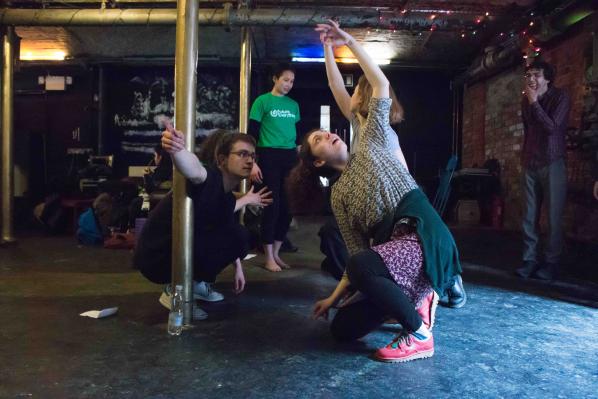
While process is an explicit part of Occasion Collective’s performances, each one feels stirring and organic. “It’s an attempt at honest expression which is heightened and realised through collaboration and working with others,” Charlie says, “acknowledging, for myself, the inadequacy of words in genuinely conveying experience; trying to create something that is more engaging.”
Engaging people is the challenge at the heart of Nelly Ben Hayoun’s work, as she explained after her talk at the Intelligence panel. The so-called ‘Willy Wonka of design’, Nelly is a one-woman nexus of collaboration who creates experiences to generate social action around science and technology, often space exploration. She assembled the International Space Orchestra, the world’s first orchestra composed of space scientists from NASA’s Ames Research Center and the SETI Institute (Search for Extraterrestrial Life). Featuring original music by Beck, Damon Albarn, The Prodigy, Penguin Cafe, Two time Grammy award winner Evan Price and Bobby Womack, she convinced scientists and astronauts to participate in an ambitious musical retelling of the Apollo 11 moon landing in 1969.
Video embed: The International Space Orchestra_ Official IFFR selection 2013 (https://vimeo.com/57863847)
“There are audiences that are not keen to be transported or play any part, but it’s my role to then force them into it,” she explains. “Most of the public is becoming quite lethargic, so it’s really difficult to get them to move. My way of doing things is what I call total bombardment: getting to people through the fields of music, design, arts, theatre, tech, digital and architecture. Even though you might not want to be engaged with the issues or the questions I’m raising, you will find yourself confronted, in any case.”
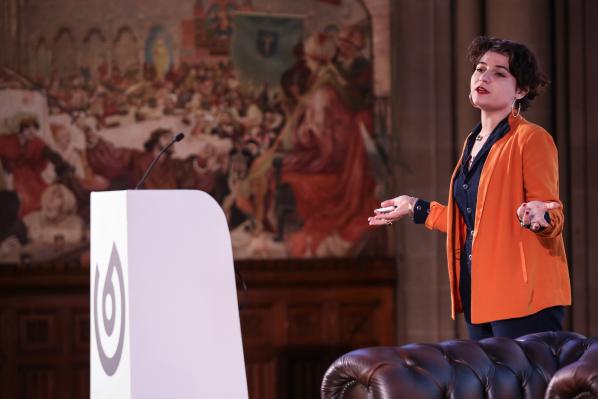
Nelly studied at the Royal College of Art under Anthony Dunne and Fiona Raby, who inspired her problem-finding rather than problem-solving approach to design, particularly with regard to future challenges and the potential impact of evolving technology. Her most recent project, Disaster Playground, investigates the planet’s emergency procedures through attempts to stage a simulation of an asteroid strike. Soberingly, Nelly finds that only about 20 ageing scientists are charged with planning for disasters such as asteroid collisions and meteor showers.
Video embed: Disaster Playground Teaser (https://vimeo.com/107466074)
“I’m applying critical thinking and critical design, but also looking at a range of artistic fields to see how we can merge all of these different disciplines to aim for social action,” Nelly says. “I apply Antonin Artaud’s theory of the Theatre of Cruelty to the way I engage members of the public with scientific research, looking for much more extreme and visceral ways to engage them, which you open up through collaboration. Whenever I work with scientific partners or sociologists or philosophers, I pick the ones who will fight with me. I believe that conflict generates innovation.”
The Turner Prize-winning Assemble collective prefers a more harmonious atmosphere. Comprised of 18 members, Assemble’s collaborative approach to architecture and urban development puts local people at the heart of development, implementation and ultimately the long-term life of each project. They also work on sustainable principles, choosing where possible to work with pre-existing local materials, reusing or repurposing them to better serve the area’s needs.
Assemble’s Mat Leung posed new ways to think about communities in a thought-provoking panel discussion with science fiction writer and futurist Madeline Ashby and new communication technologies expert Sarah Kember at FutureEverything’s Community panel. “[Sarah, Madeline and Assemble] understand community not as a monolithic term,” Mat explains. “Obviously there are loads of different elements to it. The term community is difficult because it assumes a single kind of identity, but together we wanted to interrogate that.”
Multiple communities can exist simultaneously and overlap in a given area, such as a community of residents, who Assemble empowered through the Turner Prize-winning Granby Workshop project, creating jobs through rebuilding a neglected area of Liverpool from the grassroots up; or a community of makers and artists, with whom they worked on the Blackhorse Workshop project in East London.
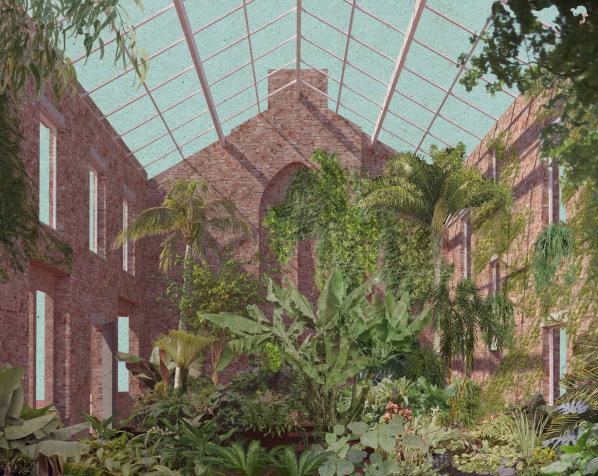
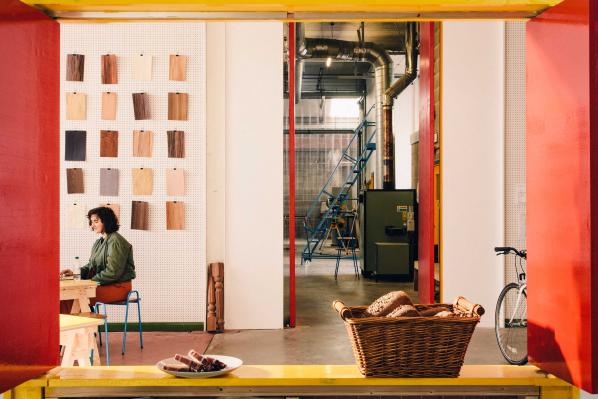
The Community panel developed a theme that ran through the festival: that no one individual or group is capable of meeting the challenges of the future alone. Finding ways to positively engage multiple stakeholders with a variety of knowledge and skills is vital to finding solutions that meet the needs of the wider community.
“Our successful collaborations come from an understanding that there’s a diversity of stakeholders, skills and knowledge,” Mat says. “We’re interested in a broad range of things, but we acknowledge we’re not amazing at everything. Each different member of Assemble has their own training and expertise, but when we work with a community, people who’ve been there for 15 years know more than we do – they’re experts in a different way. They might not know about which materials to use for a given job, but they can tell you the effect of a layout or the practical implications of what you’re doing. You have to acknowledge that people are experts in different fields”.
Projecting a vision into the future can be one of the hardest challenges for architects – but Assemble have developed what appears to be a powerful and effective way of ensuring the longevity of projects. “When you say ‘Let’s talk about the near future’, architects get hysterical, designers go into meltdown,” Mat explains. “As soon as you say community, legacy, or things like that, it brings up a set of expectations. But what you’re really saying is that you want your idea to be taken on and exist beyond the period you’re directly involved in its life. So we’ve found that collaborating with the community throughout the process, through workshops for example, is a great way to encourage people to continue using spaces after we’ve moved on.”
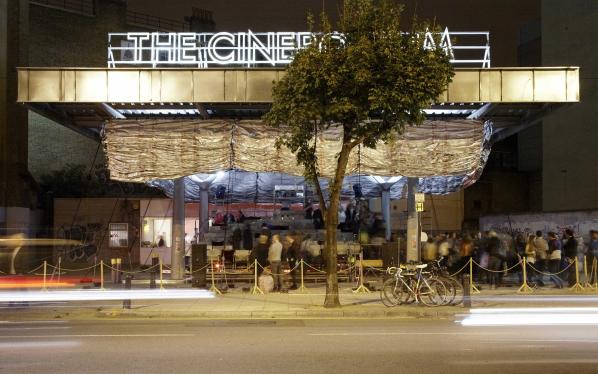
The enthusiastic spirit of collaboration fostered by FutureEverything transcended each event and sparked conversations between practitioners from a variety of different fields, who gave each other new perspectives through which to consider their own work. Drawing on the participatory ethos of progressive digital communities, the festival encouraged a refreshingly open atmosphere. But how to keep this energy going once the festival comes to an end? Many of the artists involved shared their processes in the hope that others can build on their achievements. The vibrant creative melting pot FutureEverything presided over will ensure that the new connections created will lead to even more inspiring projects in the years to come, from networks that extend far beyond Manchester.
Find out more about FutureEverything.
I arrived at the Transmediale festival late Friday afternoon, which was hosted as usual at Das Haus der Kulturen der Welt (The House of World Cultures) in Berlin. The area where the building is sited was destroyed during World War II, and then at the height of the Cold War, it was given as a present from the US government to the City of Berlin. As a venue for international encounters, the Congress Hall was designed as a symbol of ‘freedom’, and because of its special architectural shape the Berliners were quick to call the building “pregnant oyster” [1] The exterior was also the set for the science fiction action film Æon Flux in 2005. Both past references link well with this festival’s use of the building. I remember during my last visit, in 2010, standing outside the back of the building watching an Icebreaker cracking apart the thick ice in the river. The sound of the heavy ice in collision with the sturdy boat was loud and crisp. This sound has stayed with me so that whenever I hear a sound that is similar I’m immediately transported back to that point in time. Unfortunately, this time round there was no snow, instead the weather was wet, warm and slighty stormy.
Last year’s festival explored the marketing of big data in the age of social control. This year, the chosen format was entitled conversationpiece, with the aim of enabling a series of dialogues and participatory setups to talk about the most burning topics in post-digital culture today. To give it grounding and historical context the theme was pinned to the “backdrop of different processes of social transformation, 17th and 18th century European painters perfected the group portrait painting known as the “Conversation Piece” in which the everyday life of the aristocracy was depicted in ideal scenes of common activity.” In recent years the festival has scafolded its panels, workshops and keynotes to grand, central themes to guide its peers and visitors, along with a large-scale curated exhibition. If we view the four interconnected thematic streams- Anxious to Act, Anxious to Make, Anxious to Share and Anxious to Secure – we might guess that the festival curators are also anxious to save all the resources (and celebrations) for next year, which is after all, Transmediale’s 30th birthday.
So, I was curious to see how my brief time here would unfold…
This review is focused on the hybrid event Off-the-Cloud-Zone. It featured presentations, talks and workshops, starting at 11 am, going on until 8pm. Hardcore indeed. It demanded total dedication, which unfortunately I was not able to give. However, I did offer my attention to the rest of the proceedings from lunch time until the end. It was moderated by Panayotis Antoniadis, Daphne Dragona, James Stevens and included a variety of speakers such as: Roel Roscam Abbing, Ileana Apostol, Dennis de Bel, Federico Bonelli, James Bridle, Adam Burns, Lori Emerson, Sarah T Gold, Sarah Grant, Denis Rojo aka Jaromil, George Klissiaris, Evan Light, Ilias Marmaras, Monic Meisel, Jürgen Neumann, Radovan Misovic aka Rad0, Natacha Roussel, Andreas Unteidig, Danja Vasiliev, Christoph Wachter & Mathias Jud, and Stewart Ziff.
The Off-the-Cloud-Zone day event was a continuation of last year’s offline networks unite! panel and workshops. Which also originated from discussions on a mailing list called ‘off.networks’ with researchers, activists and artists working together around the idea of an offline network operating outside of the Internet. The talks concentrated on how over recent years there has been a growing scene of artists, hackers, and network practitioners, finding new ways to ask questions through their practices that offer alternatives in community networks, ad-hoc connectivity, and autonomous systems of sensing and data collecting.
Disillusionment with the Internet has spread widely since 2013, when Edward Snowden the US whistleblower leaked information on numerous global surveillance programs. Many of these programs are run by the NSA and Five Eyes with the cooperation of telecommunication companies and European governments raising big questions about privacy and exploitation of our online (interaction) data. This concern is not only in relation to spying corporations, dodgy regimes and black hat hackers, but also our governments. “The idea of privacy has been flipped on its head. People don’t have to disclose their own information voluntarily anymore; it’s being taken from them regardless of their wishes.” [2] (Nowak 2015)
“The NSA’s principal tool to exploit the data links is a project called MUSCULAR, operated jointly with the agency’s British counterpart, the Government Communications Headquarters . From undisclosed interception points, the NSA and the GCHQ are copying entire data flows across fiber-optic cables that carry information among the data centers of the Silicon Valley giants.” [3] (Gellman and Soltani, 2013)
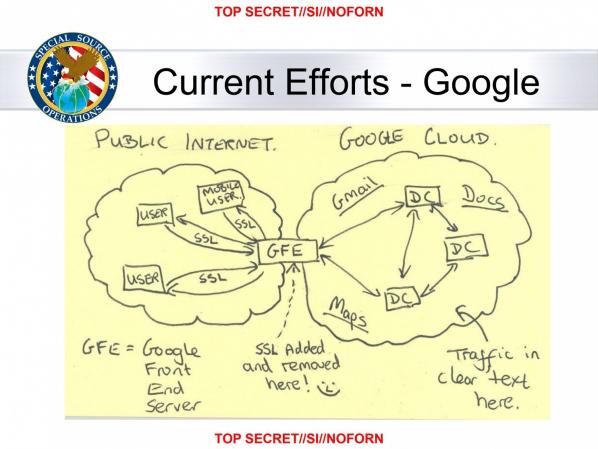
The above slide is from an NSA presentation on “Google Cloud Exploitation” from its MUSCULAR program. The sketch shows where the “Public Internet” meets the internal “Google Cloud” where user data resides. [4]
A legitimate concern for anyone wishing to read the contents of the leaked Snowden files, is that they will be spied upon as they do so. Evan Light has been working on finding a way around this problem, and at the Off-the-Cloud-Zone day event he presented his project Snowden Archive-in-a-Box. A stand-alone wifi network and web server that permits you to research all files leaked by Edward Snowden and subsequently published by the media. The purpose of the portable archive is to provide end-users with a secure off-line method to use its database without the threat of surveillance. Light says, usually the wifi network is open, but users do have the option to make their own wifi passwords and also choose their encryption standard.
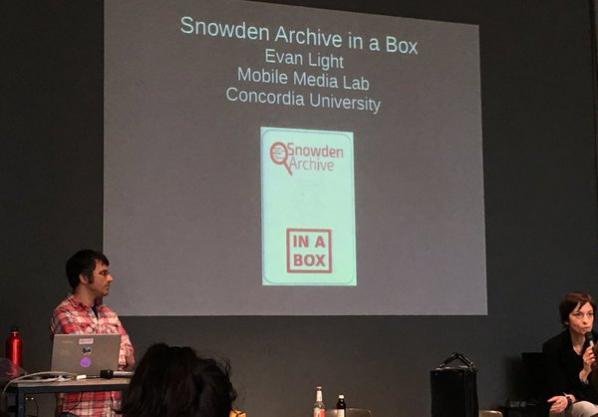
Snowden Archive-in-a-Box is based on the PirateBox, originally created by David Darts who made his in order to distribute teaching materials to students without the hassle of email. It is based on a RaspberryPi 2 mini-computer and the Raspbian operating system. All the software is open-source and its most basic setup can run on one RaspberryPi. In his talk Light said that a more elaborate version would use high-quality battery packs and this adds power for autonomy, along with the wifi sniffer that is running on a secondary RaspberryPi and a flat-screen for playing back IP traffic. If you’re interested in building your own private, pirate Archive-in-a-Box, visit Light’s web site for instructions on how to.

Christoph Wachter’s and Mathias Jud’s work, directly engages with refugees and asylum seeker’s social situations, policies, and the migrant crisis. They’ve worked together on participatory community projects since 2000 and have received many awards. For instance, take a look at their digital communications tool qaul.net which is designed to counteract communication blackouts. It has been used successfully in Egypt, Burma, and Tibet, and works as an alternative to already existing government and corporate controlled communication pathways. But, it also offers vital help when large power outages occur, especially in areas in the world suffering from natural disasters. The term qaul is Arabic and means ‘opinion, say, talk or word’. Qaul is pronounced like the English word ‘call’.

It creates a redundant, open communication code where wireless-enabled computers and mobile devices can directly initiate a fresh, unrestricted and spontaneous network. This includes the enabling of Chat, twitter functions and movie streaming, independent of Internet and cellular networks. It is also accessible to a growing Open Source Community who can modify it freely.
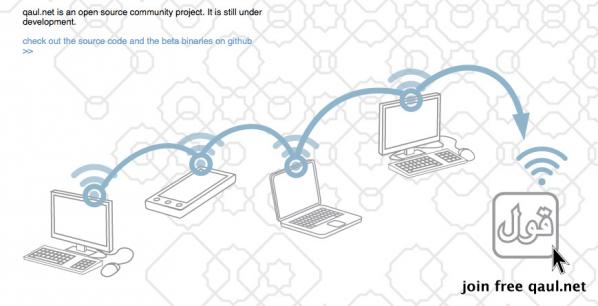
Wachter and Jud also discussed another project of theirs called “Can You Hear Me?”, a WLAN / WiFi mesh network with can antennas installed on the roofs of the Academy of Arts and the Swiss Embassy in Berlin, which was located in close proximity to NSA’s Secret Spy Hub. These makeshift antennas made of tin cans were obvious and visible for all to see. The Academy of Arts joined the project building a large antenna on the rooftop, situated exactly between the listening posts of the NSA and the GCHQ to enable people to directly address surveillance staff listening in. While installing the work they were observed in detail by a helicopter encircling overhead with a camera registering each and every move they made, and on the roof of the US Embassy, security officers patrolled.

“The antennas created an open and free Wi-Fi communication network in which anyone who wanted to would be able to participate using any Wi-Fi-enabled device without any hindrance, and be able to send messages to those listening on the frequencies that were being intercepted. Text messages, voice chat, file sharing — anything could be sent anonymously. And people did communicate. Over 15,000 messages were sent.” [5] (Jud 2015)
A the end of their presentation, they said that they will be implementing the same system at hotspots deployed in Greece by the end of the month. And I believe them. What I find refreshing with these two, is their can do attitude whilst dealing with political forces bigger than themselves. It also gives a positive message that anyone can get involved in these projects.
And then, it was the turn of the well known team at Dyne.org to discuss a project of theirs called Dowse, which is ‘The Privacy Hub for the Internet of Things’. They said (taking turns, there was about 5 of them) that the purpose of Dowse is to perceive and affect all devices in the local, networked sphere. As we push on into the age of the Internet of Things, in our homes everything will be linked up.
“Those bathroom scales and home thermostats already talk to our smartphones and in some cases think for themselves.” [6] (Nowak 2015)
As these ubiquitous computers communicate to each other even more, control over these multiple connections will be essential. We will need to know how to interact beyond the GUI interfaces and think about who has access to our private, common and public information. A whole load of extra information will be available without our consent.
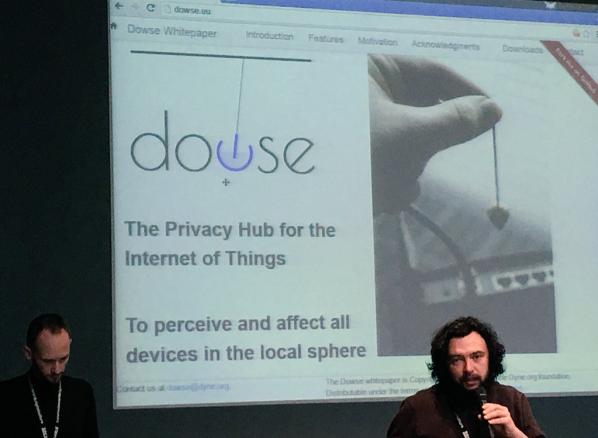
Dowse was conceived in 2014 as a proof of concept white paper by Denis Rojo aka Jaromil. Early contributors to the white paper and its drafting process includes: Hellekin O. Wolf, Anatole Shaw, Juergen Neumann, Patrick R McDonald, Federico Bonelli, Julian Oliver, Henk Buursen, Tom Demeyer, Mieke van Heesewijk, Floris Kleemans and Rob van Kranenburg. I downloaded the white paper and is definitely worth reading.
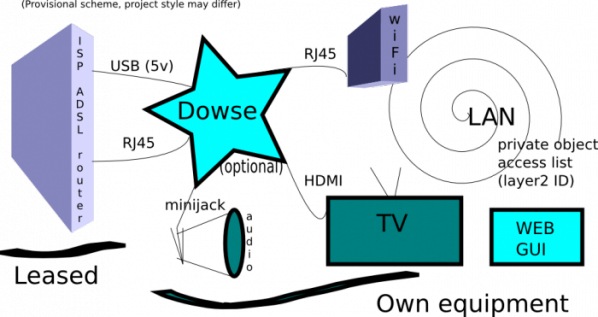
The Dowse project aims to abide to the principles stated in the Critical Engineers Manifesto, (2011). Near the very end of the talk they announced to the audience an open call for artists and techies everywhere to get involved and jump into the project to see what it can do. This is a good idea. If there is no community to make or break platforms, hardware and software, then there is a limited dialogue around the possibilties of what a facility realistically might achieve. Not just that, they want artists to make art out of it. I know there are some pretty clever tech-minded geeks out there, who will in no doubt take on the challenge. However, once those who are not so literate in the medium are able to exploit the project, it will surely fly. It’s going to be interesting, because if you look at the 3rd point in the Critical Engineers Manifesto, it says “The Critical Engineer deconstructs and incites suspicion of rich user experiences.” I’m thinking, that this number 3 element needs to treated with caution. If they really wish to open it up to a diverse user base, to engage with its potentialities, creatively and practically; thus, allow new forms of social emancipation to evolve as ‘freedom with others’. There needs to be an active intent to avoid a glass ceiling based on technical know-how. It’s a promising project and I intend to explore it myself and see what it can do and will invite other people within Furtherfield’s own online, networks to join in and play, break, and create.
Our final entry is the Sarantaporo Project which is situated in the North of Greece. A village in the mountains just west of Mount Olympus in Central Greece close to Thessaloniki, Macedonia and Larisa. The country has been in recession for over 6 years now, and many communities have had to create alternative ways of working with each other in order to survive the crisis. Over this troubling period, new forms of grass-roots coexistence, solidarity and innovation have evolved. The Sarantaporo Project is an impressive example of how people can come together and experiment in imaginative ways and exploit physical and digital networks.

Even before the economic crisis the region was already hit by poverty, and with the added pressures of imposed Austerity measures, life got even tougher. All the young were leaving and then migrating to the cities or abroad. Before the project in Sarantaporo, there was no Internet nor digitally connected networks for local people to use. This situation contributed to the digital divide and made it difficult to work in a contemporary society, when so many others in the world have been using technology to support their civic, academic and business for so many years already.
“In Greece, where unemployment reaches 30% in all ages and genders, and among the youth overpasses 50%, immediate solution for the “social issue” is more than urgent.’ [7] (Marmaras).
“Besides maintaining the network in a DIWO (Do It With Others) manner, and creating an atmosphere of cooperation among far-flung communities that were previously strangers, the Sarantaporo network is incorporating different groups of people into the community, like Farmer’s Cooperatives and techies. It is also creating an intergenerational space for learning.” [9] (Bezdommy 2016)

To resolve this issue a group of friends decided to deal with this problem by setting up a community D.I.Y wireless network to provide free internet access to 15 villages in the municipality of Elassona. “Sarantaporo.gr is an open source wireless mesh networking system that relies greatly on voluntary work both for its development and maintenance. Some volunteers are involved in the project by simply installing an antenna on their roof. Others, more actively engaged with the project, are responsible for sustaining the network by hosting meetings and answering technical questions.” [8] (Kalessi 2014) The audience was presented with snippets from a film made by the filmmaking collective Personal Cinema, about the project. It was made so the story of Sarantaporo’s DIY wireless network gets a wider reach, and that others are also inspired to do similar projects themselves.
These projects are dedicated to creating socially grounded and engaged alternatives to the proprietorial, networked frameworks that currently dominate our communication behaviours. These proprietorial systems, whether they are digital or physical are untrustworthy, and control us in ways that reflect their top-down demands but not our common needs. This reflects a wider conversation about who owns our social contexts, our conversations, our fields of practice, the structures we use, the land, the cables, our history, and so on.
Looking at the state of the planet right now you’d be forgiven for betting on a future not far from the director Neill Blomkamp’s vision in the sci-fi movie Elysium where, in the year 2159, humanity is sharply divided between two classes of people: the ultra-rich whom live aboard a luxurious space station called Elysium, and the rest who live a hardscrabble existence in Earth’s ruins. However, in the Off-the-Cloud-Zone talks we encountered an ecology of strategies to protect our own indegenous cultures from the crush of neo-liberalism, we felt part of a grounded movement discovering new conversations and new methodologies that may provide some protection against future colonisation. Perhaps there is a chance, we can build and rebuild stronger relations with each other, beyond: privilege, nation, status, gender, class, race, religion, and career.
The festival this year was less structured and more nuanced than usual. It gave conversation a greater role and a deeper social context, and opened up the process for the many to connect with the ideas being explored. The whole affair seemed to be slowed down and less caught up in the hyper-macho trappings of accelerationism. It seemed less neurotic and spending less effort to impress. I’m sure, next year, on it’s 30th anniversary, all will be sharp and amazing. However, I liked this less glossy, more messy version of Transmediale and I hope it manages to impress the wrong people again, and again.
Featured image: Image from “Otherworldly” at Manchester Urban Screens 2007. Curated by Michelle Kasprzak
Eva Kekou interviews Michelle Kasprzak, a Canadian curator and writer based in Amsterdam, the Netherlands. She is a Curator at V2_ Institute for the Unstable Media and the Dutch Electronic Art Festival (DEAF). She has appeared in Wired UK, on radio and TV broadcasts by the BBC and CBC, and lectured at PICNIC. In 2006 she founded Curating.info, the web’s leading resource for curators. She has written critical essays for C Magazine, Volume, Spacing, Mute, and many other media outlets. She is a member of IKT (International Association of Curators of Contemporary Art). Michelle is also an avid weightlifter with current personal records of 80 kg squat, 52.5 kg bench press, and 90 kg deadlift.
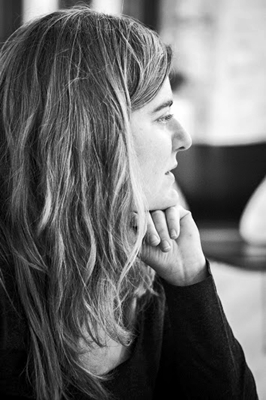
Eva Kekou: Can you give us some info about your work as an artist and curator and specifically your work at V2_?
Michelle Kasprzak: I was trained as an artist, but my art career feels many moons ago now. My first love was photography, and I spent many hours in the darkroom as a teenager. Later on I moved into live video mixing for performance contexts and parties, single channel video works, and integrating technologies like speech recognition and found objects into performance.

I was also curating throughout this time, though for many years it took a back seat to my artistic practice. Eventually I realized that I was more interested in curating and writing than making the artworks myself. Of course, one should never say never, so I may return to art making someday, but from that point onward and until the present time I focused full-time on curating and writing.
This was the mid 2000s and it was a pretty exciting time to be a media arts curator. It felt as though things were gaining traction. So many years after Cybernetic Serendipity had laid the foundations, we had exhibitions such as The Art Formerly Known As New Media curated by Sarah Cook and Steve Dietz to stimulate the dialogue about new media art and how to exhibit it, and take it all to the next level.
Fast forward to now: a few years later, I’m a curator at V2_ Institute for the Unstable Media in Rotterdam, the Netherlands. V2_ loomed large for me as a young undergraduate in Toronto studying new media – it was this far away place in a city I didn’t know with this massive reputation for doing edgy, interesting things. I wouldn’t in my wildest dreams at the time ever imagine I would one day work there.
As an institute, V2_ has been through a number of key transformations and I think it’s interesting to map that on to what was happening at the time both in art and in society. It started in the 1981 as a squat (which was common in the Netherlands at that time) and the founders called it a “multimedia centre”. Sonic Youth, Laibach, and Einsturzende Neubauten played there. The “Manifesto for the Unstable Media” was written in 1987 and arose out of a dissatisfaction with the status quo and it said things like “Our goal is to strive for constant change”. Following the Manifesto, a series of “Manifestations of the Unstable Media” were created, which evolved into the Dutch Electronic Art Festival (DEAF), a festival which continues today. In 1994 V2_ moved from s-Hertogenbosch to Rotterdam and has remained there ever since.
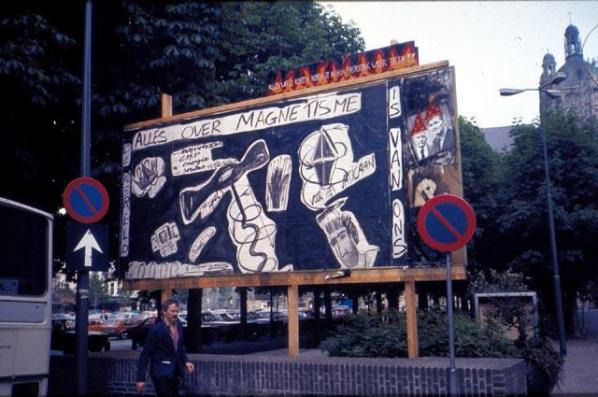
Around that same period of the mid- to late-90s, the growth of internet access and support for artists working with networked technologies caused V2_ to change its focus in this direction. In 1997, V2_Lab opened as a hub within V2_ to initiate and support the production of artistic projects investigating contemporary issues in art, science, technology, and society.
EK: So today, in this age of ubiquitous technology and information, where does an institute like V2_ find its place?
MK: I see media art as a category splintering and dissolving, with bits of its ethos absorbed into design, contemporary art, craft, and hacker culture – and vice versa. One way to find a place in the world is to stay true to the origins of V2_ in terms of its squatter ethic. So for example, we (myself and my colleagues, particularly Boris Debackere and Michel van Dartel) recently rewrote the mission statement of the Lab, declaring it “…an autonomous zone where experiments and collaborations can take place outside of the constraints of innovation agendas or economic and political imperatives.” Which is not to say that anything goes, but states explicitly that we’re especially open to people looking for a home for a risky or unconventional idea. Also, following on from several years where V2_Lab hosted residents based on three fairly technologically-driven themes (wearables, augmented reality, and ecology), the Lab has taken on a new direction of being methodologically-driven, and looking at themes like re-enactments, design fiction, and extreme scenarios.
I think it’s a key shift, because in order to “strive for constant change” as we said in the original manifesto, linking to any one technology of the moment seems too static and limiting, as well as reducing our reach into areas with interesting and relevant artistic research occurring, but which might not have much technology involved in an apparent way. The fact is just about everything being made right now is a product of the technological age we live in, so it’s more useful to think in terms of methods and approaches rather than whether something fits a classic definition of what media art is or not.
Take for example one of our latest commissions, Paper Moon by Ilona Gaynor in collaboration with Craig Sinnamon. Ilona and Craig were at V2_ for a few months at the end of 2013 and both have design backgrounds. The work, to describe it in a formal sense, is a series of objects and paper-based work arranged in a specific fashion along with a short screen-based animation. This seems a little different than what one might expect to see at V2_, except for small clues in the creation of some of the items (the animation is generated with 3D animation software, some of the objects have been 3D printed). But more significantly, in its thematic Paper Moon enters the realm of the unstable by exploring the emerging legal definitions and loopholes of outer space – particularly the treatment of the moon and other celestial bodies. Our legal system on Earth, as Ilona put it “…has no definition for what ‘Outer Space’ actually means, what it is, and where it is. The problem we face with such literal unmarked territory is the emergent field of ‘Space Law’ becomes genuinely speculative.”


Ilona’s residency was part of V2_Lab research project Habbakuk, about Innovation in Extreme Scenarios. The Innovation in Extreme Scenarios research thread was generated in reaction to the introduction of an innovation agenda for the arts as part of the Dutch government’s ambitionto be “one of the world’s top five knowledge economies” by 2020. As a way of directly addressing this policy direction, V2_Lab began undertaking research into the nature of and appropriate contexts for innovation through a series of expert meetings, workshops, site visits and interviews over the course of 2013-14. The final outputs of the project, which will comprise project commissions and a final publication, will be used as a tool to engage with the policy conversation on innovation in a more profound way. So we’ve been doing work on this at home and abroad, holding expert meetings and interviews in the Netherlands, Canada, Hungary, and Denmark.
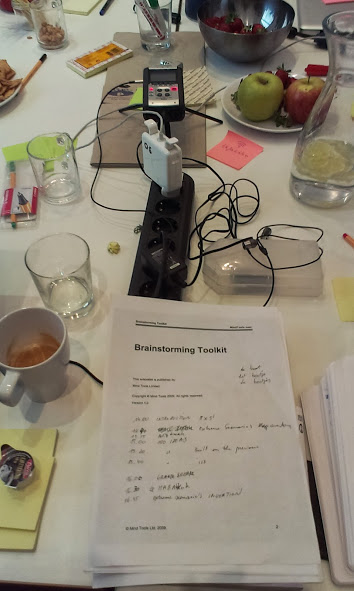
The Dutch policy context explains the “innovation” part, but the “extreme scenarios” part came from somewhere else. For that I was inspired by the World War II story of the Habbakuk aircraft carrier which was commissioned by Winston Churchill. The Allies were plagued by German U-boats, and Churchill desperately needed an innovative solution to this particular problem. In the extreme scenario of war, Churchill authorized the production of a radically innovative solution: building an aircraft carrier made of ice – specifically Pykrete, a frozen mixture of water and sawdust.
Pykrete seems like ordinary ice but the addition of sawdust makes it into a kind of wonder material that takes longer to melt and invulnerable to bullets. In the end the massive ship, which was to be christened “Habbakuk”, never saw the theatre of war but considerable effort was put into developing a prototype in total secrecy deep in the Canadian Rockies.
Inspired by both the Habbakuk story and our own policy situation brewing at home, some of the questions we’ve been trying to answer with this research are things like: What are the best contexts for innovation to take place? What are the myths surrounding how innovation occurs? Does the pressure of an extreme scenario inspire innovative solutions, or only eccentric, unrealisable concepts? What’s the U-boat problem of today?
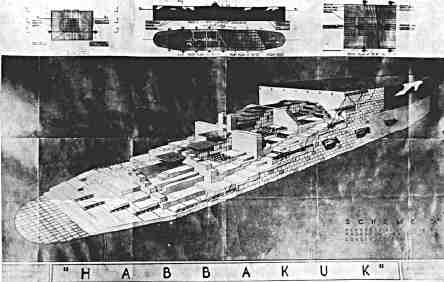
The theme of Innovation in Extreme Scenarios is also being explored in the programme that I devised and curate at V2_ called Blowup. Blowup refers to a number of things: the way that you can blow up a photograph, a balloon, a situation, and of course – the Antonioni film. I see it as a container that presents things in a slightly different way each time, and that its main remit is to examine the things that are changing the way we live now, or reinforcing the status quo of today. The formats for Blowup have varied a lot: from a workshop, to a talk show, to a talk show within a talk show, to a five day booksprint, to an exhibition in a pop-up space. The topics have been equally eclectic: art for animals, outer space, journalism as an art practice, object-oriented ontology, and so on. The most consistent element is that each event has an eBook released along with it, and that these eBooks explore the topic in a little more depth, but also combine previously released material with newly commissioned material. We all have bulging bookshelves and intend to always read something later – by bringing relevant old texts back into the forefront, I hope to give them a chance for a second look (or a first look if you missed it when it was released).
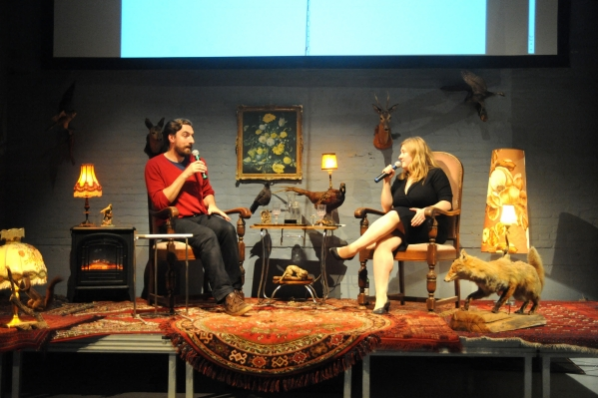
EK: What are your hopes and dreams for the future?
MK: For the future, I think new ideas are incredibly rare, and that doesn’t bother me at all – what interests me is that dreams that were previously impossible are becoming possible, and so my passion continues to be seeking out the inventive eccentrics with grand master plans, and being a part of realising that. Churchill dreamed of ending the war with a boat made of ice more than ten times the size of the Queen Mary. These are the kinds of big wild dreams – in scale and in scope, if not in my discipline – that I dream of.
Featured image: Pablo Garcia’s presentation at Resonate 2014
Resonate, the Belgrade, Serbia digital arts and design festival, now in its third year unfolds over a long week at the start of April. Its central tenet is to bring together “artists, designers and educators to participate in a forward-looking debate on the position of technology in art and culture.” It is also an emerging and challenging festival that raises many more questions than it answers. The festival starts off with a number of workshops held by practitioners for practitioners. Foregrounding the demystification of the creative process immediately sets it apart from any number of other media arts festivals. Whereas many festivals might be broader in their approach to what the digital can include, and focus on themes that don’t always feel like they directly influence what happens in the festival, Resonate doesn’t give itself a curatorial focus. But, and so, the workshops set the festival off with a focus on making. Most people who come to Resonate are just that: makers of work. It feels as though there are fewer curators, producers and academics here than you would expect.
Resonate, the Belgrade, Serbia digital arts and design festival, now in its third year unfolds over a long week at the start of April. Its central tenet is to bring together “artists, designers and educators to participate in a forward-looking debate on the position of technology in art and culture.” It is also an emerging and challenging festival that raises many more questions than it answers. The festival starts off with a number of workshops held by practitioners for practitioners. Foregrounding the demystification of the creative process immediately sets it apart from any number of other media arts festivals. Whereas many festivals might be broader in their approach to what the digital can include, and focus on themes that don’t always feel like they directly influence what happens in the festival, Resonate doesn’t give itself a curatorial focus. But, and so, the workshops set the festival off with a focus on making. Most people who come to Resonate are just that: makers of work. It feels as though there are fewer curators, producers and academics here than you would expect.
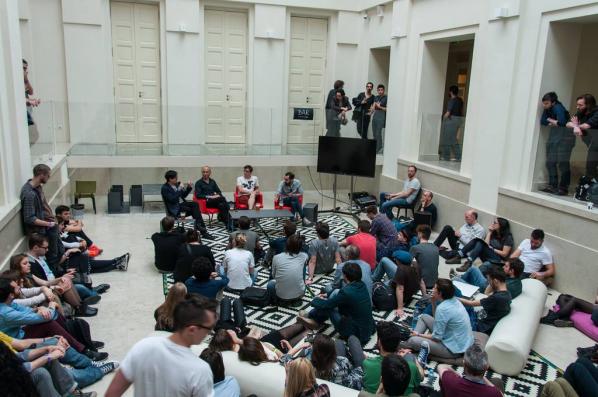
This year, shifting location from 2013’s Dom Omladine, perhaps learning from some of the problems of last year’s over-heated and occasionally too-tightly packed events, they have moved to a spread of venues, with the base being the Kinoteka Cinema, a sleek-looking modern building with a number of different spaces. Any decent festival has a spread of overlapping events making it impossible for one person to attend everything. Resonate makes no apologies for being just as packed with events as any other festival. The one time it might be possible to sit and spend a day in one place is if you’ve managed to get on to a workshop event that takes place on the Thursday. Once the workshops are over though, Friday kicks off with the panels and presentations. Choreographic Coding discussion, led by NODE Forum’s Jeanne Charlotte Vogt opened the panel discussions. A broad ranging talk with Raphael Hillebrand, Florian Jenett, Peter Kirn (CDM), Christian Loclair and Klaus Obermaier, (returning again after last year’s Resonate, possibly being an ongoing presence at the festival). All of the panel talks took place in the central lobby of the Kinoteka, which proved to be a terrible choice for anyone who wanted to actually hear the speakers. At times the discussions descended into a barrage of mumbles blending with the sound of people emerging from surrounding presentations and the poor choice of PA equipment placements. A shame, as the themes for these were well chosen, including Ways of Seeing, chaired by Greg J. Smith of HOLO magazine, and Generative Strategies, across the Friday and Saturday. The best laid plans of mice and journalists. I had planned to interview a number of presenters during the event, key amongst them was Pablo Garcia, who was on a panel and presented his own work on the Saturday. Apart from a brief conversation, we finally caught up over email several days later. I fired a number of questions at him, which are dotted across the rest of this review.
Do you find that Resonate offers something different than some other digital festivals? If so, what might that be? “It feels a lot like some of the better festivals I have seen, like EYEO. It is selecting from the best digital artists/makers out there, and giving them free reign on the stage to talk and share. The city has a great vibe and the overall feel is truly a “festival”, and not so much a conference or academic gathering.” ~ Pablo Garcia.
Friday’s talks included Cedric Kiefer (Onformative) giving a presentation in Gallery of Frescos, a short hop and stumble from Kinoteka Cinema. I’ve always enjoyed the juxtaposition that occurs when digital media is presented in contrast to, in this case, a venue “exhibiting in one place the highest achievements of Serbian Mediaeval and Byzantine art.” In other words, old stuff that enforces the modernity of the digital work we are being shown. Kiefer’s presentation covered some of their major projects including their work for Deutsche Telekom which used the company’s Facebook interactions to create beautiful data visualisations (Facebook Tree – 2013). There’s an unabashed acceptance of the interaction between corporate funding and creativity on display with many of the presentations. It’s something which never provokes debate, at least not in any of the conversations I had with participants or the panels I attended. Maybe that’s no longer ‘a thing’ that concerns creatives and the money required for some of the bigger projects has to allow for corporate sponsorship? I’m not suggesting we shouldn’t embrace funding from wherever it comes, it would just have been nice to have some debate around it.
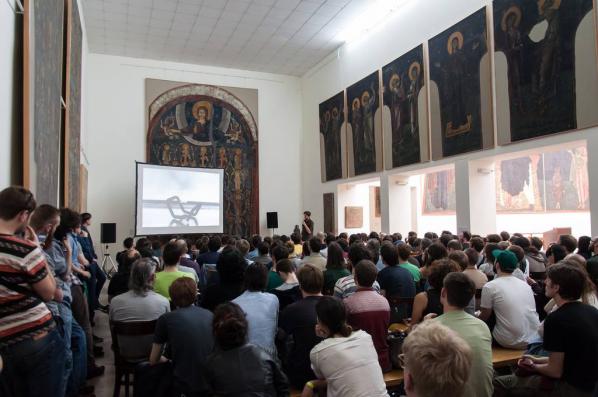
The schedule for the whole festival is broad and busy. There’s no chance of making it to every presentation or discussion, which is a great reason to go with others or to make an effort to talk to other attendees about what you’ve seen. The festival is a research port of call for many established, practicing digital artists. The UK’s Ludic Rooms have been to the past two festivals and consider it an opportunity to engage and re-establish contact with their peers in the community. “It is a coming together on an international scale with a thoughtful focus on practice,” reckons Ashley Brown, one half Ludic Rooms. Co-Director Dom Breadmore adds, “for us, Resonate has quickly superseded other events to become an annual pilgrimage for discussion and inspiration.”

One of the final presentations of the festival is by Daito Manabe in the Kolarac, another add-on venue of the festival, again an improvement on last year’s Dom Omladine. Daito’s work reflects something of the current state of digital media work. His presentation includes his (literally) home-made research videos, as well as the documentation of bigger projects. Whether he’s attaching electrodes to his own face to see what the effect is (hilarious facial distortions in this case), or working with dancers to create a drone/dancers piece, there’s humour and an enquiring mind at the center of his work. Daito showed his Ayrton Senna project, using the data transmitted from Senna’s car during his world-record lap in 1989, an ambitious and challenging project, least of all being the decision to erect it on the original racetrack. The data is used to trigger LEDs and numerous speakers laid out on the course. The LEDs follow the path taken by the car, while the sound is the engine accelerating and decelerating as the car would have taken the corners. It’s a ghostly piece, at once recreating that frustration that race fans must have of just having missed the car and a reminder that this is an event that happened many years ago. An echo of the past. Data mining, big data, is like this, in most contemporary projects. Data visualisation is a zombie, rising up to challenge the present. And like all the best zombie films, it can be a metaphor for our own rampant consumerism and reliance on technology. Still, at least in the hands of someone like Daito, our guilt is assuaged by humour.
What is your own take on the current landscape of digital media/art/design? “It’s an exciting time, for sure. Not only because there is so much digital access today for all to experiment with. We are starting to see makers move past the “wow” phase of tech and really start to integrate digital techniques into various historical techniques. Watching digital work cease to be about digitality will go a long way to opening new avenues of exploration.” ~ Pablo Garcia.
In those important few hours after a festival when you make your way back home, you finally get a chance to take stock. Thoughts crash over you in what better place for free-form thinking than the nowhere of airport waiting zones. In the neverzones I realised that what I’d thought was my frustration with Resonate, was actually the thing that gives it a unique flavour. Resonate doesn’t present a theme and then hope to find an answer through precarious curation of speakers who most likely will follow their own path anyway. What it does do, and does well, is ask questions that might not have answers. The focus on knowledge and learning gives attendees a broad enough palette to choose their own ambitions for the festival. There isn’t any guided pathway through the diverse range of speakers. There are many things that Resonate could do better. It would have been nice to see more actual work in the various spaces. Line of Sight, a collaborative project by Kimchi and Chips and Nanika, (produced by CAN_LABS and Resonate Festival) was installed and produced for Kinoteca goers during the festival, giving a taste familiar to many attendees, of the stress of having to deliver a working project to a tight deadline. Thankfully, they did so. More projects would have been nice though. Even the digital needs to explode out of the screen and smear itself across a few walls or public spaces, obstructing and challenging people around the venues. After all, contextuality is nine tenths of the art law. Equally, some of the audio/visual problems need addressing. Complaining about them seems like a mean sideswipe, but these are the things that leave people with the suspicion that a festival isn’t as bothered as it should be. Resonate does care about attendees, as is evidenced by the free workshops and focus on helping to develop practitioners. It reflects this in its very DNA as an ever-becoming environment for creatives. And besides, the good stuff always happens in the rough and frayed edges. Resonate needs space and time to stretch and breath and see what it can become, just as Serbia, despite a rich and ‘interesting’ history (Belgrade is one of Europe’s oldest cities) is still finding its feet in the modern world (it applied for membership of the European Union in 2009). The festival supports emerging digital media practitioners by accelerating interaction with other countries to support the country’s upper-middle income economy with its strong service sector economy.
What was your experience of Resonate? “Resonate is a jam-packed, head-spinning experience. So many amazing people showing all their goodies in tightly packed spaces. It’s a lot of fun. Caveat: don’t go expecting to see everything. So many events and talks are happening simultaneously, you can’t see it all. Personally, I found it incredibly valuable to be able to show my work to a really talented and smart group of people to get solid feedback on what I do. I learned a lot by presenting and by seeing sympathetic artists.” ~ Pablo Garcia.
As the festival evolves, it would be nice if it smoothed out some of the frayed edges. But maybe this isn’t possible without allowing the freedom the open spaces allow for the fun stuff to happen. As Daito Manabe’s presentation showed, the open, unordered spaces are where all the best artistic developments take place.
The artist and curator Art Clay was born in New York and lives in Basel. He is a specialist in the performance of self created works with the use of intermedia and has appeared at international festivals, on radio and television television in Europe, Asia and North America. His recent output focuses on large media based performative works and spectacles using mobile phone devices. He has received prizes for performance, theatre, new media art, music composition and curation. As an educator, he has taught media and interactive arts at various art schools and universities in Asia, Europe and North America including the University of the Arts in Zurich. He is the initiator and Artistic Director of the ‘Digital Art Weeks International’ and the Virtuale Switzerland.
Eva Kekou: Could you tell us about your work and what inspires you?
Arthur Clay: The question about inspiration has been posed to me before and most often in the moment when people first see the program that the Digital Art Weeks (DAW) is offering. As an artist I am very much inspired by the every day. I think it is important to be aware of the things around you and by so doing, my artwork seems to have more of a present day dialogue and the events I curate more to do what is actually going on in the society around me. So basically, everything and nothing and all the things in between inspire me. There are no rules, but with a lot of effort to try and come closer to things might be the one I apply the most.
On the one hand, I am a practicing artist and most of this work is concerned with sound. On the other hand, I believe that curation is an art in itself and requires a high level of creativity. It is easier for me to make an artwork in comparison to harmonizing a group of artworks. The two meet in the fact that I grounded the DAW projects in order to provide a platform for my own work and that of others, who think in like minded ways.
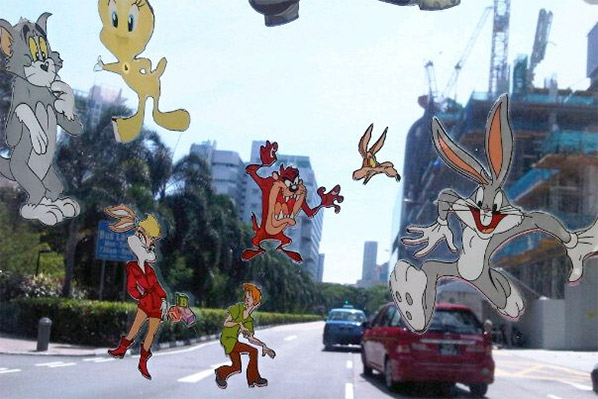
EK: You were the curator for the Augmented Reality exhibit “Window Zoos & Views” in collaboration with the participation of the School of Digital Media and Infocomm Techology from Singapore Polytechnic. On the project site, it mentions that the main element of the project was inspired by an image of a car driving down Singapore’s legendary Orchard Road. Could you tell us a bit more about this and the project?
AC: As DAW Director, I am confronted with the same situation each time we bring the festival: Representation and integration. By representation is meant that we have institutions both public and private that act as stakeholders and in turn expect a high level of visibility; talking about integration is much more complex, because there are many levels of integration that must be addressed. First off, the festival structure demands that we integrate local artists into the program along with the international artists participating. Integration of local artists can also mean or entail a high level of knowledge and skill transfer. We do all this during what we like to call the “Exploratory Phase”, which is basically entails dropping the DAW team into a unfamiliar city and making every effort to make it familiar. This includes becoming aware of the general culture the festival will address, how digital that culture is, the art and non art spaces that will become the stage of the festival, and of course trying to find out who is doing what in terms of arts and technology.
To get back to your question about the image of the car driving down the street, the most important element of integration is becoming aware of what is going on in the world of things in which the festival is to be presented. The car we are talking about was a car whose windshield was plastered with cartoon stickers. So, imagine you’re self-sitting at the wheel of that car driving down Singapore’s Orchard Road. It is a really surreal experience; the stickers take on a kind virtual elelment as it floats down Orchard road. The image sparked my imaginations and the AR Parade project was born, which was a very important part of the “Window Zoos and Views” exhibit. Basically, the AR Parade mimicked the effect of the stickers on the car window, but instead of a car windshield, we used an iPhone app to view the images. It was very cool, popular on the street and got a lot of clicks.
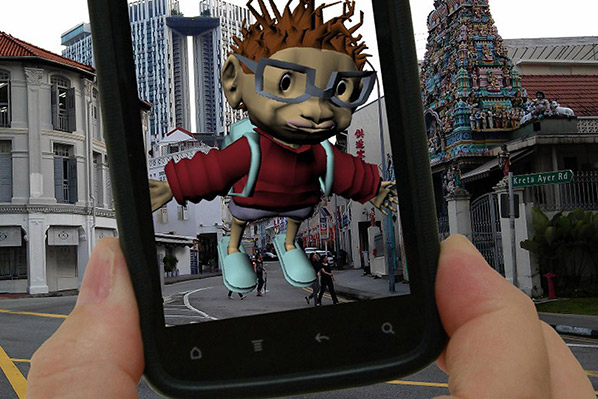

EK: There were various artists in the festival showing Augmented Reality art as installations. This included artists such as Tamiko Thiel (DEU), John Cleater (USA), Will Pappenheimer (USA), Lily & Honglei (CHN), Marc Skwarek (USA), Lalie S. Pascual (CHE), John Craig Freeman (USA), and Curious Minds (CHE). It must of have taken a lot of time and energy to organize this, especially the technological aspects of the project. How difficult was it to set all of this up?
AC: In one word: impossible. It is new area of technology, a new approach to curating art, and above all you are dealing with a non-art public – basically anyone who is on the street. That is a big challenge. Add to it the new type of management skills that such an international project work requires and I think you are close to the impossible that I am referring to. For such exhibitions, “Management 2.0” skills are a necessity. The artists, the tech people, and the curators and admins meet and work solely in virtual space. So there are no walls, no tables, and there is no going for coffee together after the meeting. It is a different world from all sides.

Another interesting aspect of this work is that you have to develop a feel for the city and develop a dialogue with it. For the Hong Kong show we did for SIGGRAPH Asia, Monika Rut and I spent about a week working on site, visiting the different areas of the city to check things out and to get a feeling for which works should go where and why. We travel with a lot of special equipment so that we can make tests on site and produce a mock up of the exhibition and test how the experience of viewing the exhibit will be. It is very inspiring but exhausting work and the dialog between Monika and I helped greatly in making all the decisions. Basically, we get to know the cities we are working in quite well and the kick back is, you get to know where the best coffee houses and local restaurants are.
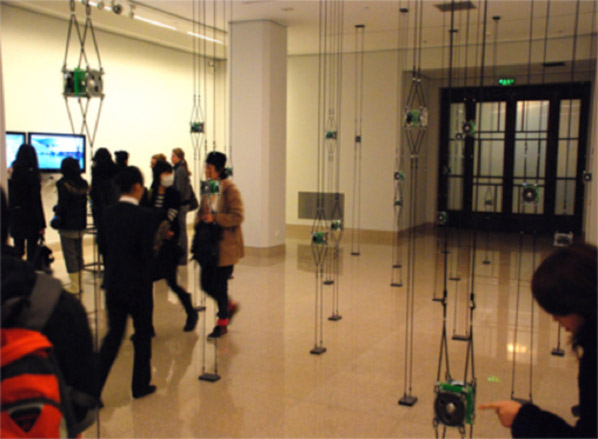
EK: Why hold the DAW in Asia, and what kind of differences do you experience culturally when working in Asia compared to working in Europe?
AC: The DAW is at home in Asia and much of our curating has to do with having visitors get pro-active. This means that it is not just about looking at an artwork, it also entails actually touching the artworks in many cases. In Asia, the museum visitors are not that schooled in museum etiquette. They like to touch things and this is great for the kind of work we like to do. Things break, but it is kind of a “I Like” thing for us.
The other aspect to consider is that you have a language barrier, because no one is going to understand anything if it is not translated. Here, it is also important to know that the approach Europeans take in terms of explaining artworks, does not really come over so well in Asia. Things are often inspired by poetics of nature in Asia and are much less conceptual than works coming from Europa.
Last but not least, the role of size also plays a large part in Asian arts. When a dynasty was at its peek, it produced very large artworks, monuments etc. So size is historically a sign of wealth and prosperity in Asia. When a dynasty fell, they produced much smaller works. So the bigger the better, so to say. For a European artist this is completely meaningless, however, bigger artworks have more visibility. So when you are curating group exhibits in Asia that artists from diverse countries, it is a challenge to keep balance in terms of impact of the works.
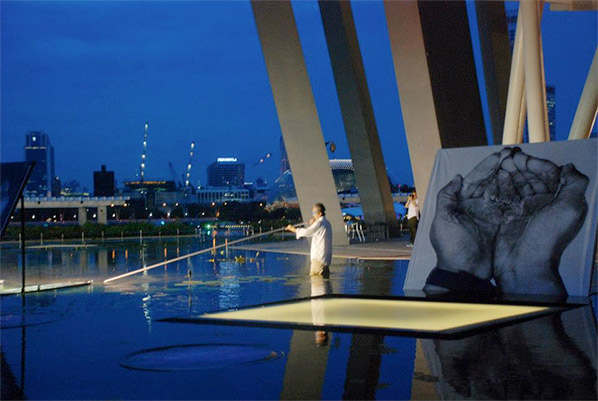
EK: Getting back to There DAW AR Float Parade, which was the first of its kind and celebrated as the coming age for Augmented Reality art. Could you tell us more about this aspect of the festival’s project and how it turned out?
AC: Knowledge transfer plays a major role in getting a project like the AR Parade to work. The DAW has an “OutReach Program”. This is a program that invites creative leaders from around the world to hold workshops before or during the festival. The contents of the AR Parade in Singapore were the results of a workshop with the AR artist John Craig Freeman and the Curious Minds group. John Craig dealt with the technical details and the bootstrapping a group of twenty-five creative industry students from the Singapore Polytechnic. The members of the Curious Minds art group hung around, integrated the group into the DAW, taught the students about public interaction, and came up with how to go about actually making the AR Parade happen and come to life.
The proof of a good project for me is when it takes on its own life on after its initial presentation. After the Singapore DAW, the AR parade went to Hong Kong and in 2015 it will be shown marching down the Bahnhofstrasse in Zurich as part of the Virtuale Switzerland festival – the world’s first festival “virtual biennale” that focuses solely on virtual artwork. For this we want to go a bit deeper into the creative industry world and see if we can act as modern alchemists and pick up on the float parade from New York and turn Miss Kitty into an artwork by shifting context from the real to the virtual.

Live- Performance “Beads are the Breath of the Landbridge “ with 1st Nations artists, Peter Morin. (DAW Singapore 2013)
EK: What is your view regarding the social contexts of the DAW?
AC: Basically, we are concerned about things and we make an effort to improve things that are within our reach to improve. For the festival in Taipei that will take place in 2015, we are really trying to make people aware of the role of creativity in general. Artists are highly creative people and the world really needs good ideas as well as a more social approach. We try to provide an answer to the question: “How is what we do of benefit to the society in which we are operating?” We think this should be more a question that businesses should be asking themselves. The future needs fewer companies who are “profit first, prosperity second” and more social entrepreneurships that embrace social needs as part of their business model.
EK: Could you tell us what themes and aims we can expect from of the DAW project in the future?
AC: We are off to Seoul, South Korea in 2014 and the theme there is “Creativity and Convergence”, which is a hot topic in Asia, because the government feels that innovation is intimately connected to being creative and thinking out of the box. I think they’re thinking of what makes the West tick and in an odd and ironic way to imitate – which is not exactly creative, but then again I have lot of respect for Asia and admire the work ethic of Asian people. So I think they will do well by addressing these themes. In 2015, we are off to Taipei and the theme (working title) there is “ImagiNation” and here we are trying to run a kind of “Skills-Festival” and platform creative businesses and the approaches that they have taken. It is a new approach and if you think about what Beuys said, “Everyone is an artists”, we might stretch it a bit and also say “everything is art.” At least this is the start and interestingly enough we are working with groups from the labor department in Taiwan, with knowledge transfer departments of universities, and with spin off and start up companies from Switzerland. It is very exciting and really what the DAW is about: creating a platform for research and experiments in social-cultural context.
Digital Art Weeks International
The DAW INTERNATIONAL’s is concerned in general with the bridge between the arts and sciences in cultural context with the application of digital technology in specific. Consisting of symposia, workshops and cultural events, the DAW program offers insight into current research and innovations in art and technology as well as illustrating resulting synergies, making artists aware of impulses in technology and scientists aware of the possibilities of application of technology in the arts.
The Virtuale Switzerland
The Virtuale Switzerland is a biennale for virtual arts. It focuses on the use of public space and mobile communication technologies, inventing “playful” new strategies to coax the public into the festival as “real” visitors with a unique experience of the virtual. The Virtuale Switzerland encompasses Artworks using Augmented Reality, Urban or Location Based Gaming, and Digital Heritage applications. It is interdisciplinary in nature, bridging areas such as art and technology, digital heritage and tourism, as well as digital culture and art mediation.
The activist initiatives of this art group from Vienna seem fascinating due to its art-tech philosophy, and it puts a smile on my face due to its pop attitude. In May 2011, Günther Friesinger, one of the creators of monochrom, gave a lecture to Media Art Histories students of the Donau Universität, which inspired me to arrange an interview with him. The first question I asked was about establishing monochrom. Günther explained that “monochrom came into being in 1993 as a fanzine for cyberculture, science, theory, cultural studies and the archaeology of pop culture in everyday life. Its collage format is reminiscent of both the early DIY fanzines of the punk and new wave underground and the art books of figures such as Dieter Roth, Martin Kippenberger and others. For a while now, monochrom has been venturing further than publishing alone and has been responsibly influencing people’s minds via film production, performances and festivals. If you are in Vienna in autumn by chance, look at the paraflows festival – one of the main projects run by monochrom.
Natascha Fuchs: How much has monochrom’s aims changed since 1993?
Günther Friesinger: We didn’t really develop a concept back then; monochrom has evolved. In the beginning, there was only the idea of publishing a fanzine – lots of other things resulted from that. At some point, we started doing performances. In the Internet’s primordial age, we developed a robot that could be controlled via the web, and so we began entering the art scene. Our first exhibition was in 1998 in the Secession, Vienna. Unfortunately, they didn’t have Internet access back then, so our little robot stood in a corner, immobile. The people visiting the exhibition back then still considered it interesting enough to some extent, but many things back then didn’t work the way we’d have liked them to work.
NF: Art, technology and philosophy – are they equal for monochrom? What is the starting point for monochrom’s particular initiatives?
GF: We are a political group that gives statements through different means, those of art in all its varieties. I think it is important for us to find a fitting medium for the right story. This is something that specifically characterises us as a group. There are many different actions implicated by that, such as writing plays, making a movie, producing a music CD or writing a book. Normally, people try to achieve excellence in one medium. With us, it’s the other way round. That’s why we’re active in so many different areas.
NF: Which historical background concerning the relationship of philosophy, art and technology is especially meaningful for you?
GF: A difficult question. I think that Guy Debord and the Situationists are those one could consider most fitting. Certainly also some parts of Fluxus are of relevance.
NF: To which media theoreticians do you refer in your practice?
GF: I think that as a theorist, artist and curator in media art, net art, digital art and culture, it is important to confront oneself with theorists like Kittler, Luhmann, Flusser, McLuhan, Rheingold and many more. However, it is not the case that we refer to one theorist or another in all our works. I think that this system of self-affirmation through referral is quite interesting – but I think that for myself, monochrom and for our audience, there is a value added by self-generated theories for our projects and the discourses they cause.
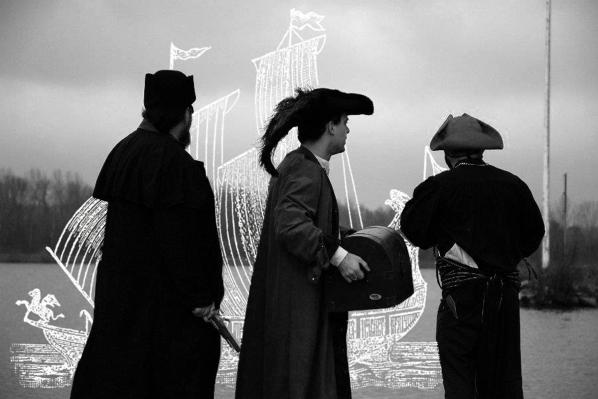
NF: What are international projects of monochrom? And what is the difference between monochrom audiences in Vienna and abroad?
GF: There are too many of those to be listed here. Since our big USA tour of 2005 we produce most of our projects bilingually in German and English, or only in English, in order to be able to have an international impact. Of course, many members of monchrom live and work in Vienna, and we also produce projects in Vienna, but our main focus is on our international presence. One of the big international projects, running since 2007 in San Francisco, is the Arse Elektronika: a conference on pornography, sci-fi, games and the development of technology. I would say that with the San Franciscans we’ve found the ideal community for such a conference.
NF: You call yourself “edu-hacker”. Why that and how is it connected with your studying and teaching experience?
GF: I have always loved reading, learning and continuing to further myself intellectually. I really enjoyed my studies and I enjoy sharing my knowledge and skills with my students. Universities are, in my book, places where it is possible to acquire knowledge, to reflect upon it, places of discussion and freedom. Because of the process of universities becoming more like schools, among other things caused by the Bologna Accords, those in my opinion are important areas that enable students to become self-reliant, critical people are struck from the curriculum. I’m trying to counteract this in my classes, trying to cause rifts in the school-like system, by using other methods of transmitting knowledge, using a great deal of humorous elements, and by always meeting the students eye to eye as equals.
NF: What is philosophical society in contemporary Austria now?
GF: Alive and kicking as always, I’d say 😉 One of the exciting things is that exactly now there are a lot of young, fascinating philosophers out there. The topics that I mostly concern myself with are, however, copyright, intellectual property, culture, art, media and technology.
NF: Is paraflows one of your biggest current projects? What’s the concept of this festival? Is it independent from monochrom activities?
GF: paraflows is surely one of the biggest projects that I am working on at the moment, apart from monochrom. monochrom helped to start and grow the festival in the first two years, as monochrom has done with many other projects worldwide. „paraflows – festival for digital art and culture“ has been established in the last seven years as a new annual festival situated between the Ars Elektronika and the Steirischer Herbst. It serves as both a platform for the young, local scene of digital art and culture and as an interface to international and renowned media art.
NF: How is monochrom activity is financed?
GF: We do get occasional subsidies for some projects, we get money from performances, the sale of our publications and sometimes the sale of a work of art, and recently we have also acquired crowdfunding. I’d say, however, that around 80% of the projects we do are not financed in any way and are purely done because we have fun doing them.
NF: Do your own curatorial projects serve in some way as a research method for you?
GF: I take the liberty that I only curate projects that I am very interested in myself. That is to say, projects where I have a very strong urge to explore the topic, to read, write and of course also to do research. That is probably the reason why I try to achieve a publication for each project that I curate, in order to give those who are interested in it some sort of preliminary report, a possibility to expand upon.
NF: Is activism capable to envision the future or does it just reflect, react on what is and has happened?
GF: It is getting increasingly difficult to be subversive. monochrom is fundamentally critical of the bourgeois world view. We examine it from a distance, dissociating ourselves from it. The question is: How do we get out? Our current late-capitalist aims for transgressions. That is to say that capitalism requires transgressions as a principle. Viennese Actionism, the most relevant cultural statement in Austria for the last hundred years, was doomed to fail at a certain point, because in the 60ies Austria still had a society based on discipline. One of the central strong points of monochrom: Finding the right story for the right medium could be a opportunity to deal with this situaltion.

NF: Which publications about monochrom you would recommend to read?
monochrom’s ISS. In space no one can hear you complain about your job. (2012)
monochrom’s Zeigerpointer. The wonderful world of absence (2011)
Urban Hacking. Cultural Jamming Strategies in the Risky Spaces of Modernity (2011)
monochrom #26-34: Ye Olde Self-Referentiality (2010)
Do Androids Sleep with Electric Sheep? (2009)
Pr0nnovation?: Pornography and Technological Innovation (2008)
monochrom: www.monochrom.at
paraflows festival: www.paraflows.at
(c) Natascha Fuchs is an independent expert in cultural projects management and international public relations, graduate of the University of Manchester (Cultural Management) in 2008. She has been living in Vienna, Austria, studying History of Media Arts at the Donau-Universität and collaborating with sound:frame Festival for audio:visual expressions, since her move from Moscow, Russia in 2011. In Russia she was related to MediaArtLab and Media Forum — the special program of the Moscow International Film festival dedicated to media arts, experimental films and digital context with more than 10 years history. As a researcher and practitioner, she works in a variety of topics and participates in different international projects focused on media arts, cinema and sound. Columnist and writer for several online magazines.
Featured image: Fundamental Forces by Robert Henke and Tarik Barri
In its current state “Fundamental Forces” is a pre-rendered high definition multiple screen projection with surround sound. The visual component is based on Tarik Barri’s ‘Versum’ – a self-programmed computer animation engine. And the auditive component comes from Robert Henke, using MaxMSP, Max4Live and Ableton Live, a software he co-developed. It has been initially commissioned for the RML Cinechamber system which consists of 10 1080p projections and 8 channels of sound (FF00 – FF01). A later version was adapted to work with 5-6 screens and a 5.2 soundsystem. This was used during the sound:frame Festival in Vienna, and it had a highly immersive presence.
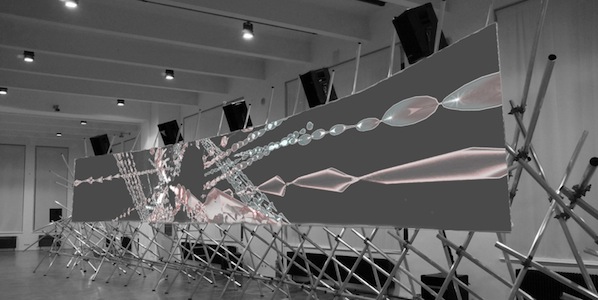
When experiencing the work I enjoyed the absence of narrative. Although I noticed some references alluding to concepts based on physics, and basic foundations of the universe. This led me to ask some questions to both artists about their “audiovisual research project”.
Robert Henke is active as composer, AV artist and professor in sound design at the University of Arts in Berlin. As founder and main member of his solo-project “Monolake”, he gained international reputation as one of the leading artists in the field of electronic club music culture. Henke has released more than twenty albums. His performances and installations have been shown and others at the Tate Modern in London, the Centre Pompidou in Paris, the PS1 in New York and the Experimental Media and Performing Arts Center (EMPAC) in Troy. His work “Layering Buddha” received an honorary mention at Ars Electronica in 2007.
Natascha Fuchs: “Fundamental Forces” is presented at sound:frame Festival this year and you worked on it together with Tarik Barri. How your collaboration has started?
Robert Henke: I was looking for Max programmer a few years ago. Tarik replied, but told me that he had no time for that, even if he would like to. However, later he sent me some video stuff he did and I thought that his work could be integrated into Monolake Live. That’s how it all came together.
NF: You call Fundamental Forces ‘an audiovisual research project’. What exactly do you call research? And how much of research involved into your life?
RH: The research part of it is simply the experimentation with the format: what kind of sound can be combined with which of Tarik’s visual ideas and vice versa. We try to find a common language. And since his work does not suggest a common narrative, we also need to come up with our own large scale structures. Where do we start, where do we stop? What kind of timeframes make sense? How can we shape transitions? Questions like this…
NF: You are involved into many different activities.. Is there anything what you like most of all? Music production, performing, visual ideas development, teaching students maybe? What gives you the feeling of ‘life is great and I am satisfied with everything’?
RH: This always changes, but I am most satisfied in moments when my own sense of achievement finds its counterpart in the perception of what I do in public. If I for myself gave a lecture which I felt was really good, and afterwards students come to me and share that notion, – I am happy. If I had a great day in the studio and afterwards play the music to some friends and they like it too, – I am happy. And if things simply do not work out the way I want to, if I have an idea, but every attempt to turn in into sound or visuals does not satisfy me, then I am most frustrated.
NF: You live in Berlin. How does the city and different generations grown up there change together with technology changes? You see many students probably for whom technology is something ready to use now, and it was different at a time when Ableton Live was not yet created..
RH: The biggest transition in general is from a situation that is characterized by a lack of tool in the early 1990s to the total abundance of tools in 2012. The question today is not: how do I do something, but rather: what am I really interested in? All is possible with current technology. Finding your personal language is the biggest challenge these days.
NF: Currently in the interview to Bleep you said that you have so many ideas to explore yourself in the next future. Could you share one of them, what is Robert Henke’s the next?
RH: The biggest project I am working on is a large scale laser and sound installation called ‘Fragile Territories’. It is a challenge in many ways; technically and artistically. I want it to be very good, it is an important work for me, and I still need to do a lot of research. Laser is a very limited media, and in order to create something that is more than a technology demo one needs to invest a lot of time thinking about what exactly to do with it and also find out how to make the best out of the limitations.
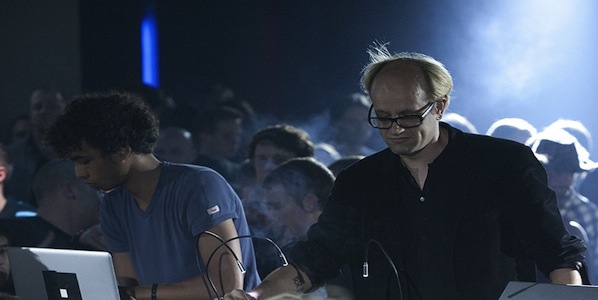
Tarik Barri is a Dutch audiovisual composer and software developer. He started programming at the age of seven and has been making electronic music since he was a teenager. After his first official musical releases at the age of twenty one, he quit his studies in biological psychology to pursue the study of music and technology at the Utrecht School of Music and Technology. During this studies he saw how the methods he used to create music could be adapted for the moving image. He programmed his own software to develop new tools for audio-visual performance, composition and data representation.
Natascha Fuchs: You live in the Netherlands, which is famous for successful promoting of media and digital arts/sound. Which Dutch institutions, festivals do you support?
Tarik Barri: I’ve been living in Berlin for a little while now, but definitely living in The Netherlands has been very very good for me to develop my work and my working methods. After I finished school, there was the WWIK, which is a government funding to help new artists develop their work. Also the Netherlands Foundation for Visual Arts, Design and Architecture helped me a lot by giving me a stipend to develop my work. Then there were organisations and festivals like TodaysArt, Sonic Acts and V2 that helped me introduce my work to the general public. Unfortunately many programs are getting cut these days in a new political climate where art in general seems to be regarded a left wing hobby for elitist snobs. Very sad, especially since I don’t agree that ‘art’ in general would be class related or have any specific political color.
NF: You were graduated from Utrecht School of Arts. What exactly did you study there?
TB: Within the Utrecht School of Arts I studied at their School of Music and Technology. And within thát school I graduated in Audio Design. It was the most technical study they had, where I learned about music programming, sound synthesis, acoustics, etc. Especially the programming courses in Max/MSP given by my teacher Marcel Wierckx inspired me to combine music, realtime visuals and programming into one discipline.
NF: What is your participation in collaboration with Monolake?
TB: Within Monolake the roles of Robert Henke and myself are clearly defined: he does the music, I do the visuals. But of course we discuss the visuals and music intensively together and there’s a constant dialog going on between both ourselves as individuals and the works that we produce. This continuous dialog has been of great value for my development in the last couple of years, both artistically and technically.
NF: The artwork which will be presented at sound:frame called ‘audiovisual research project’. What is this continuous research in your life, your aim in it?
TB: Both Robert and I constantly develop our own methods for the creation of music and visuals, and we research the aesthetical results that can be achieved through these methods. Through the combination of sound and visuals, I aim to create a sense of reality. To achieve this I’ve developed software that establishes 3d virtual audiovisual worlds. I then populate these realities with a multitude of objects of various shapes, sizes and other properties. Those objects behave according to laws taken from the real reality. While thus creating a completely new world, with its own sets of objects, elements of what we know can still be recognized within this virtual space. For me this contrast between the new and the known highlights the sense of wonder and possibility that emerges from the space between strict rules and the imagination that tries to defy and transform them. Through a window of strict and rigid laws we enter into infinite, colorful, playful, imaginary worlds.
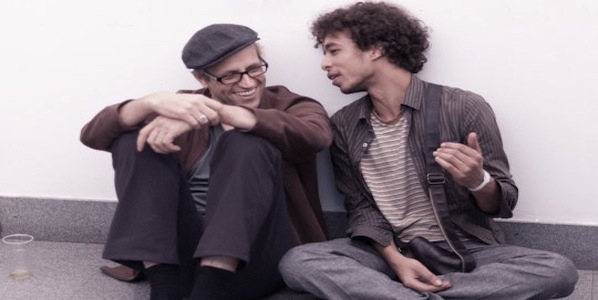
May / June 2012: Fundamental Forces in Canada, Montreal @ MUTEK Festival
Robert Henke aka Monolake: www.monolake.de
Tarik Barri: www.tarikbarri.nl
sound:frame Festival: www.soundframe.at
(c) Natascha Fuchs is independent expert in cultural projects management and international public relations, graduate of the University of Manchester (Cultural Management) in 2008. She has been living in Vienna, Austria, studying History of Media Arts at the Donau-Universität and collaborating with sound:frame Festival for audio:visual expressions, since her move from Moscow, Russia in 2011. In Russia she was related to MediaArtLab and Media Forum — the special program of the Moscow International Film festival dedicated to media arts, experimental films and digital context with more than 10 years history. As a researcher and practitioner, she works in a variety of topics and participates different international projects focused on media arts, cinema and sound. Columnist and writer for several online magazines.
MONODROME: Art’s debt in times of crisis
AB3 Athens Biennale 2011 Monodrome
Curated by Nicolas Bourriaud and X&Y
23 October-11 December 2011
Athens Biennale 2011 was the third edition of this institution and was entitled “Monodrome”, meaning “One way street” after the 1928 text “Eisenstrasse” by Walter Benjamin. The concept of the title is obvious; after the first Athens Biennale in 2007 prophetically entitled: “Destroy Athens”, the second Biennale “Heaven” in 2009, “Monodrome” comes as a closure to this trilogy. Why Walter Benjamin? Because he was a “defeated intellectual”, according to the curators. German-Jewish philosopher, an emblematic figure of 20th century thought, gave an end to his life at the french-spanish border while trying to escape the Nazis. “He was unable to overcome his personal dead-end as a subject”, says Poka-Yio of X&Y and he continues: “The title of this exhibition after Benjamin’s text refers to a collective dead-end” currently at stake and it’s only possible fate: a cloud of doom. “Monodrome” aimed to provoke debate around “something that has fallen apart, but to also offer the possibility of a glimpse at something new to come”.
Indeed, this Biennale took place at a specific moment in Greek and global history, where all 20th century utopian narratives (i.e. modernism, ecology, metaphysics) are crashing, introducing to the whole world a humiliating and disturbing, both socially, as well as nationally, dystopian non-future. Athens, the cradle of democracy was – at the time – “rocking the world”, by suffering the experimental imposition of a non-democratic supernational regime stamped with the mark of over-privatization, a situation that immediately started spreading all over Europe. Now – that the exhibition has come to an end – nearly everyone on this planet feels that “the time” {our world – as we know it – has come to} “is out of joint”, “the very place of spectrality” (Jaques Derrida, “Specters of Marx: The State of the Debt, the Work of Mourning, and the New International“ Routledge, 1994: 82).
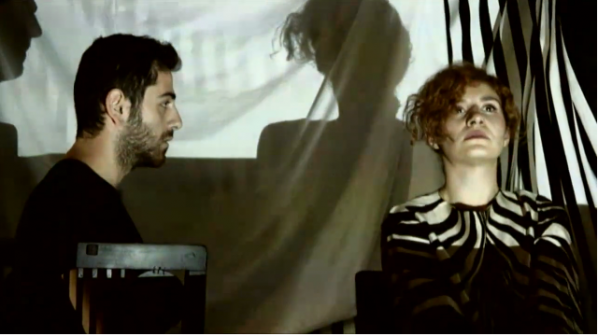
What’s art got to do with this? “Artists usually have premonitions of what’s going to happen, it is often that artists precede with their work social changes; artists are mostly intuitive, it’s at the core of their existence, this how they create” Poka-Yio says. Nicolas Bourriaud and X&Y had to deal with a situation that can be called no less than a “crisis management”. The exhibition was organized practically with no funding and was based mainly on the contribution of all participants and volunteers. The social events that were taking place during the very opening of the show were probably amongst those of the most significant importance in Greece’s postwar history. The energy and emotional vibe caused by this historical moment were the background of the Biennale and made it both a great challenge and a responsibility for the curatorial team.
Despite these critical financial and social circumstances, the Biennale was successfully realized against all odds and it can be said, that it was well received by the audience – an accomplishment on behalf of the curators who selected the works, planned and organized it. The curators of the 3rd Athens Biennale 2011 felt that “the widening situation for which Greece is a much derided yet overexposed case-study must become the focus of cultural investigation, in a way that it is no longer poignant – or even moral – to simply keep making exhibitions in the way that had become the norm in previous years”.
In order to address these issues, besides investigating the exhibition’s conceptual framework, the curators decided “to experiment with the Biennale exhibition format itself, by transforming it into an invitation to create a political moment rather than stage a political spectacle by making a call to a sit-in of collectives, political organizations and citizens involved in the transformation of society”. At another level, as the exhibition was designed and produced, its various stages of development were providing the basis for a feature film directed by Nicolas Bourriaud. Social media also played an important role in the communication strategy of this Biennale, as every event, talk, happening or performance was recorded and presented at AB3 youtube channel and one could follow it via facebook, twitter and other social platforms, as vimeo, flickr and tumblr.
The conceptual framework, upon which the theoretical thread was build, was a deep dive in the folds of Greek history. The curatorial strategy chose “to represent an ongoing crisis through historical fragments, a Benjaminian technique”. Walter Benjamin, provided with his text “Eisenstrasse” the tools for looking at history in a fragmented way, for he, according to the curators, introduced theoretical tools for looking into history with terms of “here and now”, by often making references to the city and to the popular culture of his time. “One way to talk about history is to include history”, says Nicolas Bourriaud. “The exhibition was structured as text; its narrative unfolds as one searches in the ruins and tries to read their meaning”, as one “tries to find out about new possibilities of giving meaning”.
Walter Benjamin, as a character, for the needs of this exhibition’s narrative concept was brought in a paradox dialogue with another character, a fictional one: Saint Expery’s Little Prince. This narrative plot brings this real life character, the emblematic intellectual, to meet the hero of a children’s novel, because: “a child can pose questions in an intelligent manner representing the inner child to be found in everyone” says Xenia Kalpaktsoglou of X&Y team of Athens Biennale co-founding curators. Little Prince poses all fundamental questions of “being” to the philosopher and the intellectual strives to give back the right answers. This imaginary dialogue took place in the form of sketches spreading like a graffiti-comic all over the walls of the exhibition’s main venue building. “As the intellectual retreats defeated in the face of the escalated distress, the Little Prince keeps questioning this condition with the disarming innocence and the plainspoken boldness of a child”.
The real protagonist of the exhibition, however, was Diplareios School, the main venue, a nearly disused old building located at the heart of downtown Athens in an underprivileged area, right across the City Hall and the old big open market. The local color and the smells of the market square, crowded with immigrants, ethnic shops and – especially at night – the presence of junkies, dealers and prostitutes was part of the exhibition’s “aura”. This building was literally used as a “panopticon” of both contemporary and ancient Athens and has a long history. It was built for the purposes of housing a School of Design, meant to be “the Greek Bauhaus”. Among many of its uses, it was requisitioned during the German Occupation and during the time when Athens was so badly over-built, it was hosting the offices of Urban Planning public service. The second exhibition venue was “Venizelos Museum”, a former military basis also used during the Greek dictatorship as the headquarters of torture investigating anti-regime citizens (former ΕΑΤ – ΕΣΑ).“The space is the artwork”, Bourriaud says. “Not just a venue. It’s previous functions manifest its character; it is a real protagonist”.
Diplareios School is an allegory of modern Greece surrendering itself to abandonment. Looking around all one sees is worn walls and graffiti, all one hears are the voices of protests and the ubiquitous noise of the city. The curatorial strategy for this Biennale was quite different from the two previous exhibitions, “Destroy Athens” in 2007 and “Heaven” in 2009. No big names of the international art market to be found among the artists. No self-referential patterns in this exhibition, other than “questions on the reasons behind the political crash, the crisis of moral values, the dead-end”. It was in fact a much more “introvert” exhibition, focused on the local scene, featuring mainly emergent Greek artists. The exhibited artworks in their majority came form Greece: “to include the local, to talk about local artistic production was one of our aims for this exhibition” according to Bourriaud.
Only to mention a few, Spyros Staveris, an emerging Greek photographer with a video art photo-documentation following the “Aganaktismenoi” social movement in Athens at its very birth. In the same room, “Ηommage a Athenes” a sound installation by Vlassis Kaniaris, with recorded sounds of the recent Athenian protests. One could not but mention the remarkable work of young Greek sculptror Andreas Lolis who is making cartboard boxes and felizol sculptures out of marble. “In my artwork, I try to make time stop. The reason why I am using marble, is because I want to make these fragile objects eternal”. “We all use cartboard boxes. People sleep in them. When I looked down from the windows of the Biennale venue and saw people on the terraces sleeping in cartons, it only came to me as a natural thing to co-exist with this situation – not to record it”. “This is the best time for Art. Not the art market, Art. When I recently saw the artworks of Athens Fine Art School graduates, I realized that the bubble-effect’s gone, now. These young artists, living this situation have grown into reality. There’s so much truth in their artworks”.
Another captivating artwork featured at the Biennale was “EXIT” by the Greek collective “Under Construction”, an installation of old rusty worn office desks; “in fact we present an allegorical image of Greece, using old equipment of public services, eroded now from abandonment. The hard to distinguish faded “EXIT” ‘statement’ does not exist, at least not literally”.
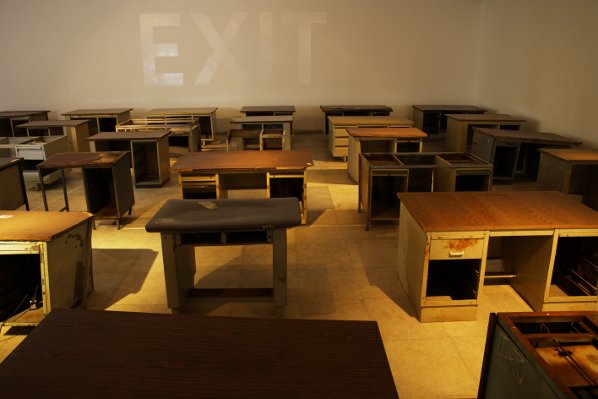
Rena Papaspyrou’s “Photocopies” is another stunning installation, where phone numbers printed on fragments of paper are posted on the wall. “Extending the decay of the wall, this piece secretly interacts with the graffiti notes on the wall waving alternative histories of the numerous uses of the building”. Thus the interaction between Papaspyrou’s installation and the Diplareios building creates a sense of dialogue, both in concept as well as in form.
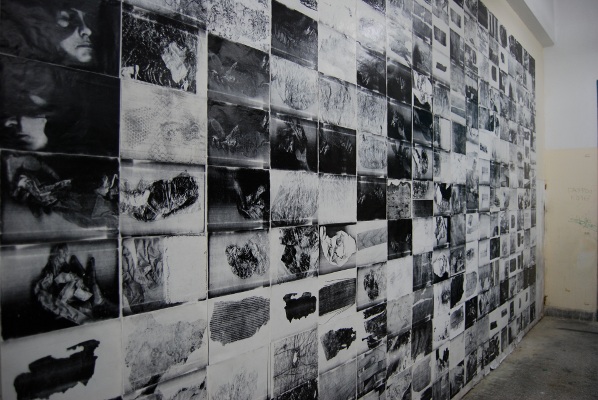
One may wonder whether any international artists were presented in this exhibition. Lucas Lenglet, Jakob Kolding, Norman Leto, Caroline May, Josef Dabernig, Józef Robakowski only to mention a few, and of course, Julien Prévieux’s “A La Recherche du Miracle Economique”.
“This is a fragmented exhibition”, Bourriaud says: “one can see in this exhibition various media, film, collages, photographs, sculptures, drawings, paintings”. Amongst the artworks, the visitor would encounter several objects that have nothing to do with art but were used as tools for the exhibition narrative: a time lapse, a trip down to memory lane. For example, an object used for this purpose was a placard, that the curators found discarded after a recent protest in Athens. On the placard was written: “WAKE UP BANANA REPUBLIC”.
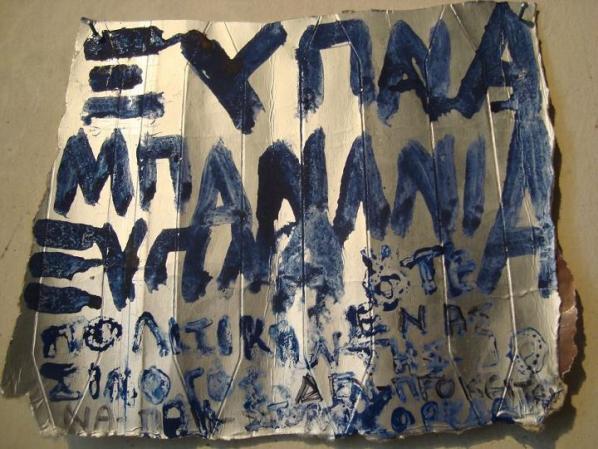
Also, the lost opportunity of Greek design; some of the works of students of Diplareios School were exhibited; they had been left in the old School. Posters by Greek National Tourism Organisation by Michael and Agnes Katzourakis. Pictures of Andreas Papandreou with Gaddaffi during the “good old days”. Air stewart and pilot uniforms from The Olympic Airways. In the attic of the old School, the crescendo of the exhibition’s narrative: as one faces the image of the ancient monument of the Acropolis through the dirty windows of the old School, a dead pigeon that was found there and was respectfully kept by the curators as a symbol, an omen.
The 3rd Athens Biennale 2011 was a double project; in both the form of an international exhibition and a feature film. The return of Walter Benjamin as a ghost that comes to haunt the city of Athens during this crisis period is the theme of a film directed by Nicolas Bourriaud. “It is a feature film, a film as an exhibition, a documentary based on actual characters, a docu-fiction and an experimentation with the platform of the Biennale”, says Bourriaud. “The film will be a work of fiction albeit based on real events. This is the first time that the relationship between contemporary art and filmic language is investigated in this way”. A catalogue will document the whole process of the 3rd Athens Biennale, and a DVD edition, including the movie and documents on participants’ works, will be published. Following the completion of the Biennale, the film in its final format will be distributed both in the art world and the cinema circuit. The executive producer of the movie is Kino Prod (www.kino.fr) in Paris.
Ironically, and sadly, “Monodrome“’s TV trailer was censored by the Greek National Broadcaster (ERT), who was also the major communication sponsor of the Biennale. The director of this 26’’ spot, Giorgos Zois, a talented young Greek filmmaker who has already won several international distinctions and prizes – according to his official statement as an answer to this act – attempted to “deliver the theme of the 3rd Biennale MONODROME (meaning one-way) in a series of slow-motion images of a forcibly accelerated reality depicting the one-way contemporary condition. Instinctively and suspiciously the national Greek television judged the content to be against the law that forbids “messages that contain elements of violence, or encourage dangerous behaviors, or insult human dignity”. “Apparently the daily transmission of aggressive porn-like governmental policies, does not count as an insult to viewers”. You can watch the trailer here:
Featured image: ‘Promised Land’ design of transmediale 2k+12
Everything is not connected was the title of one of the talks organised as part of the in/compatible symposium at transmediale 2k+12 (2012), precisely the keynote speech of Graham Harman for the section titled systems. But this year’s programme of transmediale was all about connectedness, or I’d better say, about a curatorial structure of connectedness and subtle linkage.
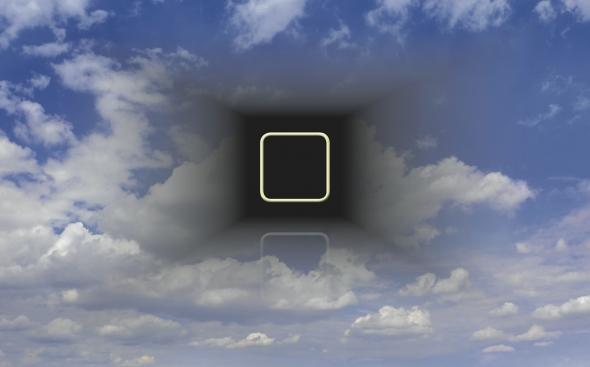
The festival’s format was one of visual and conceptual reminders, and this became evident at the very beginning and during the opening ceremony, in the auditorium of the the Haus der Kulturen on the 31st January.
At the moment of opening a power point presentation, the new artistic director Kristoffer Gansing seemed to experience a technical problem as his file would not open. A technical assistant was then called on stage to fix it, and while we all giggled and looked at each other thinking that this was somewhat like a paradox for a festival devoted to the exploration of art, technology and media culture, we soon realised that the dooming technical failure was a pretext for one of the Prepared Desktop performances by glitch-artist jon.satrom.
Thus, from the very start, we experienced what Gansing often defined as a festival which “is an incompatible being”, suggesting that the 25th edition of transmediale would be different, perhaps more oriented to a multidirectional engagement with its audience and, surely, aimed at making us aware of how much technology is intrinsically part of our everyday lives – physically, mentally and also politically. It seems that Gansing had worked towards making us feel like explorers in order to experience what he described in his curatorial statement as the “in/compatible moment”, the “moment of stasis” resulting from the clash between things that were supposed to flow and converge peacefully within a system. That unforeseeable clash generated by an incompatibility which, according to him, is to be seen (and perhaps also sensed) as a moment full of potentials, as a gap which allows a new rearrangement of the elements of a given system – be it artistic, social, economic or political.
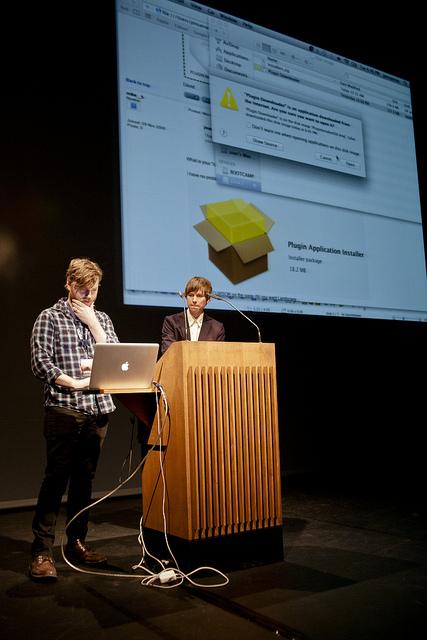
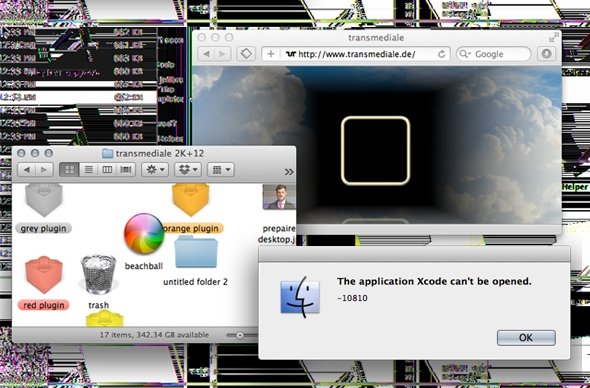
This ‘curatorial tactic’ marked the rich programme of transmediale 2012, which spanned from exhibitions to academic research networks, from online artistic interventions to talks and live performances – worth a mention is also the overall design of the festival’s contextual material, called the Promised Land design theme, which with its retro digital-pop aesthetic [1] seemed to have been devised to reinforce the idea of the clash, the tensions at work within the notion of technological convergence (“the myth” of contemporary society), starting from the very aesthetics of it.
The connectedness I mentioned above is very tangible when looking back at the main themes discussed at the in/compatible symposium – which was divided into three thematic segments:
systems, publics and aesthetics – in that they could be found as extensions across the whole programme, which in turn was developed across six sections:
1- the exhibition Dark Drives. Uneasy Energies in Technological Times curated by Jacob Lillemose
2- The Ghost in the Machine performance programme curated by Sandra Nauman
3- the video programme Satellite Stories curated by Marcel Schwierin
4- 25 Years, a series of events, amongst which talks and video screenings, about “areas of conflict between old and new” that were devised to mark the 25th anniversary of the festival
5- Featured Projects, a series of special parallel projects, such as web-based and site-specific
interventions
6- last but not least, the new addition of reSource for transmedial culture, an “interface between the cultural production of art festivals and collaborative networks of art and technology, hacktivism and politics” presented as a series of ongoing events (workshops, discussions, lectures and performative interventions) curated by Tatiana Bazzichelli.
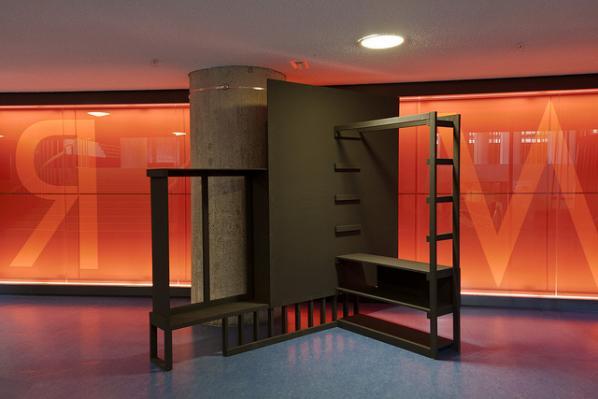
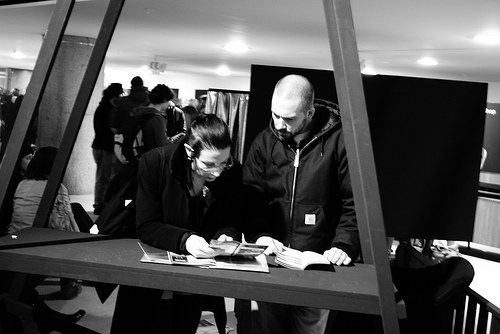
Taking a step back to look at the overall thematic framework of the festival before digging into the specifics of each programme, what should be emphasised is the effort that was made to strengthen the transdisciplinary nature of the festival as a whole. In fact, each section of the programme inserted itself into the wider discourse of cultural production; putting a stress on how deeply technology is intertwined with the every day while looking at the relationship between art and technology from a socio-economic and political perspective that was permeated by an historical orientation. And the latter is precisely what makes this 25th edition different from those I had experienced before.
Gainsing’s perspective – as it was often stated by his collaborators throughout the festival – is that of a media archeologist; and in this sense he occupies a specific place in the media theory-scape of the city of Berlin, which houses the Institute for Time Based Media (Berlin University of Arts) where Siegfried Zielinski is the Chair of Media Theory. As many might know, Zielinski is the theorist who coined the term (or better still, founded the field of) media archaeology with his book Deep Time of the Media (MIT Press, 2002). I would then say that the methodological approach of the artistic director, as well as that of the four festival’s curators, was the one which looks at a present “linked to a past pointing at a possible future”, adopting a perspective that is different and finds “something new in the old” rather than seeking “the old in the new” (quotes from Zielinski, 2002). This is probably the reason of the festival’s holistic character, of the existence of critical and aesthetic linkage between the various panel discussions and performances, research projects and art installations.
This year’s symposium, across three different but converging angles, looked at the tension between functionality and disruption in order to address how the gap existing between the two has been (and could be) “productively used” by artists, as well as by society at large, in relation to available technology – mostly digital and web-related.
The strong connection existing between all panels – grouped under systems, chaired by Christopher Salter; publics, chaired by Krystian Woznicki; aesthetics, chaired by Rosa Menkman– was given by the historical approach of their explorations into the present. Their positions were those according to which it is not technology that impacts society, but it is almost the reversal: it is society – and artists – who, with their behaviours and actions, transform it, generating a new language and new possibilities within established systems, or failing systems. One way to embrace this type of perspective was described by Graham Harman in his keynote speech: it is through differentiating “between background and foreground” and bringing the latter “into consideration”, through accepting obsolescence as something inherent to the state of the technological thing and through embracing the fact that mediums change, that new ways of thinking and understanding reality can be established.
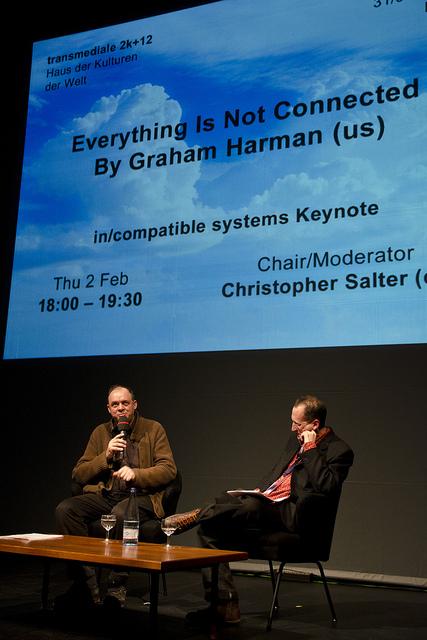
In this regard, the in/compatible aesthetics panels brought about interesting paradoxes in relation to media archeology and technological historicism, such as the necessity to move away from nostalgia for the past and avoid what could perhaps be termed as techno-romanticism. Through a series of panels, spanning from Uncorporated Subversion. Tactics, Glitches, Archeologies to Unstable and Vernacular. Vulgar and Trivial Articulations of Networked Communication, this section of the symposium presented a variegated array of artistic and research practices (from artist Olia Lialina to media theorist Jussi Parikka) that are concerned with establishing methods for challenging given systems, their codes and protocols, in order to establish new languages and modes of operation. All of them presented different artistic scenarios embedded in current socio-cultural frameworks, stressing the fact that “cultural history is shaped by users more than its inventors” (quote from artist and programmer Dragan Espenschied‘s presentation during the Unstable and Vernacular panel).
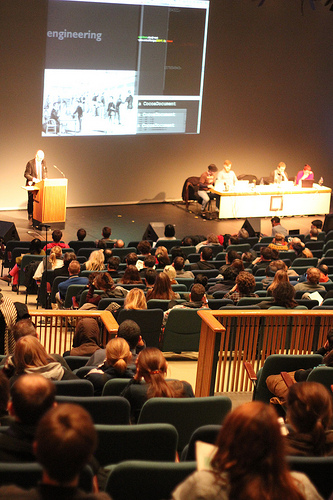
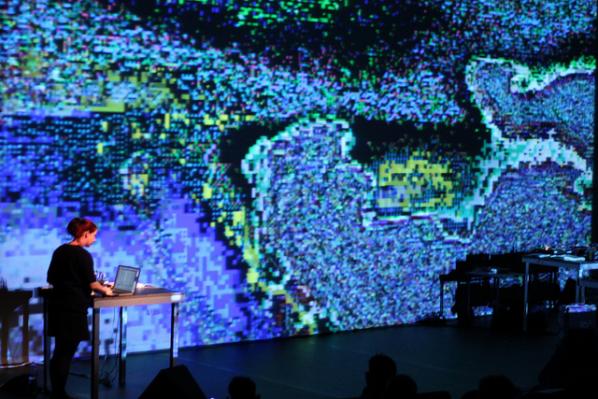
The publics section dealt with “forms of activism and social resistance” that emerge from incompatibility with the economic-political systems. In the instance of the Norifumi Ogawa in his talk Social Media in Disaster, during which he gave a very detailed insight into the “productive and effective” uses of social media during the recent Japanese earthquake and the consequent accidents at the Fukushima’s nuclear plant.
According to the exhibition curator Jacob Lillemose, Dark Drives “explores the idea that uneasy energies exist in technological times” and offers “a thematic reading and an historical mapping of the last fifty years, expressing a critical attitude to existing phenomena as well as exploring possibilities of reinvention”. And it does so with “no promise of overcoming” them (quotes from Lillemose’s curatorial statement).
In fact, the exhibition included works by 36 artists spanning different cultural fields as well as periods. The inclusions ranged from Ant Farm’s Media Burn, Chris Burden’s Doorway to Heaven and William S. Burroughs/Antony Balch’s The Cut-Ups (late 60s and 70s) to Art 404’s 5 Million Dollars 1 Terabyte, Constant Dullaart’s Re: Deep Water Horizon (HEALED) and jon.sotrom’s QTzrk (2010/2011), all while moving through the practices of artists attached to the net.art movement, such as Heath Bunting’s Skint – The Internet Beggar and JODI – the latter with a new light installation, LED PH16/1R1G1B, dated 2011–. Included were also works produced in the 80s by music bands like SPK with their Information Overload Unit. Not only, but the show also presented works which are usually not associated with the conventional art circuit, such as the TV programme Web Warriors produced by Christopher Zimmer (2008) and the music video Come to Daddy by Chris Cunningham/Aphex Twin (1997), along with, as a reversal, old(er) media-oriented work, such as the series of computer prints Leaves by Sture Johannesson, which can be read as early pieces of conceptual art.
This condensed list is to say that the amount of artistic and cultural material on display in the exhibition and the trajectories that it opened were broad to such an extent that Dark Drives functioned more as a general narrative survey than a show with a clear proposition. It was a survey of how uneasy energies might materialise as consequences of the modes and methods in which technology is used and understood, with no much distinction drawn between technology in electronic, computational or digital times.
Dark Drives did not aim to address further its initial statement, nor to narrow down the kind of relationships (and their reasons) between historical instances and contemporary ones; and from my perspective this was its flaw. However, this is the kind of exhibition that a festival like transmediale eventually needed, because to my knowledge this sort of display and curatorial approach had not been presented before: an exhibition which finally embraced the inclusion, with no hierarchies or differentiation in terms of choices of display, of works conventionally shown in gallery spaces along with those traditionally related to (ahem) the still-existing ‘niche of new-media experts’.
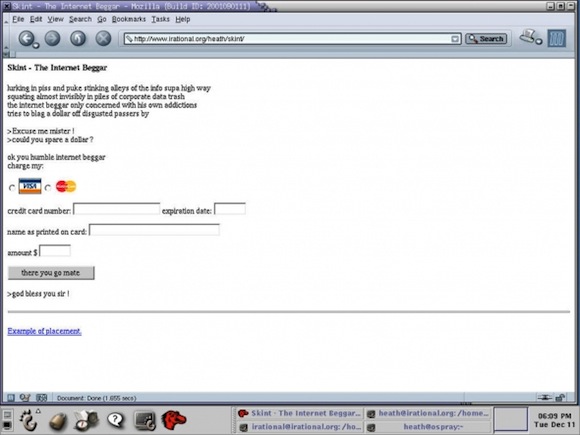
Dark Drives might not be a very daring exhibition if placed outside the context of a media art festival like transmediale, but it is certainly almost subversive in this context, and in comparison with its precedents. The exhibition installation was clever and atmospheric and, as it was for the festival’s format, it was dotted by visual and aesthetic reminders. I’ll give you an example amongst many and various ones that you could have spotted in the show: formulas by Peter Luining (2005), which is a video about manipulating a screen-grabbed image in Photoshop till it becomes a black screen, was shown just a work before jon.sotrom’s Qtzrk (2011), another video based on the process of image deformation – in this case through the use of QuickTime 7; the latter, was, in turn, shown just another work before Heath Bunting’s Skint – The Internet Beggar (1996), a website that operates as a service through exploiting the potentials offered by the network system. The three works all adopted the framework of computer desktop as a display platform for their artistic interventions, but also as a production space. And although each artist’s agenda and research area were different, their proximity made these distinguishing elements more evident, highlighting various ways of activating modes of production that diverge from those of the system within which these artists operate.
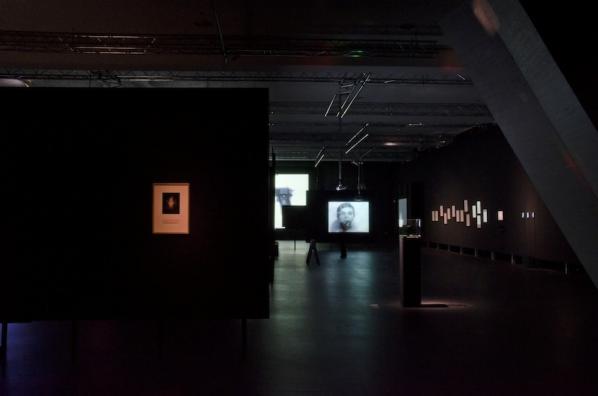
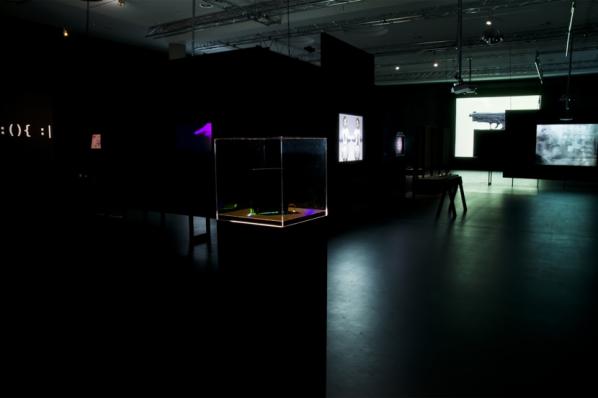
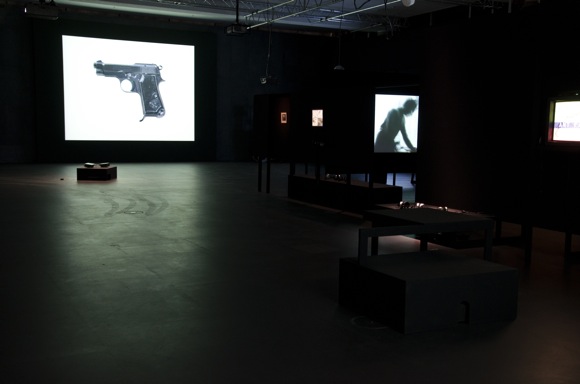
Similarly to what I have just described, it was Dark Drives as a whole that guided the visitor all the way through its display towards specific thematic directions, which were suggested by the installation in conjunction with the many visual and aesthetic links. But simultaneously, the visitor would also be free to follow the other and many trajectories arising from the content of each specific work, and this flexibility made the exhibition an attractive narrative territory ready to be employed for further explorations.
This section of the programme has been devised as an ongoing project by curator and researcher reSource is an initiative that started before transmediale festival with the gathering of an international network of PhD researchers for a conference and workshop held at the University of Arts in Berlin last November. The outcome of this collaborative network was launched on the second day of the festival, in the form of a research newspaper titled World of the News – Thank you & Goodbye . This newspaper operates as a platform in which an array of researcher, most of whom practising artists, presented a series of essays and interviews looking at the “unresolved questions and paradoxes of media technology” and how they might impact (and redefine) not only artistic production but also research processes and academic conventions, such as peer-review systems or the definition of what is currently accepted as ‘proper research’ within the academia.
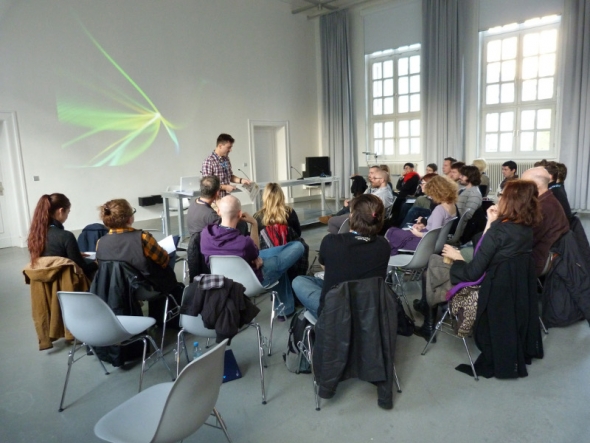
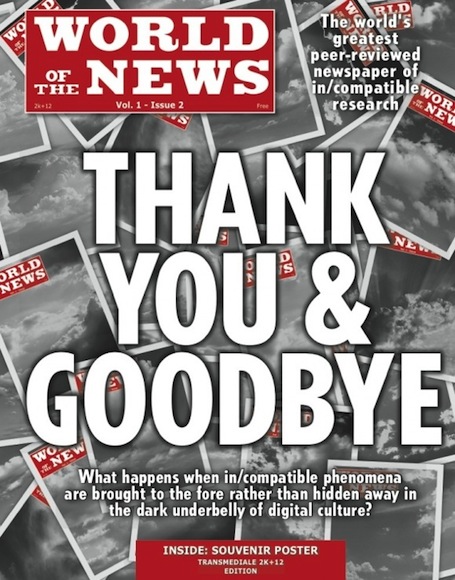
World of the News gathers a very well-thought through research material, and it does challenge academic formats, bringing forth the necessity (and preciousness) of collaboration and dialogues across disciplines, forms and formats.
The above is only one of the activities that were part of reSource; in fact, its programme was divided into five different sub-themes, Methods, Activism, Networks, Markets and Sex, each of which ranged from panels to presentations and workshops.
One of the proposed panel was titled Coded Cultures – Sub-Curatorship Beyond Media Arts and drew on a previous event organised by the group 5uper.net in Vienna, Coded Culture: The City as Interface (2011). Although aimed at addressing questions about curatorship and media art festivals, thus the public sphere, I wonder why curatorship as a practice within the field of new media and, supposedly within what was termed as “beyond new media art”, were not discussed more in depth, especially given the changes that transmediale exhibition itself proposed. If Joasia Krysa presented her specific approach to curating as a system that is informed by technology and thus embraces its inherent systems, like software codes and protocols of Internet and digital technology, in order to change the hierarchy of power; the other invited curators seemed to lack a depth in the discourse. The whole panel unfortunately stranded in general statements such as “technology changes the role of the curator” or “the curator does not want to define itself as a curator anymore, but as a coordinator and a producer”; a cliched conversation that – opportunely – ended with Krysa throwing on the table of discussion Christine Paul’s definition of “curator as filter feeder”.
Many other were the events presented at transmediale, such as the visually stunning, and purely analogue, performance of Joshua Light Show for the The Ghost in the Machine performance programme . At different times during the week of the festival Joshua Light Show performed with different musicians, such as the one man band Oneohtrix Point Never, bringing to light the beauty and magic that old(er) media can (still) give to a public of a “transmedial” festival.
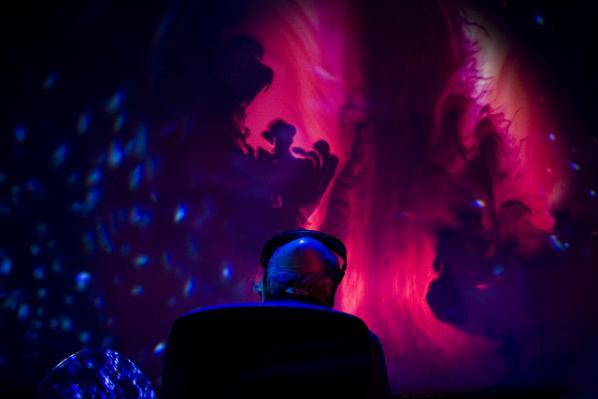
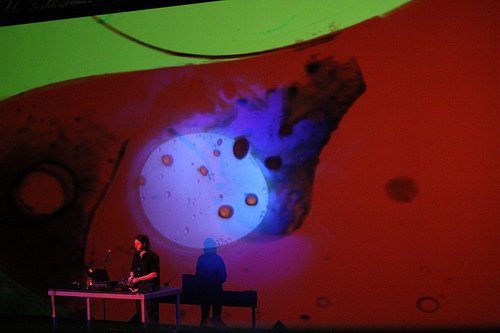
As a final round-up, it is also to be noticed that in/compatible embraced slightly more extensively the sphere of online production and distribution, specifically in conjunction with the 25 Years, Satellite Stories and Featured Projects programmes.
If when browsing the transmediale website you experience some strange episodes, such as pages merging into each other when scrolling up and down, that is because of a site-specific intervention by Danja Vasiliev and Gottfried Haider – the developers of a Content Manipulation System called HOTGLUE which allows to construct websites directly in a web-browser.
Also as part of 25 Years there was a video installation <collaborative documenting / archiving on netart.activities> initiated by artist Constant Dullart and art historian and artist Robert Sakrowski. The duo had devised an open database system which employes YouTube as a repository for net.art projects. This project tackles issues related to hardware and software obsolescence in relation to the (often impossible) access to early net.art projects, and proposes a way of archiving them by filming an ‘audience-in-action’ during the browsing; a strategy which is also useful for tracking users’ behaviours and thus highlight the changes brought about by technological development. Dullart and Sakrowski also led a workshop at the transmediale headquarter, as well as presenting their work during the panel discussion web.video the new net.art?.
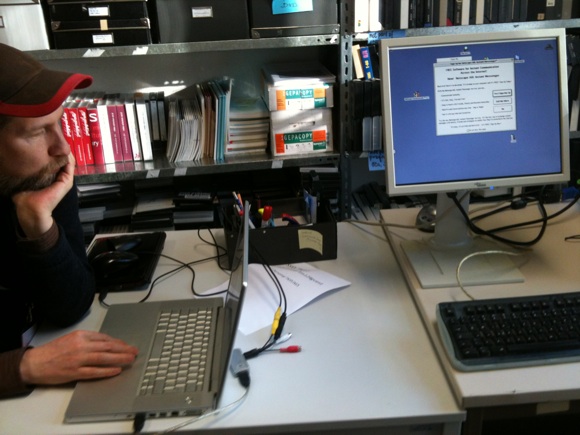

As a last mention, the video programme Satellite Stories was launched at the opening night with Screening Re-enactment Videospiegl, a looped video screening which connected the present of the festival with its history, its archive. In fact the festival first opened in 1988 as VideoFilmFest, and the Videospiegl selection of early videos is now accessible on transmediale website; hopefully marking the start of an archive which will be online and for all.
The online activity described here is certainly not enough for a festival like transmediale, which should investigate thoroughly the relationship between art festivals, artistic production and online distribution; but at least it seems a start for what is a much needed new exploration to be carried out by the organisers.
There is one more issue that I feel was only and often superficially addressed by this edition of transmediale. There were many mentions, in theory, of capitalism and its ramificated systems, such as the closeness of network systems which before were open and the consequent failure of techno-utopian ideals. However, there was little evidence of this in the artworks on display, nor in the site-specific installations presented. I don’t support the idea that artists should be literally political, or activists, but when I experienced jon.satrom’s performance at the opening, it came across as a sort of exercise in showing what can be done through bending technology to generate new languages and approaches to that which is established. In a way it reminded me again that we often operate within boxes, and rarely attempt to challenge the form and format of what is given to us. But then, most of us already know this. And although in/compatible as a festival did not want to give answers but generate a context for formulating questions, as Gainsing specified in his presentation, I felt the need of a next step, a step made of actions, which to me was only fully present in the reSource programme of Tatiana Bazzichelli. When I rethink of jon.sotrom’s performance, and I am very aware I am using him as an example to point to a larger scenario (my apologies to the artist!), I cannot refrain from thinking that the system he was challenging was that of an Apple Macintosh software, built on visual tricks like Spaces, Mission Control, etc; a system that perhaps needs to be challenged at a deeper level since, for instance, its reliance on the exploitation of developing countries workers?

This is just a final thought.
That said, I am really looking forward to seeing how transmediale will move forward, will it take the next step from this initial change?. It will be interesting to see how this merging of historical perspectives, academic research and artistic innovation will stir up more conversations and, as I said, more actions for another exploration of the relationship between contemporary cultural production, media and technology.
Please note: since the richness of the programme, I have highlighted my personal experience of the festival, so that this review highly reflects the choices I made about what to attend and what I (unfortunately) left out from my jammed daily schedule.
Featured image: Gambiologia presenting one of their projects made specially for the festival. Image: aloysio araripe.
Festival Cultura Digital took place in Rio de Janeiro between the 2nd and the 4th of December 2011. It was the third edition of the event known as Forum da Cultura Digital that happened in Sao Paulo in the first two years. It gathered 6 thousand people in about 20 open discussions, 20 workshops and 52 international and national projects presented in MAM Rio de Janeiro (the Museum of Modern Art) and Cine Odeon.
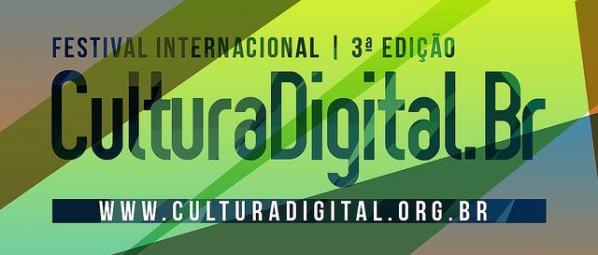
The Festival Cultura Digital is a project from Casa de Cultura Digital, “a criative cluster from São Paulo” composed by 15 institutions. For this project, Casa de Cultura Digital received an honourable mention in the Digital Communities category by Ars Electronica 2010.
One of the particularities of this event is that it brings together political institutions, artists, companies, activists and intellectuals in a hybrid format. The main goal is to change and broaden the limits of digital practices and connect to other people and networks from other cities, states and countries.
This edition of the festival had as key speakers Yochai Benkler (Harvard Professor and co-director of Berkman Center for Internet and Society), Kenneth Goldsmith (poetry professor of Pennsylvania University and founder of Ubuweb), Hugues Sweeney (producer of Interactive movies of National Film Board of Canada), Michel Bauwens (founder of P2P Alternatives), Philippe Aigrain (Sopinspace, CEO), Paulo Coelho (the famous Brazilian writer that made all his books available for download) and Heloisa Buarque de Hollanda (researcher on the relations of “marginal culture” and digital culture).
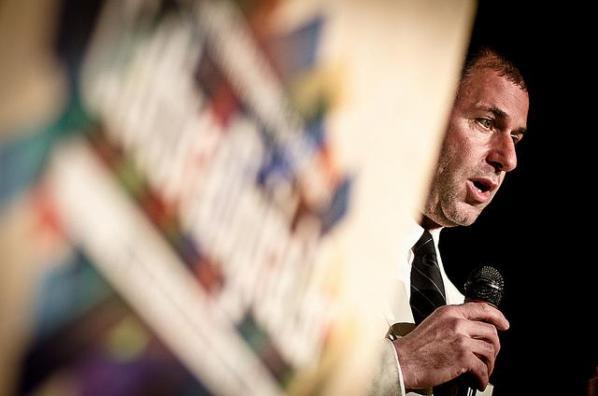
For the first time projects were chosen through an international open call and selected by a group of people involved with the festival. They’ve received almost 400 projects and selected about 80 that were organised in different themes: Construção de laboratórios de cultura digital (constructing digital culture labs), Encontros de rede (network meetings), Mostra de experiências (experience show) and Visualidades (visuals, that gather artistic projects to be shown and discussed).
Casa de Cultura, as defined by them, connects the counterculture from the 60s-70s to the cyberculture from the 21st century. The group itself has members as Claudio Prado, a key figure from the Tropicalia movement. He’s a cultural producer, co-founder of Glastonbury Festival and has produced many concerts of Mutantes and Novos Baianos. He currently coordinates the Laboratório Brasileiro de Cultura Digital. Gilberto Gil, the musician and ex minister of culture of Brazil is the “ambassador of Festival Cultura Digital”. Besides that, many members of Casa de Cultura are journalists, videomakers and programmers in their 30s or under that are directly involved with hackerspaces, independent journalism and public policies for digital culture.

It brings together as partners members of the international mass media as The Wall Street Journal and Reuters, Folha de Sao Paulo (one of the main newspapers in Brazil) as well as the blog Falha de Sao Paulo, that was sued by Folha de Sao Paulo for being critical about its content. Casa de Cultura Digital also represents the Brazilian node of Wikileaks.
Besides international selected projects like Waste2No, Pretty Resistant, Protei / Oil Compass, Bitcoin, Generadores de electricidad con basura electrónica, or The Cartographer; and nacional groups like Cotidiano Sensitivo, Garoa Hacker Clube, Gambiologia, Pandeiro Montagem, or Espaço Macambira, there were projects such as:
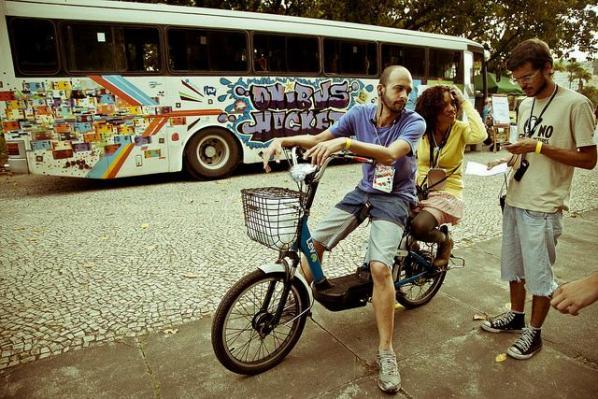
Onibus Hacker was a idea to buy a bus through donation to be modified to include webcam, 3G connection and GPS for Transparencia Hacker [1] projects. The projects are done during the trips to small cities among the group that travels in the bus and also virtually. Some of the projects include workshops, Hackdays and Install Fest to small towns (less than 5,000 inhabitants), also allowing local people to organize themselves (according to Brazilian legislature, anyone can propose a law if it’s signed by 5% of the local electors) that would benefit these contexts. The bus was bought and went to Rio de Janeiro to be shown and visited during the festival.
Brasuíno BS1 is a single board microcontroller inspired on Arduino that uses the AVR microcontroller. This Brazillian version was redesigned using Libre Software, free to reuse and derive, and it’s licensed as GPLv2+ (the original Arduino still uses a microchip that is not open hardware). It’s also compatible with Arduino Uno and Arduino software.
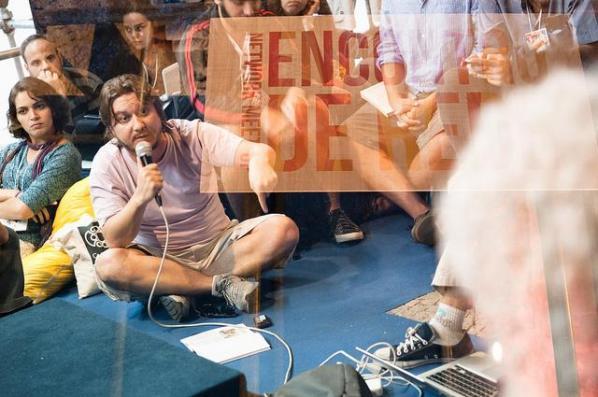
The project is composed by an IT lab based in the Kaiowá community Nhandejara that integrates the indigenous community to straighter demands and opens the discussion about their issues and projects outside the reserve through a web portal. Furthermore it offers workshops for inhabitants and people involved with the group and it’s a source of information for researchers. The project includes organization, digitalization, production and analysis of historical and cultural elements from the Kaiowá and Guarani tribes. The website is bilingual (Guarani-Portuguese).
Cultivo is the first crowdfunding network for Cultural Incentive Laws in Brazil. The main goal is to connect companies and projects approved so that they can contribute to their development. The project was launched during the festival. One of the ideas is to enhance the participation of the private sector in cultural projects. If a project is selected, the companies can use part of the tax money to support it. Nevertheless, many companies don’t know the projects or how to proceed, so Cultivo would be a portal to present the projects to the private community.
LALOCA is the Laboratory for Locative Media and GPS Films. It’s a centre for the production and research of mobile media at the Federal University of Juiz de Fora in collaboration with the University of California San Diego. The projects focus on locative cinema with interactive scripts based on open source OS and tools, as HiperGps, HiperGeo and walkingtools, whose project The Transborder Immigrant Tool [2] has caused great media frenzy and issues with the government for Ricardo Dominguez, professor, activist and one of the developers of the tool.
It’s a platform for mapping soundscapes in Rio de Janeiro and Niterói (greater Rio de Janeiro) based on the Universidade Federal Fluminense. It’s built in a collaborative way to collect a “Museum of sounds” of neighbourhoods and favelas.
Circuito Fora do Eixo is a network of cultural producers and artists from parts of Brazil outside Rio and Sao Paulo. These two cities are known as the cultural and economical “axis” concentrating the funds, spaces and media interest of the country – thus the name Circuito Fora do Eixo which literally means “circuit outside the axis”. The group began in 2005 as a way to stimulate bands to play and tour across Brazil. With the aid of certain technological developments that allowed direct distribution and the lowering of production costs they have created many small festivals (about 180 until today) and gained great relevance in terms of connection with the government and artists. Now Fora do Eixo has two permanent spaces called Casas Fora do Eixo, it has gained a national presence and has broadened its activities to include an interest in free digital cultural policies for education, audiovisual production, etc. [3]
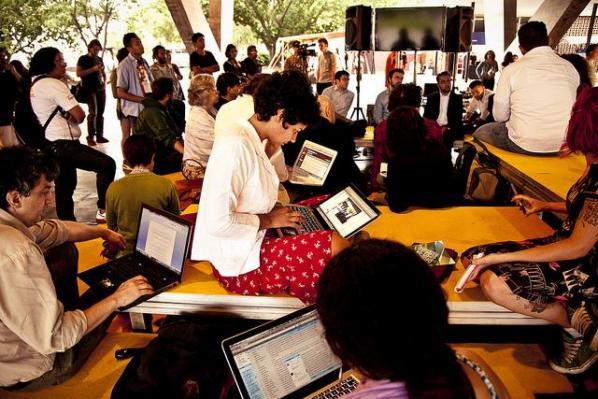
The Festival Cultura Digital is an exciting example of how collectives and individuals create a public and open space for sharing information, not depending but also not ignoring the public and private role in the national scenario. This process is particularly interesting for a country that is learning how to use networked technologies to overcome its gigantic size and its many cultural and socio-economic differences. It’s not an easy task, but it’s a lesson which is worth learning in times where the boundaries between public and private are blurred, when governments are ruled by investors and individuals change drastically the laws of the market as we know it.
Congresso Fora do Eixo – http://congresso.foradoeixo.org.br
Festival Cultura Digital – http://culturadigital.org.br
Casa de Cultura Digital – http://www.casadaculturadigital.com.br
According to the organization, there’ll be videos from the presentation available on the website by the beginning of 2012.
Dragana Zarevska and Jasna Dimitrovska are visual and performing artists, cultural workers and activists from Macedonia, who also, often work together under the artistic pseudonym Ephemerki. While at the same time loving and teasing the rigidity of academism, they like decoding magic, making it transparent, go behind Wizard of Oz’s curtain and put his pants down. The name of the duo is a funny derivate of Bapchorki (band of few grannies who used to sing Macedonian traditional songs in a rustic nasal style). It suggests that Ephemerki are their ephemeral version, or at least, the ones doing the ephemeral part of tradition. Their work is driven from and inspired by Donna Haraway, Judith Butler, Deleuze and Guattari, Agamben, and other contemporary thinkers and practitioners within arts, technology, society.
The Lele method is their latest performance (a performative event for a bunch of people, as they like to call it) and so far was performed at AKTO 6, Festival for Contemporary art in Bitola and Kondenz & Locomotion, Performing arts festivals organized in Skopje and Belgrade. Here is the story behind the project.
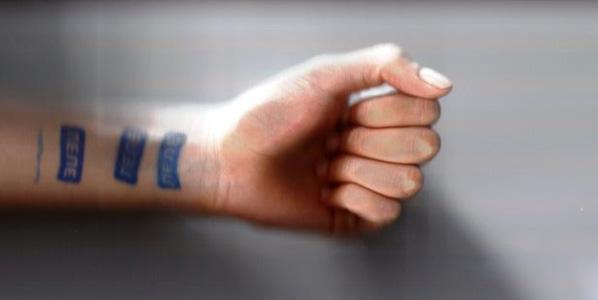
Darko Aleksovski: ‘Lele’ (Мac: леле) is a word that has profound significance in the Macedonian language. It is a universal word that can be used in different contexts and can imply several different emotional states. Can you describe what was the inspiration for this project dedicated to the word ‘lele’? What is the subjective meaning of this word for you?
Dragana Zarevska/ Jasna Dimitrovska: The particular situations this word implies and the problems it addresses might sound quite confusing for the non-Macedonian readers, but, if any of them have visited, or will visit our country, it’ll be deadly surprising how many “leles” per minute one hears around. The word “lele” is totally devoid of meaning, but it is being used to emphasize certain emotions, wondering, shock, great happiness and similar. It is just a shout out, like…the French “oh-la-la” for instance, the Bulgarian “ma-leeeh” or like the Serbian “yoooooy”. The project is being titled “The Lele Method”, directly and totally driven from the local obsession with lele and its possible application.
For us, this word sometimes depicts the shortly shaken numbness and the apathy of our current socio-political constellations, but only with a shout, and then again – everything goes on as usual.
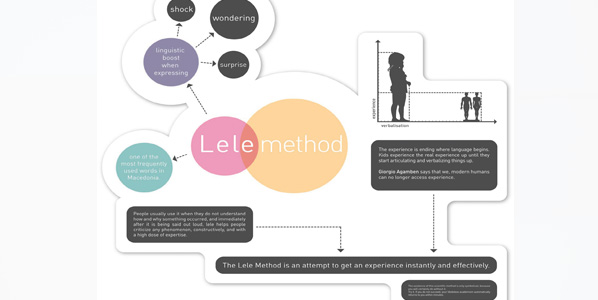
Darko Aleksovski: What is the ‘lele method’? Considering the performative act of the ‘lele’ word, and its everyday use in Macedonian speech, do you think that a method like this can still function as relevant? Can the ‘lele method’ be appropriated by anyone, or it is just a method that you as an artist use?
Dragana Zarevska/ Jasna Dimitrovska: Sure. It can be appropriated by anyone, but it is still a joke. You will certainly do without it as a method. Using it will not bring anything to your life what you’ve not had before. This is how we define it: Lele is one of the most frequently used words in Macedonia… people usually use it when they do not understand how and why something occurred, and immediately after it is being said out loud, Lele helps people criticize any phenomenon, constructively, and with a high dose of expertise. Try it. If you do not succeed, your libidoless academism automatically returns to you within minutes.
These instructions can help a lot in experiencing this useless experience through this useless method. But, stating the obvious with The Lele Method is what we enjoy the most. We give people what they already have, like selling snow to Eskimos.
Recently, in an interview we gave for the Canadian .dpi Magazine we discussed some particular effects we achieved by performing Lele. Nobody is aware of performing it daily here in Macedonia, and while we were preparing the performance out of it/about it, we realized the power of defamiliarization. You perform something which is being performed daily in a constant automatization. By naming a method Lele and putting it on a stamp, we gave the word a particular relevance and a different form. We made it “unfamiliar” and “difficult”, and by that, we prolonged the process of perception of that word. By trying to remove the automatism of perception, we got a new perspective of a word, of a problem. This technique has been used in the literary criticism of Russian formalism to differentiate prose from poetry, but we use it to differentiate and to delay perception. As Russian formalist critic Viktor Borisovich Shklovski has said in his well-known essay “Art as Device,” – the purpose of art is to impart the sensation of things as they are perceived and not as they are known.
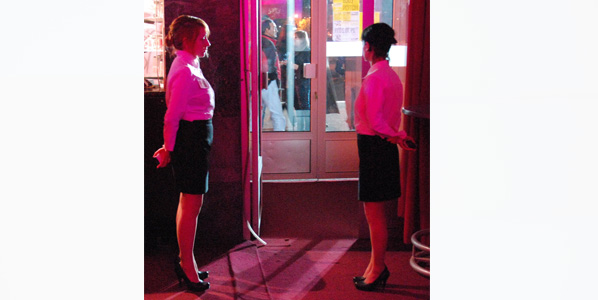
Darko Aleksovski: You have presented this project two times so far – as a performance accompanied by the printed version of the scheme of the ‘lele method’. How much performance is a necessary medium for this project?
Dragana Zarevska/ Jasna Dimitrovska: We’ve shown the performance at this year’s Akto Festival for Contemporary Art during August (Bitola/Macedonia), and at the Kondenz & Locomotion curatorially joint festivals for performing arts organized in Skopje and Belgrade during October. We must admit we entertain ourselves a lot during the performance because people enter the room and they perceive it as some irrelevant and boring employees who put a stamp on everyone’s hand at the venue’s door. Then, they look at the stamped hand/arm and shout “Leeeeeh-leeeeeh!” because that’s being engraved on our stamps.
During the performance we are dressed in our Lele uniforms which are extremely office-like and conservative, our faces are shit-serious, and inside the room there are printed materials (scattered leaflets on the tables, or printed panels on the wall) with diagrams on them explaining the empirical part of the Lele Method. The concept behind the Lele Method is being driven by our love and respect towards Giorgio Agamben’s work and his ideas on experience shown in his work Infancy and History. The experience is ending where language begins. Kids have the real experience until they start articulating and verbalizing things up. Giorgio Agamben says that we, modern humans can no longer access experience. The Lele Method is an attempt to get an experience instantly and effectively. The existence of this scientific method is only symbolic, because it is just mocking the academia and the naive ones simultaneously, as – all of the work we did/do by far.
Much of this performance auto-perpetuated, it is happening by itself. Performance is always a necessity. It is better for us to be aware of it, because we all perform all the time. This performance is all about being aware that we perform something of which we usually forget, but is actually performable – something automatized like the word Lele.
Darko Aleksovski: The project was very well received by the audience, other artists and critics. Does it have another aspect of it, that is directed as a critique towards the whole Macedonian art system?
Dragana Zarevska/ Jasna Dimitrovska: Thank you for this notion. Actually it was fantastic how great it was received. Our work can often be seen as an overlap between theory, movement, process and production. The contextualization of these things shapes the performative events we present that test and deconstruct different versions of reality and its geography, directly related to awareness of the possibilities of language. We criticize language/es through language.
Darko Aleksovski: Do you see ‘lele’ differently, now that you have made a project out of it?
Dragana Zarevska/ Jasna Dimitrovska: Yes we do. We got de-familiarized with it (by getting hiper-familiarized), while, at the same time we started to think of it as of our own word, which is pretty selfish. We totally “adopted” it. Other people who came to our performances also tell us they experience it a bit differently than before, one friend said “Whenever I say Lele I think of you!”. We know this might sound weird and vain, but it seems we assimilated it as our own piece of art, and the truth is – it is so not ours, it is everyone’s. We surely assimilated the illusion of having it as ours though.
more about the artists: zarevska [at] gmail.com, yasna.dimitrovska [at] gmail.com
“You Are Now the Electronic Man” are the words that appear before even opening the website for The Electronic Man, a project initiated by Salvatore Iaconesi and Oriana Persico of Art is Open Source (AOS) and FakePress. And by becoming part of The Electronic Man, sharing your emotions as they become linked through QR Codes and help to build the frame of The Electronic Man, you are participating in a real time global performance.
This real time global performance relates to conceptual experiments by AOS and FakePress, in remixing reality and creating new sensual experiences with technology. The email interview took place after their recent exhibition at Furtherfield’s gallery in London, called REFF – REMIX THE WORLD! REINVENT REALITY!, which happened during February, March 2011, and during their current project The Electronic Man. We discuss AOS’s ideas and intentions, regarding their activities of performance and use of technology, and their methods of engagement with anthropology and biology.
Renee : The Electronic Man is quite an ambitious project. What inspired you to begin building the Electronic Man?
Salvator and Oriana: The Electronic Man is actually a very simple project (if quite a difficult one in terms of “making it happen”) as it is a direct poetic interpretation of a theory by Marshall McLuhan that goes by the same name. We decided to take the famous statement by Marshall McLuhan quite literally and transform it into something that is really happening in the world: “Electronic man like pre-literate man, ablates or outers the whole man. His information environment is his own central nervous system.”
What we wanted to do was to make our statement for the centennial of McLuhan’s birth, but to avoid the form of the “conference presentation” for it, and to show in a powerful way how the ideas expressed by McLuhan are really taking place in the world which we experience every day. So we decided to produce a performance, a global performance.
With the wonderful support of Derrick de Kerckhove, and of the MediaDuemila magazine (and the Associazione Amici di Media Duemila and the Osservatorio Tuttimedia, and the Department of Communication and Social Research of Rome’s University “La Sapienza”, who were organizing the official event for the centennial in Rome, under the fundamental guidance of Maria Pia Rossignaud) we were able to make it happen and everyone involved was really happy to include this experience in the official celebrations.
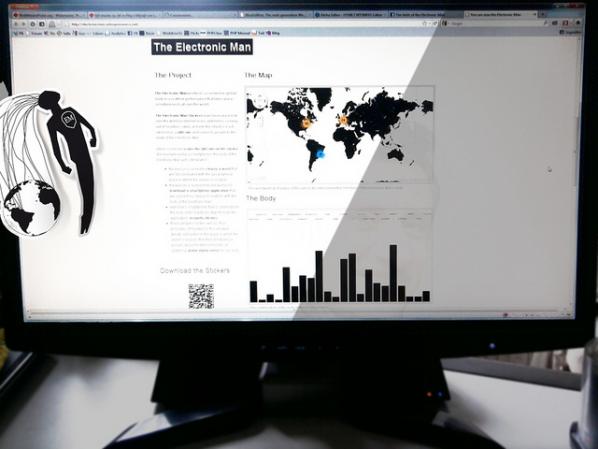
Renee Carmichael: I find the methodology behind this project really interesting. From what I understand it’s about going beyond the analogue vs. digital debate and really going in between and just experiencing and experimenting. Do you think this methodology is important to use in today’s world? How and why might this be so?
Salvatore and Oriana: We are living in a really complex scenario, complex, fast and ever changing. Digital technologies and networks are starting to pervade our analogue reality, transforming it and opening up entirely new possibilities. There are forms of (digital) interaction that are starting to be widely accessible from physical space. These forms of interaction are really peculiar as they allow for a transformation of (physical) reality, making it interactive, reinventing it, remixing it, and adding content to it. The world itself becomes a performance and a very specific form of performance: involving remixes, mashups, recontextualizations and reenactments as its main practices. This has drastic effects, not only as our reality multiplies and reshapes, but also attitudes, perceptions, skills, knowledge and approaches of the people involved change. In this process methodologies, practices and theories remix as well, bringing forth various possible scenarios, in which collaboration practices emerge as the only viable way to perform significant actions.

So, in this scenario, “life, the world and everything” is turning into a multipliable, performative environment in which the only way to, actually, perform in a significant way is to collaborate across cultures, skills, theories and methodologies. This brings forth a change to our sensorial environment, meaning that when ubiquitous technologies are involved, we instantly gain new senses, new sensorialities and sensibilities. Just like with the mobile phone, when it doesn’t catch the network, we move, naturally and without thinking about it, to a place that has better network coverage, in a way that is neurologically similar to the way in which we move our hand away from fire when we feel the heat: it is a real sensibility, an additional sense.
Mixing these two aspects (the forming of a multilayered, collaborative, read-write reality, and the emergence of these new senses), describes a situation that is almost exactly the one presented in the question: experimentation, as in performance and as in science, this new science that traverses disciplines, theories and approaches; and experience, meaning you are actually able to build a new experience of the world that is sensorial and, most important of all, writable.
This is also a good description of the shape that the term “conflict” is assuming: a continuous process of movement and traversal, in which you transform a part of reality (as in augmented reality) adding new meaning and imaginaries to it, in a performative action that unites activism, art, science, design and communication, and that transforms and is transformed really fast, at the pace of the evolution of technologies and networks.
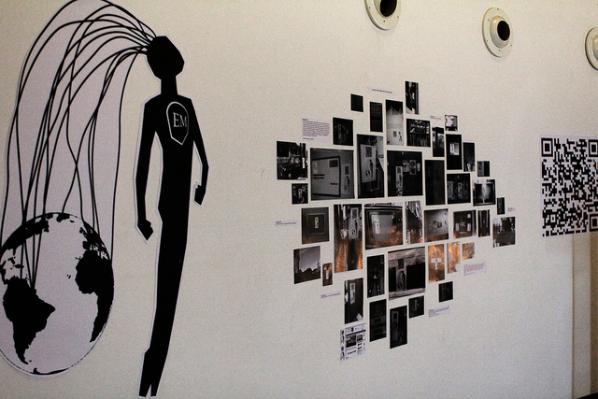
Renee: I read that this project can help us experience and reflect on our place in the world through the external. Do you think the relationship between the individual and the external takes a new shape throughout this project? How might it be understood in the larger ideas and theories of the Electronic Man?
Salvatore and Oriana: The Electronic Man is about the observation and exemplification of something that is already happening in the world. It speaks about interconnection and our renewed perception of space, time, body and relationships. Technologies helped us reshape these concepts completely. We are never in a single place now; we are everywhere, anytime and with lots of people all at the same time, using multiple identities, both voluntarily (mobile phones, ubiquitous networks..) and involuntarily (CCTV, social networks spying on us..). So all these definitions change radically: private and public space, gender, relationship, message, privacy, work and free time. We wanted to make this change explicit. In this change: public and private completely restructure! This is also why we decided to use the “emotional” dimension as a narrative: emotions are thought to be a private, intimate part of our lives, but now they are the object of public observation through what we do in the digital realms, for the new forms of economies that are developing, focusing on attention, reputation, awareness and more.
Renee: Although the Electronic Man allows us to experience sensually, it still creates finite points of data through the connections between a place and an emotion. What do you think is the relationship between the sensual impact of the project and the data it produces? How does the data fit into the idea of creating a new ‘global digital sense of our bodies’?
Salvatore and Oriana: This is a very complicated question! We chose this approach as a starting point. We are using a classification of emotions which is very basic (designed by Plutchik in 1980) it works really well across different languages (we are currently using 29 languages for our performances, to address as much of the world as possible). But this point that is described in the question (freeing the modalities of data, augmenting the degrees of freedom which we can express) is one of the focal points for expansion in the next steps. There are solutions and approaches which we are finding suitable to confront these issues with, and they are all related to adding degrees of freedom in what you “release to the public”: transforming artworks into free frameworks for expression that can be freely used by people. This transformation from artwork to framework is something that is happening all over, and it has to do with P2P culture and free software. This is why we release all the software and hardware (and methodologies) we use in our performances under free licenses: because the next step of each performance is made by the people taking the tools in their own hands and creating their own forms of expression and action, their own additional layers of the world.
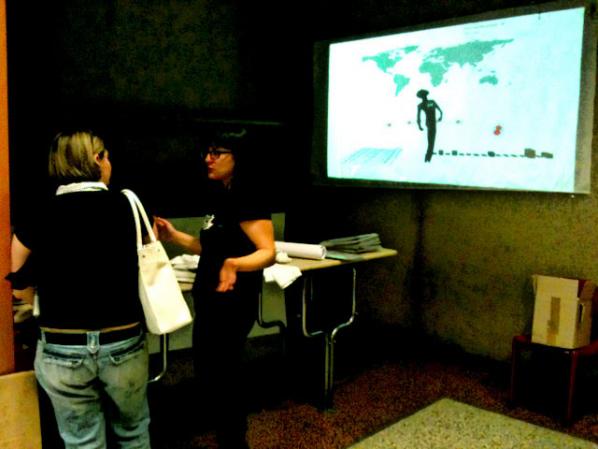
Renee: In a related note, this new form of being that the Electronic Man creates cannot be completely separated from the world and systems it exists in already. It seems that the questions that often arise around this project are in terms of how it can be used within other appropriations. How do you see the future of this project in terms of the various appropriations that it may have and in terms of your own intentions for the project?
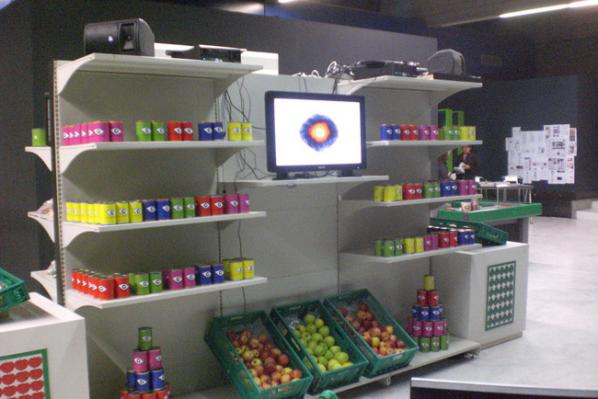
Salvatore and Oriana: As we said: we’re always in beta version. These processes are nomadic, temporary, and unstable. Ideas, software tools, concepts, hardware, practices and approaches are in a continuous state of remix: each time we speak to anyone, or even as we’re writing this, the performance changes and upgrades to the next version. For example we can look at the recent augmented reality interventions that have been taking place all over the world and, just a few days ago at the Venice Biennale: there has been a very fertile discussion building up during the last two years, on the idea that these technologies allow you to “squat” reality, and add new meanings and new degrees of freedom to it. This is why we created a project called Squatting Supermarkets a couple of years ago. This discussion is producing actions: appropriations, performances, re-usage of terms, words, sentences, new forms of activism, and new forms of art. We’re really happy that this is taking place, and we see all this as a wider form of performance in which everyone interested can be involved.
Renee: I can’t help but see a relationship between The Electronic Man and a sort of modern day Frankenstein. Would you like to comment on this relationship?
Salvatore and Oriana: We will answer this question using an answer that our dear friend prof. Massimo Canevacci gave to a question during a TV show in Italy: “This is a wonderful question, and I am deeply convinced that western cultures produced these really heavy mythologies around Frankenstein, the Golem, and arriving to a movie, a very nice one, like Blade Runner, taken from a novel by Philip Dick.
I am certain that this system, this dualism between technology and body, between organic and inorganic, between nature and culture, is finally over, in a liberating way. There are researches in which the concept of cyborg constitutes a perspective that is capable of liberating enormous possibilities. Therefore our bodies become progressively more entangled with technology all over literature, technology, anthropology, and biology.
Thus I sincerely hope that this enormous mythology, this terrifying myth of the Frankenstein, will finally end, once and for all, and will peacefully retire; and that new forms of cyborg will emerge and free themselves, to produce new free forms of expression.
Renee: Finally, any further issues, ideas, thoughts you would like to add?
Salvatore and Oriana: Yes!
The Electronic Man is a global performance! And it becomes useful if lots of people participate (and, by the way, participate by doing even simple things such as attaching some of the Electronic Man stickers around and sending us a picture, and you’ll find yourself and your work advertised whenever we exhibit the work: for example at the MACRO museum in Rome there is a full wall dedicated to the people that are helping us out, including their bios, pictures and links) But, most of all, it becomes useful if lots of people actively grab technologies, methodologies and concepts and actively build their own performative world, possibly sharing the results with everyone else.
So we strongly invite everyone out there to request the software, (it will be published on our sites as soon as we have some time to prepare a proper sharing mechanism, but you all can have it before that by simply asking) and to imagine other disruptive ways of using technologies to create free, accessible, inclusive spaces for communication and expression.
We will support you all in that as much as we can.
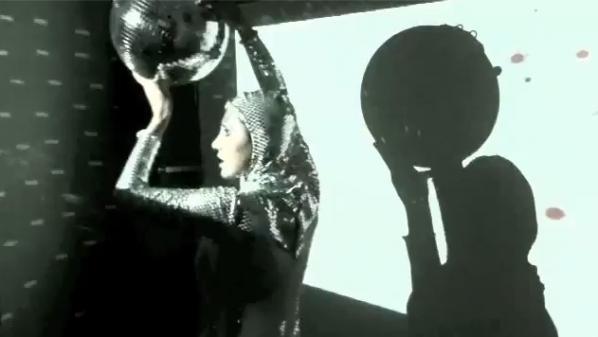
The Electronic Man at ADD Festival, MACRO Testaccio, Rome contemporary art museum, view video on Youtube.
“Festival of Ideas For A New City” organized by the New Museum, The Architectural League, The Bowery Poetry Club, C-Lab, Columbia University Center for Architecture, Cooper Union, The Drawing Center, NYU Wagner, PARC Foundation, Storefront for Art and Architecture, and the Swiss Institute blossomed like spring in New York City from May 4 – 8th, setting out to “harness the power of the creative community to imagine the future city and explore the ideas destined to shape it.”
Keynotes addressing the issues were architect Rem Koolhaas, virtual reality inventor Jaron Lanier, and former President of the National University of Columbia, and former Mayor of Bogota, Antanas Mockus. A StreetFest set up along the Bowery with over 100 local grassroots organizations and small businesses “presenting model practices and products in a unique environment.” Over 100 projects, events, performances and walking tours expanded on the Festival’s themes.
Rem Koolhaas with OMA and The New Museum showcased CRONOCAOS, an exhibit examining the growing “empire” of preservation and destruction and the consequences of how we build, rebuild and remember. What is the role of preservation on the art world? As larger and larger spaces are repurposed for art from industrial spaces they focus on the “apocalyptic sublime,” mimicking Hollywood and B movies. Oddly enough Koolhaas noted, this increase in preservation closely parallels the rise of Wall Street and tourism.

There were panels on “The Heterogeneous City,” “The Networked City,” “The Reconfigured City,” and “The Sustainable City.” At night curator Anna Muessig’s Flash:Light Nuit Blanche event included murals along the Bowery, art projections on Nolita and Lower East Side buildings, and music and performances including projects on the facade of the New Museum and St. Patrick’s Old Cathedral in Little Italy. There was also a 3D video installation Civilization reinterpreting Dante’s Diving comedy.
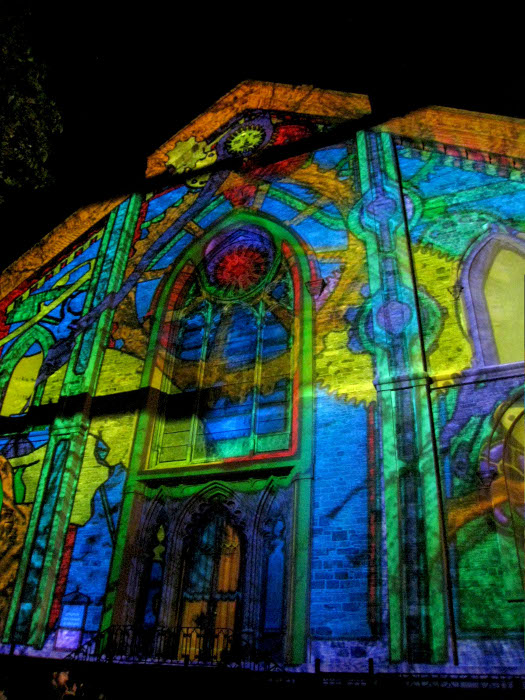

Jaron Lanier’s Keynote address on “The Networked City” at the Great Hall at Cooper Union reiterated many of the themes in his new book, “You Are Not A Gadget.” Not one to follow any set path, Lanier began his talk by playing a Laoitian “Ban Lao” (Ban Bang Sai Kai) bamboo wood pipe. He declared the simple reed flute was one of the first holders of digital information, even older than the abacus, because each reed object and note is turned on and off just like a series of digital 0’s and 1’s. The Ban Lao, traded across the Silk Route was noticed by the Greeks and Romans, and influenced the development of the pipe organ. The pipe organ was automated and turned into a player piano, a programmable loom, and finally became the origins of Charles Babbage’s computer.
Computers have gotten better Lanier explained, processing more and more bits, but humans still have more precise acuity at the level of quantum physics. They can respond to just one photon. He then veered off topic discussing the first computer scientist Alan Turing who used computers to crack codes during World War II. Persecuted for being gay, he was injected by authorities with female hormones which gave him breasts and made him suicidal. Just like Snow White, he killed himself by eating a poisoned apple.
He then veered back on track saying using computers as metaphors to the human condition is an irrelevant, outdated metaphor. The brain is not a CPU, and eyes and ears are not USBs. A better metaphor is thinking of the head as a spy submarine performing spy missions. You are constantly moving your head seeking out data, not passively seeing it. Your visual system is sensitive to minute differences. A musical instrument is an additional instrument to the sensory motor loop that makes perception possible. Can we build digital tools that are as sensitive as we are? This, he noted, was one of the key questions now facing computer scientists.
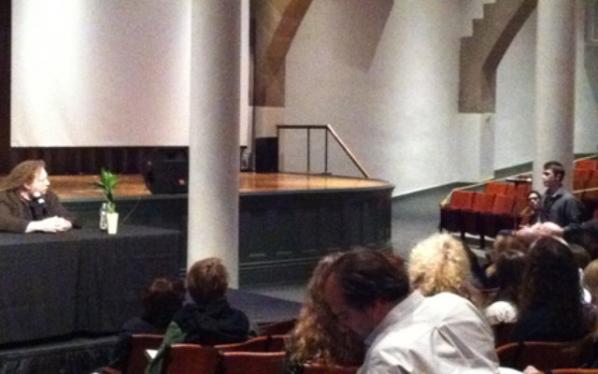
New technologies are usually developed to become weapons. But many important inventions were first developed for music. Musical bows existed before arrows, and guns developed from the casting of metal bells. Even Hewlett Packard’s first object was a musical synthesizer. Music is a driver with innovation taking place around making sounds.
In order to make his lecture relevant to the “Networked City” theme of the festival, Lanier discussed his favourite thing about New York City, that the same sense of acuity as applied to musical instruments also applies to personal interactions. More diversity means you have more chance of connecting with someone who will change your life. The fates of people in New York are guided by their activities. Its important that the fates concern an extra world of human to human contact.
In such a huge network context people are sensitive to subtle motions in each other, and can identify subconscious communication we don’t really know about. Contrast that to sound networking, where digital music does not give you the subtle minute accuracy of acoustic sound. People who only communicate virtually are spinning their wheels in place. When we connect to each other through digital representations we lose some form of expression.
Lanier proselytized for the necessity of the “head and the heart”, insisted technology needs to bring better jobs to society than the ones they are destroying. The basic social contract he said was turned back 11 years ago when advertising became the new way to get information. Sergey Brin, the co-founder of Google was the one who started it. Because digital technology is cheaper, cheaper just gives this stuff away for advertising. But, when you take the products of people’s hearts and minds, such as their music and literature, and give them away for free this becomes a problem. When you put effort into a promotion on line you get the illusion of benefits, but you actually lose relative advantage. This is because the true customers of a social networking site like Facebook is not you, you are actually the product of Facebook. You are sold and the customer pays to influence events. This is the difference between overt and covert information with Lanier stating, “The official business of computation is advertising.” At some point though, there is nothing to advertise. If cars can drive themselves, what happens to truck drivers? Or if 3D machines make fabrications they make manufacturing obsolete.
The Japanese are creating elder care robots. We are making ourselves unemployed. The fashion of making everything free leads us down a path from a city of dreams to a cry of despair. We have to figure out a way to change our relationship to information technology, instead of chasing after users and followers and making more money. Ending his lecture he declared, “We must humanize digital architecture – We must see beyond fads.” And then he played a little ditty on dual Gypsy flutes.
Featured image: Radion at NetAudio London festival 2011.
NetAudio London Festival, 13th – 15th May 2011.
A three day festival that explores music environments in the digital age of networked technologies. http://www.netaudiolondon.org/
Marc Garrett interviews Andi Studer of NetAudio London, about their latest Festival at the Roundhouse and other venues in London, from Friday 13th – 15th May 2011. Showcasing work of artists who use digital and network technologies to explore new boundaries in music and sonic art, their festivals encourage participation in all forms: interactive sound art installations, conferences, workshops, collaborative online broadcasting and headline shows. This year promises to be a special event, headlined by the legendary Nurse With Wound and many more – read on.
Marc Garrett: This seems like an amazing festival. Not just because it’s context relates to my own background and Furtherfield’s own connected communities and its history in exploring an engagement of contemporary, networked creativity which was once perhaps, considered to be at the edge of art. But now, it does seem as if a new passion is alive and kicking, representing what exists across the genres of art, technology and social change.
The Netaudio London festival began its life in 2006, why did you chose to set up such a dynamic and involving festival, and who are your influences?
Andi Studer: The first Netaudio London grew out of a general passion for electronic music, combined with the recognition of a booming netlabel scene distributing new music with CC licenses for free download. Culturally it spanned the three fields of club culture, avant-garde music and net-politics. During the research phase, we came across of string of European festival projects with the same scope and decided to align with them, so after Netaudio Berne and Cologne, in 2005, London took it’s turn in 2006. Over 3 days we presented more than forty acts in club as well as gig settings; we hosted cultural discussions, organised a knowledge fair around digital music distribution and premiered an the audio installation by Si_COMM, S.E.T.I and N-Spaces… good old days!
MG: What do you feel is important about the Netaudio festival and how does the current one relate to contemporary culture?
AS: Netaudio aims to play an active role in the ongoing process of exploring how technologies, and particularly the Internet, shape our lives. Within this vast field, we focus our work on sonic culture, music and sound art, but reach out to wider aspects such as politics and protest or collaborative creativity.
Whereas in 2005/06 much of the cultural discussion was driven by an incredible optimism about new communication and distribution channels, this year’s festival may pick up on something best described as ‘cyber realism’. The festival, and particularly the conference, building on our 2010 research project, presents a strong case for individuals taking action. And in process of so doing, we are interested to explore what emerging digital tools they use to create new sound art/music, as well as in the social and political endeavours related to their creative work.
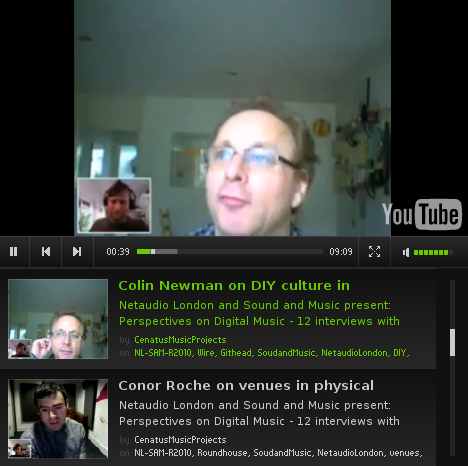
MG: Why chose to include those who have a history in net art, critically engaged thinkers invlolved in networked culture, and many who have been and are part of the (new) media art generation?
AS: We recognise a continuation of creative and socially aware work, enabled by network technologies. Including emerging as well as established projects, some dating from well before the WWW time, allows us to show this continuation and hopefully furthers the wider understanding of these different elements/groups. Whilst there are clear differences between them, there are also many overlaps and we hope that the inclusion of as many as possible in the debate and the wider festival allows for an exploration and greater understanding of these overlaps, and differences.
MG: Your festival includes a visiting member from UK Uncut who will be discussing with others at the Conference and Workshops, regarding the proposed theme of ‘politics and protest; creativity and collaboration; digital futures and analogue survivals.’ They have made headline news regarding their activities challenging the government’s ongoing cuts, and have been actively involved across the country targeting corporate tax dodgers and the banks who caused the financial crisis.
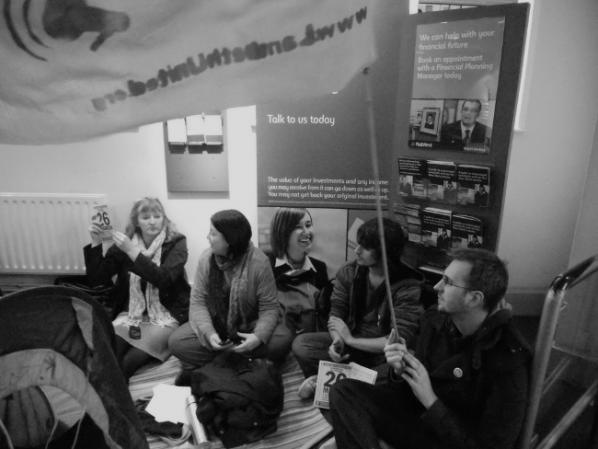
Do you think that UK Uncut’s own perceptions and its activism reflect the festival audience’s general interests and feelings on the matter, across the board?
AS: The participation of UK Uncut is confirmed, but the speaker is to be announced. Whilst some festival audience members may be sympathetic with UK Uncut’s perceptions and activism, others may not. Similarly, whilst members of the festival programming board may have sympathies with UK Uncut’s cause, the festival as such does not necessarily share the same cause with UK Uncut. The reason for inviting UK Uncut was their very successful work as a technology savvy protest movement, as well as their exploration of new forms of protest, particularly sit-ins involving poetry readings and the singing of songs. We are interested to find out more about how they use technology and music/sound in their cause. Presented in a panel with Jeremy Gilbert, Mark Fisher and Anthony Iles, we hope to show how their work sits within the incredible role music had and continues to have in social, political and economic protest.
MG: Nurse With Wound is headlining the festival and they are legendary in the underground music scene. Spanning a career of 30 years plus, under the curatorial guide of Stapleton who has seen NWW collaborate with a highly respected troop of free thinkers including David Tibet (Current 93), William Bennett (Whitehouse) and Andrew McKenzie (Hafler Trio). Many artists who have been working with technology and similar experimental genres, are influenced by those of industrial and avant garde music scene, such as Throbbing Gristle, Cabaret Voltaire, Virgin Prunes, This Heat and NWW, so it seems fitting to have them in the festival, with their peers and of course, an equally interesting selection of younger sound artists and musical explorers.
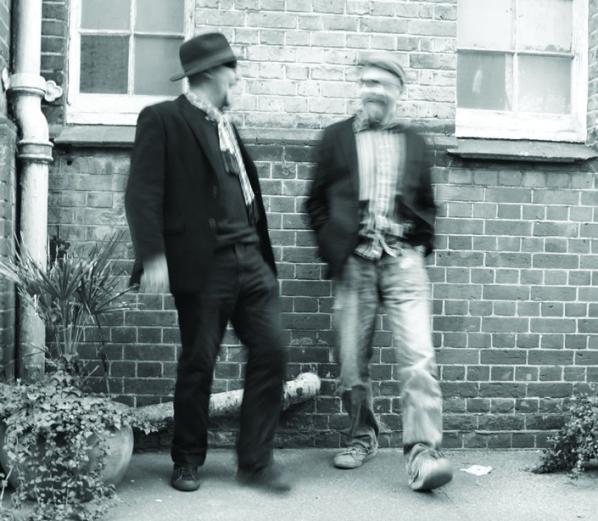
It may say seem like the perfect decision now, but how did you come to the idea of asking Nurse With Wound and what are the links with the other aspects of the festival?
AS: To have Nurse With Wound headlining our festival is a dream come true. Their achievements in anarchic, experimental, DIY, post-industrial music is unparalleled, and it is possible to find many of their approaches in the current new music produced by emerging musicians. This is something we hope to draw on in the rest of the festival.
At KOKO we will also present a newly commissioned live collaboration between Bruce Gilbert (ex-Wire) and Mika Vainio (ex-Pan Sonic). This opportunity to present new work came about though the direct continuation of an ongoing enquiry into collaborative creativity, as featured on one of the three conference panels. This is definitely also a strong theme in the work of Radian, the opening act at KOKO.
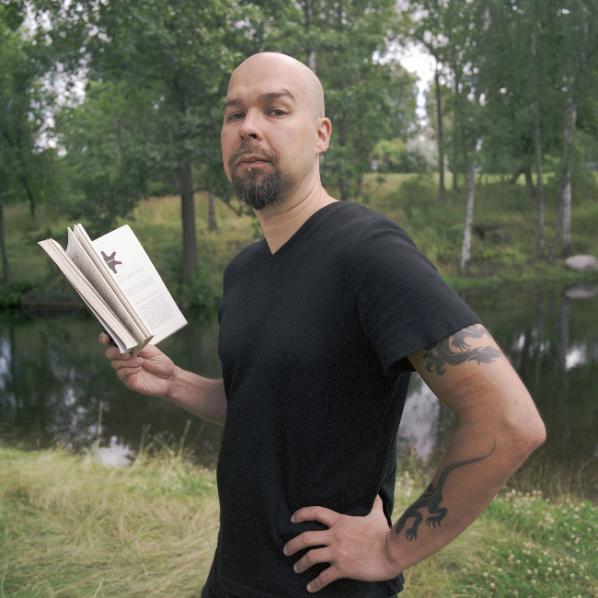
I’d urge anyone who is coming to see NWW at KOKO, to join us at the Roundhouse for the afternoon programme, particularly the conference, but also with the Open Platform stage, we hope to showcase some glimpses of the NWW legacy.
It may be worth mentioning the broadcast strand of the festival here too. Enabled by the Roundhouse Studio facilities and with creative input from Ed Baxter of Resonance104.4fm we are able to feed the festival back to the online domain for the first time. Throughout the afternoon of the 15th May, we will present a live web-zine, thereby leading an enquiry into the future of broadcasting. As part of this we will present three new pieces of work by the commissioned artists: Stefan Blomeier, VHS HEAD, and Liliane Lijn, the latter presenting an online adaptation of her Power Game project.
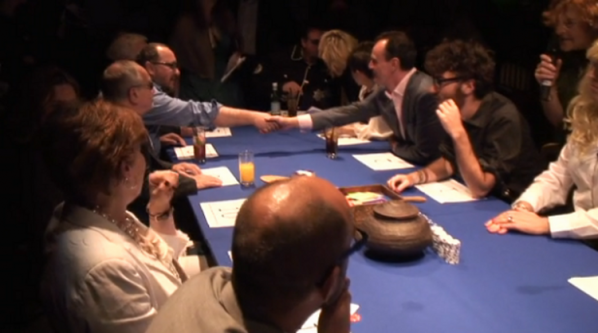
MG: This interesting development warrants investigation, not only because there is an an influx of new interest from a much larger informed and adventurous audience across the board but also because it represents an obvious, cultural dynamic at work. Reflecting a ‘real’ contemporary interest for something different to happen, beyond the remit of normative, art world restraints and its usual, hermetically sealed approaches. We will definitely be there ourselves. To experience what promises to be an engaging and critical conference, but also to explore and enjoy the other varied live events and projects.
The Conference – will bring together theorists, practitioners, activists and academics to address a challenging set of themes in 21st-century culture, featuring speakers including Matthew Herbert and Cecelia Wee: politics and protest; creativity and collaboration; digital futures and analogue survivals.
http://www.netaudiolondon.org/2011/strand/conference
Sound Art – In partnership with Call& Response Netaudio presents an event of 8-channel immersive audio-works. The dynamic and varied explorations of the nine prolific artists brought together by Call& Response highlights the vibrant and diverse field of contemporary sound art. Also there’s the Sonic Maze, an immersive series of sound art installations set in the Roundhouse Studios. http://www.netaudiolondon.org/2011/strand/sound-art
Broadcast – Using the format of a live webzine, Netaudio Broadcast will explore the future of broadcasting with a series of video and radio features. Netaudio Broadcast is co-curated with Ed Baxter of Resonance104.4fm. http://www.netaudiolondon.org/2011/strand/broadcast
Live Music – Starting at cafe OTO on 13th with Robert Piotrowicz (http://www.myspace.com/robertpiotrowicz) and Valerio Tricoli, continuing at Apiary with the runsounds hosted late night event; and the main live show of the festival, a rare live appearance from Steve Stapleton’s Nurse With Wound (http://en.wikipedia.org/wiki/Nurse_with_Wound), a special commission performance by Bruce Gilbert (ex-Wire) and Mika Vainio (ex-Pan Sonic) and Radian.
The 2011 Netaudio London festival supported by the National Lottery through Arts Council England and by the Austrian Cultural Forum London. It is presented in partnership with The Wire, ResonanceFM and Last.fm and supported by the Roundhouse and many more.
Classic video games such as Pong, Tetris, Space Invaders, Pac Man and Super Mario have in the past decade inspired many artists in their work. The common link between all of these games is that they are very easy to learn and play. There is no need for manuals, just a few simple instructions on the screen. The graphics are simple, the colours few, the characters and style are pixelated. These games have influenced a whole generation and have over time become a part of our cultural heritage. Even today, these games still amuse and fascinate players and have also inspired various artists to use them in their art. In a series of articles, we will look at some classic games and give examples of how they have been used in art and what impact they have made on the art scene. First out is PONG.
It was the American physicist William Higinbotham who in 1958 created what many consider to be the first computer game. The game was called “Tennis for Two” and was played on an oscilloscope with help of a simple analogue control.

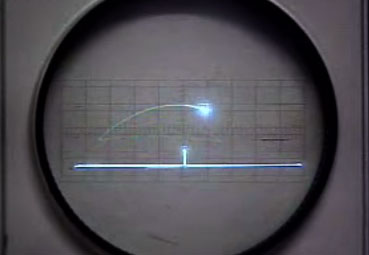
Click here to view video on Youtube…
It took, however, until 1972, when the Atari Company, founded by Allan Alcorn and Nolan Bushnell, picked up the idea and created a commercial version and called it PONG, before the game became one of the first real big sellers for the computer games industry. PONG is a simple, minimalistic game that consists of two rectangles and a square, which symbolize two tennis racquets and a ball. You can either play against another opponent or against the computer. In this simplified version of tennis, the goal is to hit the ball so the opponent misses it.
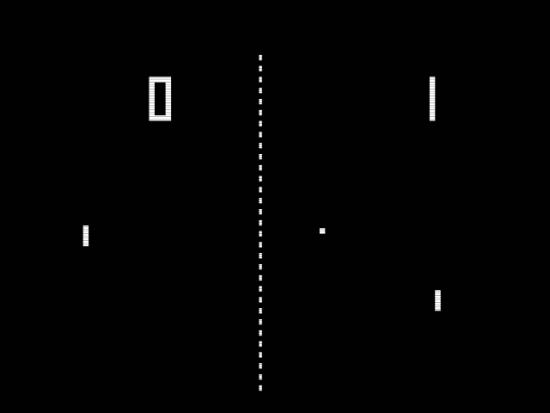
PONG is probably the videogame that has inspired most artists over the past decade. When the Computer Games Museum in Berlin in 2007 organized a major exhibition entitled “pong.mythos” over 30 artists attended with works of art inspired by PONG. The catalogue explains why PONG fascinated so many artists: “No other video game has been the origin of artistic production quite as often as the simple black-and-white tennis game. In addition to its popularity, it seems to be this minimalism that especially appeals to artists, since the playing pattern is a virtual prototype of the essence of each and every communication situation: the ball as the smallest possible unit of information, oscillating between sender and receiver” (from the catalogue “pong.mythos” 2006).
The artist group /////////fur//// showed their “Pain Station” (2001) in which the player who missed the ball were punished with physical pain, a blow on the hand, heat or an electric shock. “Pain Station” connects the physical world with the virtual and the virtual player’s mistakes turn actual real pain.
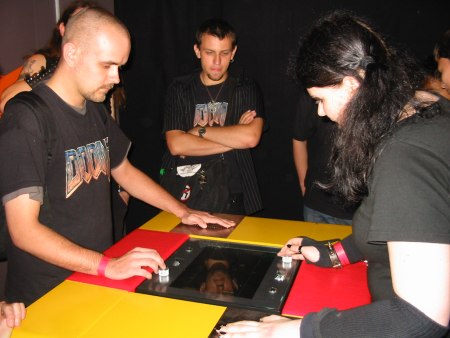
The artist group Blinkenlights working in the urban environment was represented with a project that transformed a large office building at Berlin Alexanderplatz to a digital screen where passersby could play PONG on the facade with the help of their mobile phones. In the artists S. Hanig and G. Savicic’s work “BioPong” (2005) the ball was replaced with a living cockroach where the players would try to push the insect over to the other side. And in the group Time’s Up version “Sonic Body Pong” (2006) the ball in the game was only a sound which the players could hear in their headphones and with help of large green rectangles on their heads they would try to hit the sound from the ball.
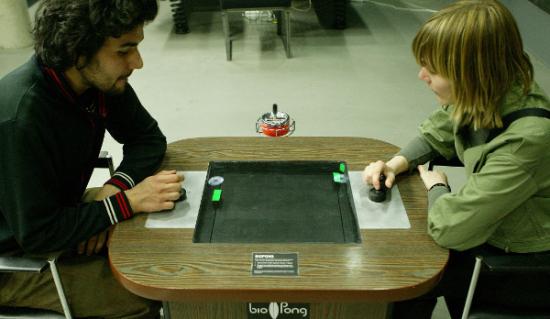
There are also many other examples that were not included in the exhibition “pong.mythos”. As early as 1999, the artist Natalie Bookchin made “The Intruder”, a work where PONG was one of 10 different videogames that she used to create an interactive artwork by Jorge Louis Borges short story “The Intruder”. The Danish artist Anders Visti mixed the game PONG with the art of Piet Mondrian in “PONGdrian v1.0” from 2007. The playing field in Vistis artwork reminiscent a painting by Mondrian but when the ball hits the fields it disturbs the lines and colour fields, and creating new opportunities and challenges for the player. Finally, I can mention the Swiss artist Guillaume Reymond, who has made a series of performances called “Game Over”. In a theatre auditorium, he creates animated sequences by using real people in colourful T-shirts, where each individual represents a square on a screen. By moving the people in the auditorium, he can create short video sequences, for example of PONG playing in the lounge.
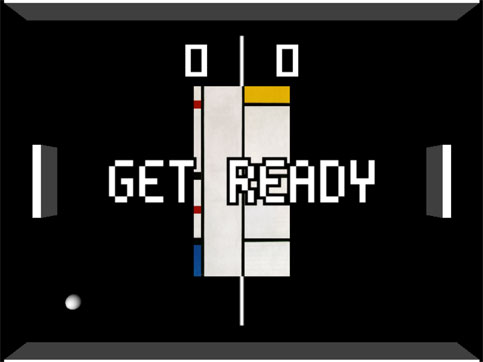
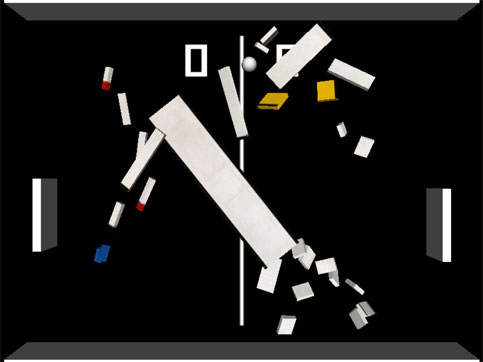
The reason that PONG is so popular among artists is that it is one of the very first video games, and therefore there is a large identification factor and a strong relationships between the game, the player and the artwork. PONG is also one of the easiest games in terms of both appearance and to learn to play, which paradoxically makes it so easy to transform and use in different contexts. The phrase “less is more” seems in this case a good explanation why PONG has inspired so many artists in recent years.
Pong Mythos – http://pong-mythos.net/index.php?lg=en
Natahalie Bookchin – The Intruder http://bookchin.net/intruder/
Guillaume Reymond – Game Over http://www.notsonoisy.com/gameover/
Anders Visti – PONGdrian v1.0 http://www.andersvisti.com/arkiv_grafik/pongdrian.html
On October 10th, 2010, the Upstage Festival of Performance Art (101010) curated by Helen Varley Jamieson, Vicki Smith, and Dan Untitled ran for approximately twenty hours, the fourth such iteration of themed dates (last year ran on 090909.) 101010 showcased thirteen new cyber performances from Canada, USA, UK, France, Germany, Italy, Sweden, Austria, Serbia, Australia, and New Zealand, most lasting for twenty minutes. UpStage was host to ten real world viewing nodes in Calgary, New York, Nantes, Eindhoven, Oslo, Ljubljana, Pancevo, Vietnam, Auckland, and Wellington. Individuals could also tune in from the comforts of their own homes.
UpStage’s audience derives from anywhere one is capable of accessing a web page, and participation does not require the installation of any new software except the ubiquitous Flash Player plug-in. The application sits on a central server, is free and open source, and programmers can add new code and share improvements and new features. Written in Python, UpStage works with third-party applications. It provides a set of tools for logged in players to work with a variety of media in real time; graphics (still images and animations), video (live web cam feeds or prerecorded video), audio (text2speech synthesized speech or prerecorded audio), text and illustrations that are collaboratively manipulated to create an improvised or rehearsed event.

Performers, euphemistically referred to as “players”, show up in the “stage” or screen area as avatars with access to a variety of pre-created backgrounds and props. When the avatars speak their words appear on-screen as a cartoon-like bubble, and their speech is simultaneously rendered in the odd robotic text2speech function. The thirteen performances were grouped into four themed categories. Temporal explored sound and movement across time and networks. Trajectory examined the path of a moving object through space, and the arc where that object intersected with the story. Tendrils wove subtle thoughts and concepts, and Transgress went beyond limits to question, challenge, and provoke.
MIT Professor Sherry Turkel in her 1995 groundbreaking book Life On The Screen first codified the anonymous audience interaction. UpStage’s appeal is its live-time interactivity that emulates the anonymity of sites like Second Life, but also employs scripted dramas that let the audience (either all of the time, or at selected moments) jump into the story. It raises the question of the difference between “stage” acting in a traditional theater, and acting in front of a virtual audience, an issue bridged by maintaining traditional chat function.
Before a scheduled performance begins, one can congregate in a virtual foyer and facilitators use a megaphone to speak in synthesized robotic text2speech voices. A second screen tab hosts the site of the virtual performance area. Depending on whom Upstage is trying to connect with, the dialogue and effects can flow swiftly, or be disrupted.

I was able to view four performances over the span of two hours. “Plaice or Sole” by Francesco Buonaiuto, Mario Ferrigno, and Simona Cipollaro (Naples) contained graphic sexual content that was presented in a purposely immature style. At first it was annoying and boring, but afterwards I was informed that was the point – to emulate and call attention to the inane comments and dialog that occur in many on-line cybersex chat rooms. A crash during the site’s interaction was a deliberate simulation of a technical failure. As one person put it, “it forced you to become engaged in the text shift.”

Active Layers, is a virtual collective includes Cherry Truluck (UK), Liz Bryce (NZ), James Cunningham and Suzon Fuks (Australia). They combine theatre, dance, video and visual arts both digitally and conceptually to redefine the meaning of location and site. Their animation piece “Aquifer Fountain” focused on drought, water, flooding, and devastation, with mothers dreaming of lost babies. During the performance the actors participated from London, Kawerau and Milwaukee.
“Make Shift” is a work in progress by Paula Crutchlow (UK) and Helen Varley Jamieson (NZ/Germany). They used the Upstage audio-visual conferencing tools in two deliberate domestic spaces to link their cyberformances, thus creating a third discursive space. The discussions focused on the political aspects of domesticity such as “nesting, feeding and mobility,” and how this relates to the experience of globalization.
“MASS-MESS ” by Katarina DJ. Urosevic & Jelena Lalic (Serbia) ran both virtually and at the physical node at Galerija Elektrika in Pancevo. It was a study of structures, mass media and independence in the context of a hierarchy of information without a center playing out like a post-Soviet Politburo manifesto. “MASS-MESS” made it onto Serbian TV, as evinced by a subsequent newscast posted onto YouTube.
Between July 27th and August 29th, 2010, the eleventh edition of the FILE festival is taking place in Sao Paulo (Brazil), at several locations along the popular Paulista Avenue. After a decade of existence, this veteran festival, which spreads over several cities in Brazil (including Rio de Janeiro and Porto Alegre) as well as other international locations, has introduced for the first time its own award: the FILE PRIX LUX. With a total amount of approximately 120,000 euros, distributed in three categories, the prize is unprecedented in the continent and has received, on this first edition, 1,235 registrations from 44 countries.
Yet this award is not the only remarkable aspect of this year’s festival, which stands out for being particularly accessible to the general public. On the one hand, the exhibitions, performances and workshops as well as the symposium have no entrance fees, and therefore there have been many visitors, most of all young people who line up every day to experience the interactive installations at the FIESP-Ruth Cardoso Cultural Centre. On the other hand, the festival organizers, Ricardo Barreto and Paula Perissinotto, have developed this year a project that takes digital art to the Paulista Avenue by placing several interactive artworks at different locations in the public space. Finally, even the FILE PRIX LUX has been open to the interaction with the public by introducing a popular vote category and an online voting system which was accessible between May and June. This openness sets a good example of how media art festivals can engage the general public to approach this somewhat ignored form of art.
In general terms, the award categories at media art festivals have been subject to change as the creative uses of technology evolved during the last decades. The FILE PRIX LUX has the advantage of being created at a time in which it can be relatively safe to set up a few broad categories that cover most of the forms of combining art and technology. Only three categories have been established: Interactive Art (which usually refers to objects and installations that respond to inputs from the viewer/s), Digital Language (related to the festival’s title and which embraces any artwork that deals with language, narrative, code or text in a generative or interactive manner) and Electronic Sonority (the category assigned to any artwork in which the production or manipulation of sound is a key element). These three categories prove to be comprehensive, as shown by the diversity of the projects distinguished with a prize or an honorary mention: immersive interactive installations, musical performances, urban interventions, bioart pieces, a collectively created machinima movie and even an iPhone app are among this year’s FILE PRIX LUX awardees.
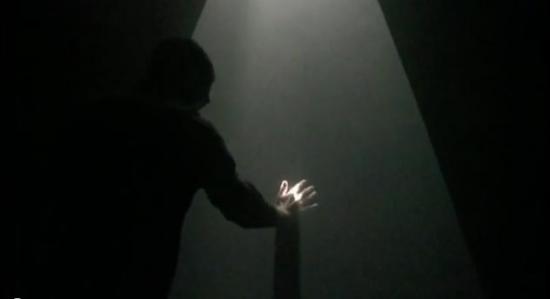
In the Interactive Art category, the winners are Ernesto Klar for Relational Lights (1st prize) and Kurt Henschläger for Zee (2nd prize). Both present immersive environments in which light and space are key elements, although the interaction is totally different. Klar’s work invites the viewer to interact with two projected geometric drawings inspired by the work of Lygia Clark. In a hazy dark room, the viewer sees two T-shaped projections of white light on the ground, which form a three-dimensional space which reacts to the visitor’s presence. The interaction is playful and really beautiful in its simplicity, whilst also limited in time: after a few minutes, the projections suddenly stop reacting to the user’s movements and reconfigure themselves in a new shape. This abrupt interruption is consciously introduced by the artist in order to remind the viewer that the artwork has a life of its own. In contrast, Henschläger’s Zee takes place mostly in the mind of an audience exposed to an overdose of audiovisual stimuli in a foggy room. Continuing the experience of his acclaimed performance FEED, this time the artist allows the viewer to walk around the space and have a more meditative sensory experience.
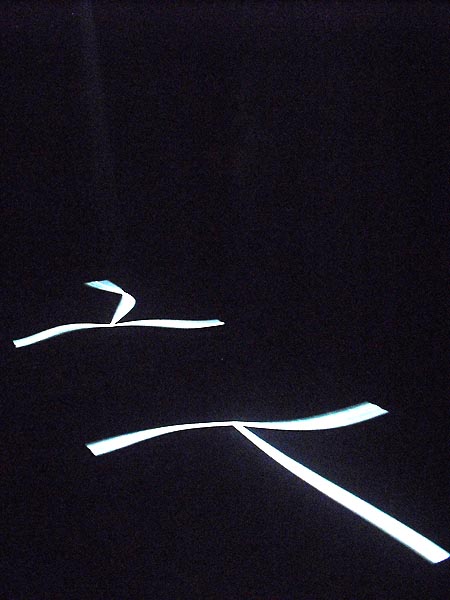
The Electronic Sonority category has brought together several outstanding works, among which Jaime E. Oliver’s Silent Percussion Project and TERMINALBEACH’s Heartchamber Orchestra have been distinguished with the 1st and 2nd prize, respectively. In both projects the human body is incorporated in a novel form in the creation of music, the sound being produced, moreover, not simply by direct inputs but by complex interactions in a constant flow of data. Oliver’s instruments convert the shapes created by the performer’s hands into streams of data that generate, in turn, different sounds. These sounds are not always the same, as could be the case in a traditional instrument, but are changed by the variables established in previous interactions. Thus, Oliver does not simply create a new form of interacting with an instrument but rather a new form of creating music. In a similar way, the [i]Heartchamber Orchestra[/i] project developed by TERMINALBEACH (Erich Berger and Peter Votava) explores a form of creating music based on a feedback loop in which the performers are writing and following the score at the same time. As the artists state, in their project “the music literally comes from the heart”: a network of 12 independent sensors record the heartbeats of the musicians in an orchestra and sends the data to a software that generates a musical score in real time. The musicians play the score as it is displayed on the laptops in front of them, while their heartbeats set the notes in a continuous cycle in which music and performer constantly influence each other.
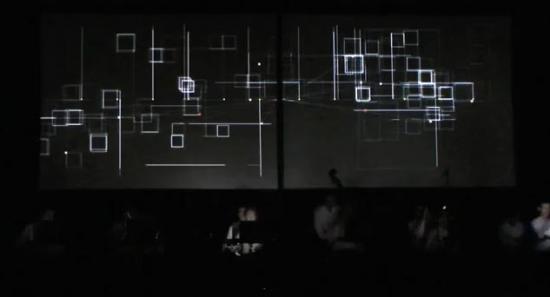
Digital Language is certainly the broadest category of this FILE PRIX LUX, its awardees being quite dissimilar in the formats they use and the objectives of their respective projects. The organizers define this category as including “all research and experiments in the ambit of the multiple disciplines that use digital media”, and the winners exemplify how diverse these disciplines can be. The 1st prize winner, Tardigotchi by the artists collective SWAMP (Douglas Easterly, Matt Kenyon and Tiago Rorke) is a bioart project that sets a critical comparison between artificial and real life. A nicely designed, steam punk-inspired device hosts, on the one hand, a tardigrade, a microorganism measuring half a millimeter in length, along with a robot arm that injects a substance that feeds the creature and a heating lamp that provides warmth. On the other hand, a digital display shows the virtual avatar of this tardigrade, with which the user can interact. Humorously referencing the popular Tamagotchi toy, the artists create a link between the avatar and the real creature: when the user presses the button to feed the avatar, the device inserts real food in the environment of the tardigrade; when an email is sent to the digital creature, a heating lamp gives warmth to the microorganism. Thus, interacting with the virtual pet has consequences in a real living being. This brings our attention into what we can consider alive and how we emotionally attach to artificial creatures while at the same time we undervalue the existence of other living beings. On a different approach, the 2nd prize winner, Hi! A Real Human Interface, by the collective Multitouch Barcelona (Dani Armengol, Roger Pujol, Xavier Vilar and Pol Pla), proposes a more human relationship with technology. A video presents the concept developed by this interaction design group of a different GUI in which a real person is displayed as impersonating the computer. Common interface elements are replaced by handmade physical objects which remind the aesthetics of a video by Michel Gondry. The result is a playful form of interaction in which simple operations such as checking email or upgrading the operating system are shown as actions carried on with real objects by a person inside a box. The proposal is engaging and certainly sets a departure from the old desktop concept, yet it remains unsure to what extend this type of interaction can be applied in a real operating system.
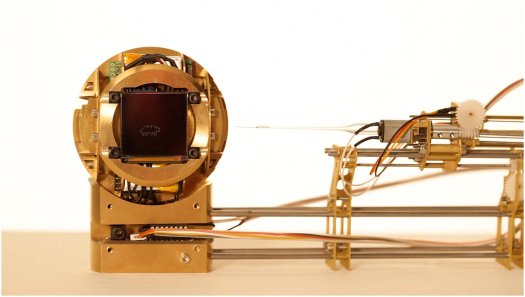
The works that obtained a Vesper statuette (symbol of the FILE PRIX LUX award) along with the also outstanding Honorary Mentions are exhibited at the FIESP-Ruth Cardoso Cultural Centre in a group show that also includes FILE Media Art, a selection of more than 70 works that can be accessed on several computers, as well as a selection of videogames and machinima films. The exhibition is thus richer in content than it would seem at first sight, as the space is divided in numerous sections that conceal several installations which demand (as usual) almost total obscurity. The artworks are well presented, although at times the sound from one installation invades the others, and there are no wall labels that inform the viewer about the concept of the piece or the way to interact with it. The latter, much-discussed issue is quite important, since the info-trainers cannot explain the artworks to every visitor, and quite often this entails that some people may not interact with the pieces or worse, start smashing buttons or interfering projections blindly in the hope of modifying them. Despite this fact, the exhibition has proven to be very successful during the first week of the festival, with a steady flow of visitors who showed a profound interest in the artworks.

A part of the exhibition is devoted to the FILE MACHINIMA section, curated by Fernanda Alburquerque, who selected over 40 works. Among these is the award winner in the Popular Vote category, War of Internet Addiction, by Corndog and the Oil Tiger Machinima Team from China, a 64-minute movie collectively created by players in the MMORPG War of Warcraft. More than mere entertainment, this film has been created as a form of protest against the Chinese authorities’ attempt to control the access and commercial benefits derived from the WoW game, which is extremely popular in the country. The film has had 10 million views since January 2010 and despite being available only in Chinese, it has been the favorite work of those who participated in the online voting system of the FILE PRIX LUX. Besides this feature film, other short films explore the possibilities of building narratives in virtual environments such as Second Life and videogames such as Half Life 2, Eve Online or Shadow of the Colossus.
In addition to the main exhibition, the FIESP Cultural Centre hosts a series of performances and screenings. Under the title Hypersonica, the festival presented a series of digital music performances, among which where the two winners of the FILE PRIX LUX in the Electronic Sonority category. FILE DOCUMENTA, curated by Eric Marke, offers in its 5th edition a selection of “rare and new” documentary films, among which Andreas Johnsen’s Good Copy Bad Copy, an interesting exploration of the conflicts between remix artists and copyright owners, or Robert Baca’s Welcome to Macintosh, which records the first years of the history of Apple Computers.
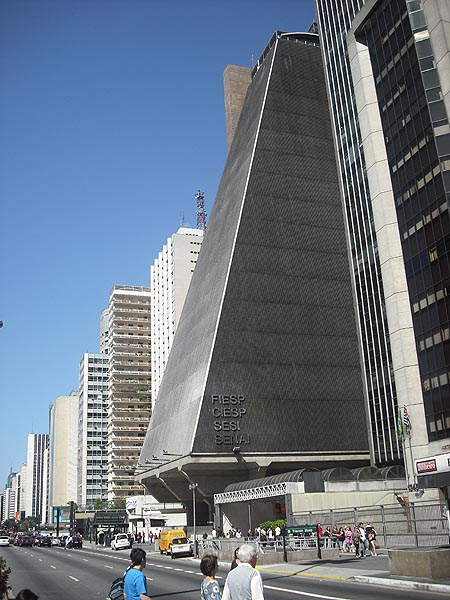
The symposium, hosted by the Instituto Cervantes in Sao Paulo, gathered several experts and artists who presented their explorations in the theory and practice of media art. Among the most interesting contributions were the presentation of Prof. Espen Aarseth on the aesthetics of ludo-narrative software, and the colloquy of South American digital art, in which Raquel Renno (Brazil), Jorge Hernandez, Ricardo Vega (Chile) and Vicky Messi (Argentina) discussed the current developments in the media art scene in the South Cone.
Alongside the FILE PRIX LUX, the most outstanding feature of the present edition of the festival is FILE PAI (Paulista Avenida Interactiva), which takes several interactive artworks to the public spaces in the Paulista Avenue. Interactive art offers the possibility of bringing art to the public space in a more efficient and dynamic form than what is usually known as “public art”. As Ricardo Barreto states: “the public environment is not something empty, aseptic and dead, as is the old white cube; on the contrary, it is an environment teeming with life, with multiple interests and multiple behaviors”. Interactive art integrates itself into this environment and is much more apt to relate to a public that is now willing to take an active role. The organizers of the FILE festival have distributed twelve interactive artworks along the Paulista Avenue, at subway stations, inside shopping malls, and even in a bus. The selected artworks include, among others, videogames such as Patrick Smith’s Windosill or the celebrated games of That Game Company, Flower and Flow; VR/Urban’s SMSlingshot, an urban intervention project that allows users to write a message in a custom-made slingshot that incorporates a screen and a keyboard and then send the message to a wall, where it is displayed as a virtual graffiti; Karolina Sobecka’s Sniff, an interactive projection in which a virtual dog reacts to the presence of passersby; the installations of Rejane Cantoni and Leonardo Crescenti Piso and Infinito ao Cubo, which attracted a large number of people, and the sound piece Omnibusonia Paulista by Vanderlei Lucentini, which is played in a bus as it moves along the avenue, interacting with several points in the itinerary and thus generating a new set of sounds in every trip. These works reveal the possibilities of integrating interactive art in the public space, to the point that, as Ricardo Barreto indicates, “the new paradigm of public art will be the interactive city”. The busy Paulista Avenue is certainly a good location for the creation of an emerging, interactive city.
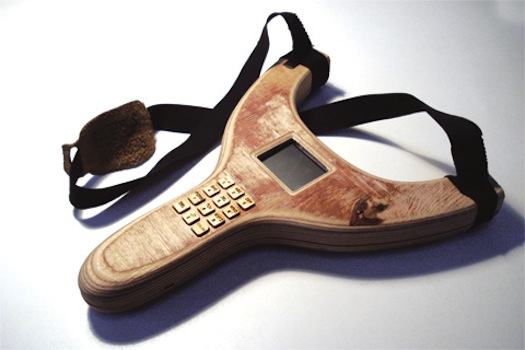
In this 11th edition, the FILE festival has achieved a state of maturity. The FILE PRIX LUX, FILE PAI and an estimated 25,000 visitors to date support its claim of being the largest festival of its kind in Latin America, and a steady event that places Brazil in the map of the international digital art scene. In a tightly interconnected world, each region is a node: there isn’t a center and a periphery anymore, there are no colonies. FILE exemplifies how a region can become a powerful node in this network by promoting the most recent developments in art and technology, avoiding obsolete distinctions between North and South and becoming a point of development for the future stages of our digital culture.
A collaborative review by Marcello Lussana and Gaia Novati
The article features artwork, projects and conference highlights from individuals and groups/organisations such as Honor Harger, Gebhard Sengmuller, Franz Buchinger, Ryoji Ikeda, Julian Oliver, Damian Stewart, Clara Boj, Diego Diaz, Ken Rinaldo, Michell Teran, Aaron Koblin, Daniel Massey, F.A.T, Warren Neidich, Kahaimzon Michel, Bruce Sterling, I-Wei Li, Steve Lambert Matteo Pasquinelli and more…

This year’s Transmediale.10 Festival explores the theme ‘future’ through connections between arts and technology. A part of the introduction read “Futurity is a concept that examines what the ‘future’ as a conditional and creative enterprise can be. At its heart lays the intricate need to counter political and economic turmoil with visionary futures. […] what roles internet evolution, global network practice, open source methodologies, sustainable design and mobile technology play in forming new cultural, ideological and political templates.”
2010 is a year that has often represented the future in Science Fiction literature, such as Arthur C. Clarke’s 2010: Odyssey Two, and now here we are. A good time to compare how we percieved the future, the past, and assess what is really happening, what we lost and what we have gained, and ‘perhaps’ find better ways to proceed. Art can offer different perspectives, ways of seeing and understanding, revealing our present states of being, sharing alternatives or even new meanings for our futures. This festival allows those visiting and taking part, an opportunity to explore, negotiate possible avenues in understanding together, what all this means.
Most of the Transmediale.10 events and art presentations were hosted at Haus der Kulturen der Welt, the same venue for past editions. The main exhibition Future Obscura, was curated by Honor Harger. A big dark room, a labrynth of exhibits divided up with high black curtains. Presenting different artworks enhanced by their own resonances of light. The concept was to use the actual light-sources from each of the artworks, as a kind of curatorial, installation metaphor. Immediately effecting the visitor’s experience through its overall ambiance, built around the theme or vision of future.
We make our journeys out there in the low light of the future, and return to the bourgeois day and its mass delusion of safety, to report on what we’ve seen. What are any of these ‘utopian dreams’ of ours but defective forms of time-travel? Thomas Pynchon, Against the Day (2006).
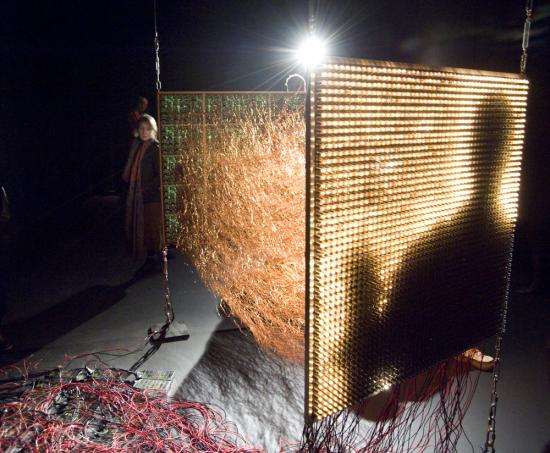
The work Parallel Image by Gebhard Sengmuller, in collaboration with Franz Buchinger, supported by Fels-Multiprint may of inspired the whole concept. An electronic camera obscura and media-archaeological, interactive sculpture. An apparatus for presenting different possible fictions, futures. “Unlike conventional electronic image transmission procedures, “A Parallel Image” is technologically completely transparent, conveying to the viewer a correspondence between real world and transmission that can be sensually experienced.” It presents the fiction that the technology of transmitting moving images was not discovered or invented at all – so no electronic pixels, just a camera and a monitor connected by 2,500 cables in order to track the movement of a body or an object.
Whilst weaving through the dark, curtain bound maze, discovering the separated presentations of Future Obscura, or what we can consider playfully here, as the ‘futurity tunnel’. We come across the video-audio installation data.tron, part of the datamatics project by Ryoji Ikeda. A huge screen (about 15 ft high & 40 foot wide) stands in front of visitors on a flat wall-surface. Various projected sets of data – consisiting of databases, computer consoles and white noise move and unfold before your very eyes. Music plays along with the images issuing forth deep hypnotic sensations. Each single pixel is strictly calculated by a mathematical principle and composed from a combination of pure mathematics. Ikeda reuses and deconstructs the data, building it up into a massive art-work, which also becomes an immersive experience. The same concept was used in his live performance at Transmediale.10 ‘Test Pattern’.
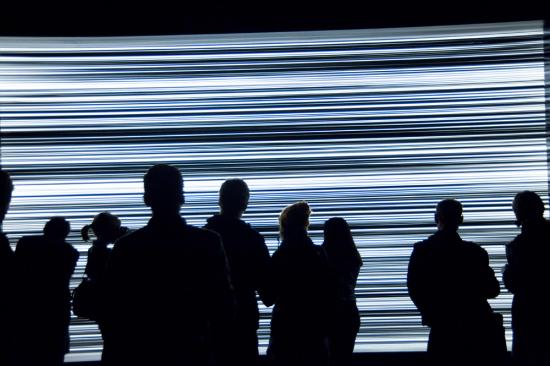
The Artvertiser, a work by Julian Oliver, Damian Stewart, Clara Boj and Diego Diaz, is a tool to swap advertisement with art in public spaces. With a self-made binocular device and dedicated software, you can experience a new metropolitan landscape, replacing the omnipresent adverts which plague our urban environments with art or images of your choice. The swapped, proposed images are often a play on the words of the original advertisement. Whichever image one substituted, the central message of the Artvertiser remains the same; our public city landscapes are bulging with publicity, we want to take that space back and personalize it – quite the same concept of graffiti, but dealing with the reproduction and re-representation of our public spaces. The software running on the device is an open source project and it will soon be available for all to download and use with Smartphones and Standard Camera phones. The Artvertiser points out a thoughtful and critical view point of our present, proposing an alternative future directly linked to our everyday lives. Ironically, this is a theme that is unfortunately scarce or missing in most of the selected Transmediale.10 works.
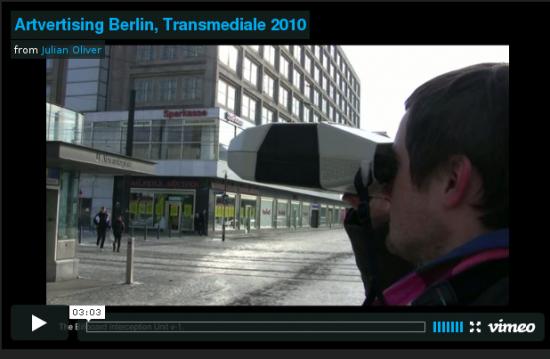
The work Paparazzi Botsby Ken Rinaldo, consisting of a series of autonomous robots. Each of them upright, the height of the average human. Packed with lens-based hardware, such as “cameras, sensors and robotic actuators on a custom-built rolling platform, they move at the speed of a walking human, avoiding walls and obstacles while using infrared sensors to move toward humans.” Capturing images of the visitors as though they were celebrities, flashes go off, then the images are projected up onto the surrounding walls. A popular installation reflecting on the abuse of reproduction and exhibition: some of the images were also uploaded and then distributed through social networking sites – a mass mediatic celebration of the visitors as well as the celebration of the bots.
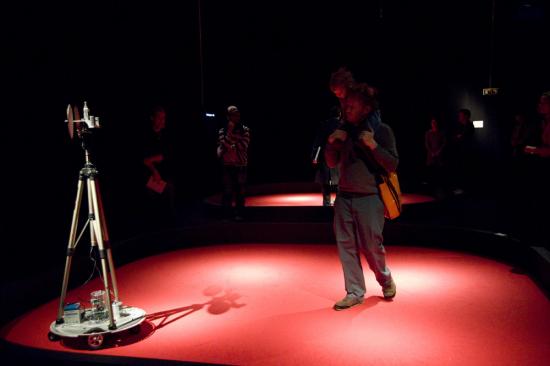
The selection of Transmediale.10 seems to award reproduction of content rather than consciousness of a different form of creativity. Also, the main prize is unexpectedly given to a woman, Michell Teran, with the project Buscando al Sr. Goodbar: a real tour through Murcia, a Spanish town, taking place at the same time on Google Earth and YouTube, an interaction between reality and social media. The work was presented at Transmediale.10 as a video remix of the original work. “The tour audience was introduced to everyday performances and actions happening in the city that often go unnoticed. Somebody solves a Rubik’s Cube in under 2 minutes, a young man plays a piano, a group of friends drunkenly sing together, a 14 year old boy headbangs in his bedroom, somebody is choked, a man teaches himself Arabic and two people fall in love. At certain points the audience left the bus and met some of the video authors who presented them with re-enactments of their performances.”
In the same way the second prize was awarded to the project Bicycle Built For Two Thousand by Aaron Koblin and Daniel Massey. A web-based, software able to record people repeating what they heard, then they used these voices to make a reconstructed version of the song Daisy Bell – the first song that implemented musical speech synthesis in the 1962.
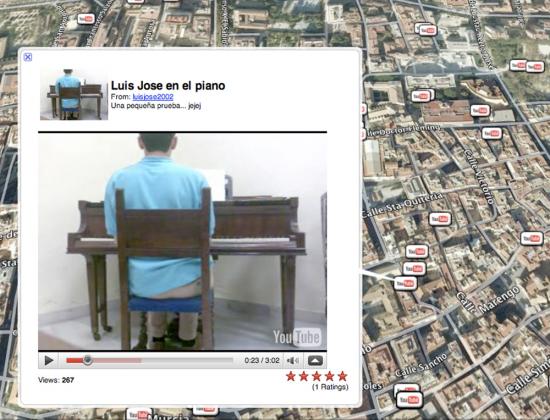
Speaking about the difference between re-production and creation, it is interesting to notice that the group F.A.T were present at the awards. Using intentionally, and excessively open source and pop culture as way of expressing their creative actvities, claiming and distributing activist propoganda-like projects, on networked territories and facilities (facebook/google ndr.) in order to stress out the holes of content present in the Web2.0 culture. For Transmediale.10, they presented a series of projects dedicated to the topic of the week: FUCK GOOGLE. In addition to free software, browser addons, live streams, communiques and on-site workshops, they also built a fake Google Street View car and toured it in the city of Berlin.
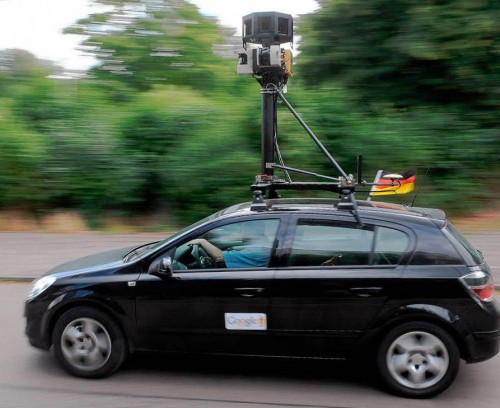
A more singular approach, which revealed different or other connections of a network is shown in Neuropower, by the biologist and artist Warren Neidich who won The Vilem Flusser Theory Award 2010: he researched new ways to manipulate the process of ongoing cerebral reconstruction. Exploring the potential of Neuroaesthetics, formulated in the mid-1990s “as a paradigm capable of describing the complex conditions of the ‘now’-a moment in which global technological networks and novel potentialities for subjectivity are coming into greater focus and correlation to each other. As knowledge becomes ever more commodified, and labor increasingly immaterial, our notions of art, work, and politics…”
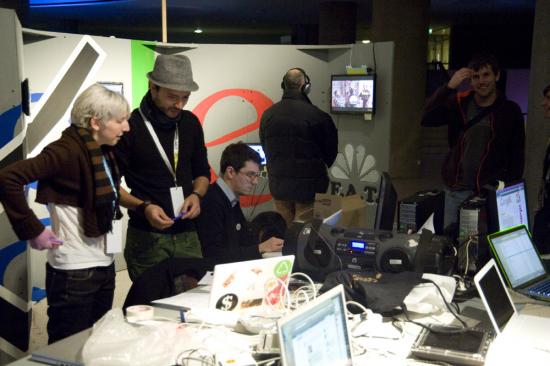
The gap between what could be the future or what we are imagining through the mass-media industry and the challenge that artists and creative thinkers are asked to face, is not really elaborated. A good example is the conference Phuturama: a space dedicated to the possible alternatives of an ‘imaginary’ for the future. One of the guests was Kahaimzon Michel: his description of the new version of Far Cray was mostly focused on the technical improvement of the game and no word at all was spent on the idea, the concept itself: the umpteenth war-games, colonialist and male-centered. The celebration of technology itself was the splitting point of this Festival, as it was somehow already announced at the opening day by Dr. Franke. His main contribution seemded to be about the importance of ‘Avatar’ the movie, for its big technological improvements.
Going back to the events, one of the most awaited speeches was Bruce Sterling’s keynote speech “Atemporality – A cultural speed control” about time and its relation to ‘future’. The main introduction text for Atemporality – A cultural speed control read “The speed of our society is constantly increasing in terms of processes, logistics and media, causing the present to ‘shrink’. We are experiencing the dissolution of meaningful frameworks in a similar way as Henry DeTamble: in politics, the intervals of planning and acting are reduced to the duration of a legislative period and in post-industrial economics volatile unpredictability has come to replace regular traits of growth and stability. Progress as the paradigm of modernity has been replaced by the continuous modulation of events. If progress is to go beyond the banal indulgences that give rise to a never-ending array of car shell designs then we need to analyse our present time with regard to its aesthetics and its media. The structure of the future has changed, and with it our sense of time. Are we running out of a future as a resource for growth, progress and stability? Has our cultural cruise control become defective?”
Reflecting on the proposed theme, Sterling presented Atemporality as he viewed it, an approach in understanding and recontextualizing history, “an effort in humanities” to embrace reality, the now.
“Step one – write problem in a search engine, see if somebody else has solved it already.
Step two – write problem in my blog; study the commentory cross-linked to other guys.
Step three – write my problem in Twitter in a hundred and forty characters. See if I can get it that small. See if it gets retweeted.
Step four – open source the problem; supply some instructables to get me as far as I’ve been able to get, see if the community takes it any further.
Step five – start a Ning social network about my problem, name the network after my problem, see if anybody accumulates around my problem.
Step six – make a video of my problem. Youtube my video, see if it spreads virally, see if any media convergence accumulates around my problem.
Step seven – create a design fiction that pretends that my problem has already been solved. Create some gadget or application or product that has some relevance to my problem and see if anybody builds it.
Step eight – exacerbate or intensify my problem with a work of interventionist tactical media. And step nine – find some kind of pretty illustrations from the Flickr ‘Looking into the Past’ photo pool.” Sterling.
The philosophy of history studies, an objective point of view, a map that does not always reflect the real. Atemporality instead, has to be a “calm pragmatic skepticism about the historical narrative” like telling stories of people who were not the winners, report history that has no literacy or playing fiction into reality, being a “personal public testimony of a future that doesn’t exist”.
“Atemporality is a philosophy of history with a built-in expiration date. It has a built in expiration date. It’s not going to last forever. It’s not a perfect explanation, it’s a contingent explanation for contingent times.
Futurity was expected, futurity is here now, there goes futurity into the past, so long futurity, thank you for an exciting, fulfilling and worthwhile time.” Sterling.
The Atemporal approach asks us to cool things down, challenge the need and desire for a constant, linear future. Proposing not to rush ever onwards, remembering what we have now, reclaiming and rediscovering the qualities we possess rather than feverishly running forward all of the time. You can read Bruce Sterling’s whole speech here – Atemporality for the Creative Artist
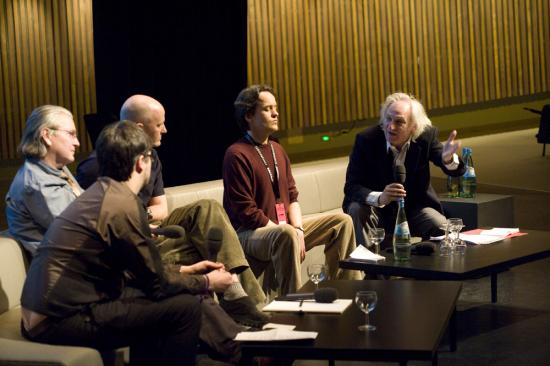
A subject which played a central role for much of the discussions held, was related to the economy and how it addresses the creative work (a third of the speeches were about this topic). The financial crisis had also influenced much of the artistic agenda. Unfortunately all this talking about commerce was often presented without critical reasoning, and so we had a lot of showing off and gesturing about how amazing certain new technologies were. Which gave off a more bland sense of enthusiastism, a technologically determined, already accepted future, without the necessary awareness of the overall social contexts of what it all really means. Yet there were some projects that tried to propose a different view on this theme. The performance Values, by I-Wei Li, pretended to calculate, with the help of a computer, the value (artistic-value) of the participant, based around questions on art and art practice. The Laboratoire Deberlinisation uses an uncommon way to discuss about immigration and value in our globalized world, with the provocative use of an African value, the Afro, an international insurance card and passport.
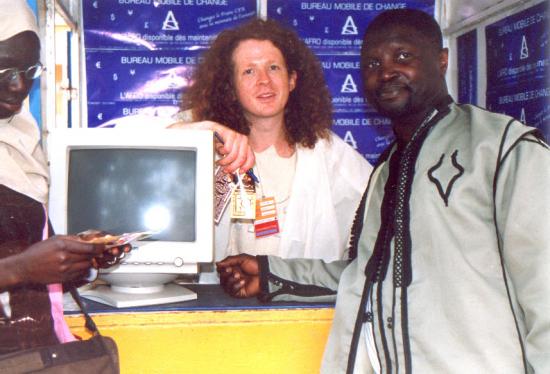
A deep critical, discussion of the current socio-economical situation produced by the international financial crisis, was held in the main auditorium, Liquid democracies. Steve Lambert presented his works and talked about direct politics, re-using our culture and how to subvert it. In his opinion, utopia has to be used as a direction and not as a destination, living moments of freedom: an alternative approach for direct, political change, using small actions and persistence, participating tactically through our cultures. Matteo Pasquinelli later focuses attention on the whole of net society and the digital matrix. He wondered who has the strongest power, who detains the monopolies and which place is dedicated to the workers and specifically to the cognitive (creative) workers? Pasquinelli used the concept of a “new feudalism” to define contemporary societies. The multitude is not fluid but embroils in a participatory process that traps it in-between the oligarchy of the big companies. Democracy in this sense has ended and gives the go-ahead to a post feudalistic society. The end of this construction is an open question: is there any subject able to break the power of these big monopolies?
Parallel to Transmediale festival is Club Transmediale Festival CTM a music and visual arts event held every year in Berlin. The festival started as the musical side of Transmediale and then added more and more interests involving the arts. Through the years it has become more popular and expanded, not just with music during the night, but also with their own exhibitions, talks and lectures during the day. This year the event was even longer than Transmediale itself, starting from January 28th and ending February 7th 2010, with the subject “OVERLAP – Sound & Other Media” giving a lot of attention to the relationship between music and videogames.
A missing element worthy of attention at Transmediale.10 this year, was its audience. Even though the amount of visitors were three times more than last year. The time for questions and discussion with the public was often too short, or ineffective. A contemporary approach in acknowledging the audience would be to understand there is not a clean divide anymore. And even though the old protocols still count in some cases, its representation at the festival was not necessarily a true reflection of the nature of networked, contemporary art and its culture. A hidden and dynamic audience which could have offered their own ‘valid’ interpretations around the subject was lost. Yet, on the whole the festival was extremely interesting in many ways, and had some excellent works and discussions well worth experiencing.
Featured image: make art is an international festival focusing on Free/Libre/Open Source Software (FLOSS), and open content in digital arts
make art, one of the world’s most important free and libre art events, happens far away from the European metropolis, in the small town of Poitiers. However, it does not represent an integral piece of the ville‘s agenda to favour cultural tourism and development, as we might suppose thinking of some Brazilian film festivals and even of Bilbao’s Guggenheim. If something is to blame, it should be the grassroots effort of the native GOTO10 collective.
The name might sound familiar because not long ago they were doing a series of workshops in the UK to introduce FLOSS tools using their own pure:dyne operational system – a GNU/Linux distribution for multimedia creation. Having received some funding from the Arts Council, pure:dyne recently grew in efficiency and popularity.
Personally, the first time I heard about GOTO10 was in 2006, at that year’s Piksel festival. Some of the group’s members were there for audiovisual performances. Yes, they are artists as well – in fact, on the same days of make art, the group was taking part in the Craftivism exhibition, in Bristol. And between producing events, engineering software and, well, making art, they also found time to publish a book.
As diverse as these projects might be, they can all be inferred from the GOTO10’s creative practice, in respect of their real time interaction with people (in workshops) and machines (in live coding, etc). Given the way make art, pure:dyne and the group’s performances are interconnected, we could see them as one and the same activity, extending itself to various platforms.
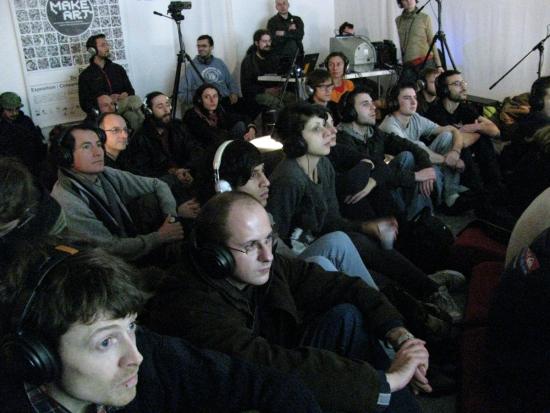
I wouldn’t go as far as to say that, similarly, GOTO10 is a poitou group that has been expanded to other parts of the world. But, now that it has members from Greece, the Netherlands, Taiwan and the UK, the localization of make art seems even more meaningful to the collective’s identity, hinting on where and why it started.
According to Thomas Vriet, one original member who is still in town and mainly responsible for make art production. The group first got together in 2003 to promote digital art performances, workshops and exhibitions in Poitiers – sharing thoughts and ideas on things they were interested in, but could not find in the local art scene or École de Beaux-Arts.
So, in the same way pure:dyne was developed to cope up with GOTO10’s own needs for a live operational system capable of realtime audiovisual processing, make art is the ideal festival they’d wish to attend in town. Both projects find their reason in the group’s artistic demands, and grew simultaneously from it: the inaugural version of the distro was released in 2005, right on time to be used in a workshop in the first make art the following year.
Even though make art’s production is concentrated locally, the event is curated online, by the whole of GOTO10. The other member directly implied in this year’s planning, Marloes de Valk, arrived from Amsterdam just in the first day of the festival. make art is a group initiative that cannot be isolated from the larger open source community – a circuit that includes not only artists and programmers, but other venues as well. It is from this sizeable repository that the pieces that constitute the event’s programme come from. The aforementioned Piksel, for instance, has previously contributed to make art with a special selection of Norwegian works, creating an unexpected interchange between Bergen and Poitiers.
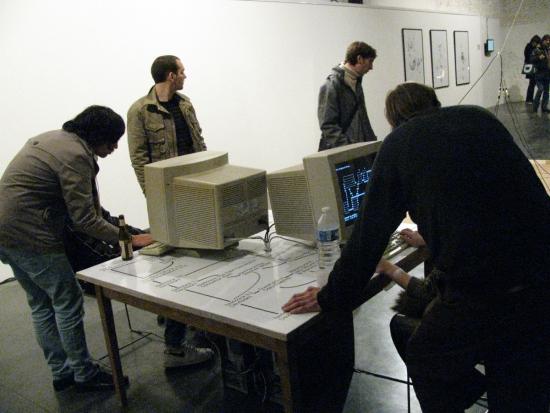
Together with the different Pixelache editions, these festivals form an international calendar of FLOSS art events, closely committed to developments in technology and aesthetics that, in many senses, are far more interesting that the new media proofs-of-concept proliferating elsewhere. But how does such package of extraordinary themes work in the traditional platform of the French countryside?
Altogether, make art seems to be the right size for Poitiers – not too small to feel incomplete, neither too big to feel overwhelming. The night programme may put you off if you are on a budget and decided to stay in the youth hostel (like me): there are no buses to that area after 8pm, forcing you to endure a half hour walk through cold streets. Apart from that, the city space is very well occupied by the festival, with the exhibition and debates in the central Maison de l’Architecture and a couple performances in other venues, emphasizing the curatorial logic. Posters are everywhere in town, competing for attention with those from the film festival.
However, the participation of the poitou community seems very restricted. So far, no local project has ever been sent in response to make art’s call. It might be that the theme is still alien to most people. Not surprisingly, the activity that attracted the majority of local public was the debate “Internet, Freedom and Creation” – which, beyond dealing with themes of more general concern (digital freedoms and copyright), was in French.
One of the efforts to increase this involvement was to open free places in the Fork a House! workshop to local students. Student volunteers could also be found mediating the exhibition and assisting production.
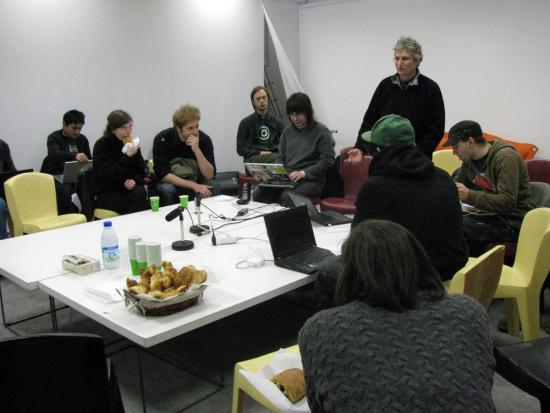
In that sense, the project that seemed to make the most of the festival’s situation was the frugal Breakfast Club. The first of these morning talks hosted by Nathalie Magnan was especially refreshing after the highly technical presentations the day before. Complex subjects were re-discussed over croissants, bringing the tone and rhythm of the event closer to the atmosphere of the #makeart IRC channel (which sometimes was livelier than the physical space).
The priority of Breakfast Club was not transparent accessibility but dialogue. Less of a tutorial and more like the public forum an open-source project cannot really do without. It made things more understandable to a laymen’s audience; it made the whole festival experience more coherent, pointing to directions in which it should grow within the city’s everyday life and structure – without having to be included in Poitiers’ tourism department masterplans.
Image: Wilfried Agricola de Cologne. All images courtesy Wilfried Agricola de Cologne
A person would think that, while watching the infrastructure of print journalism implode, or while noting the universal flight of viewers away from the television set, film makers would learn from the missteps of other mediums and make an early ally of internet distribution. But, for the most part, no, that is exactly what is not happening in film circles. Artists and film makers may put a trailer or a few movie stills up on a web page, but the film itself? Even in the age of broadband, it seems Netflix takes online distribution more seriously than curators. Fifty years after the invention of the internet, it’s still the case that screening a film online will certainly invite rejection from a festival circuit of jurists seeing premieres.
Since more than half the video I watch is now online video, my first question for artist Wilfried Agricola de Cologne was what he thought of these types of film festival policies. According to Agricola: “This is completely out of date. We live now in 2009, not in the media stone age of 1980. I think such a policy is principally wrong, since it is up to the artists/directors to choose and decide how they want to deal with their creative products.”
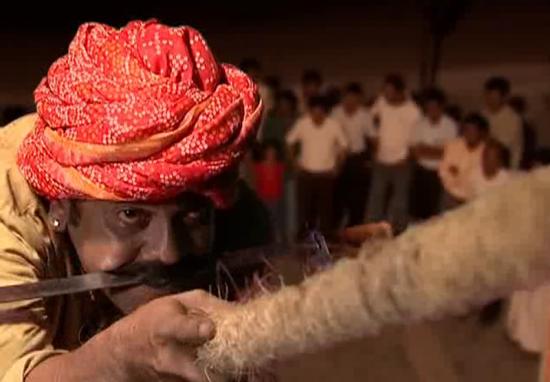
A media artist and film director himself, Agricola is also the founder and of the Cologne Online Film Festival, or CologneOFF, an online festival where I’ve lost more hours than I want to admit watching great art films from all over the world. Agricola describes CologneOFF as a new concept in art cinema – the networked festival – which includes a networked jury, networked contributions, networked screenings, and networked audiences. Now in its fifth year, CologneOFF takes place in the virtual and in the physical simultaneously, first, through the on-demand festival website, and second, through traditional screenings offered by cooperating partner festivals. In addition, each CologneOFF festival, from 2006 to the present, is permanently available for on-demand viewing online.
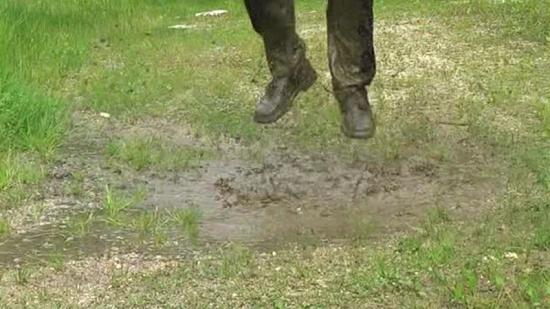
The ideas at work here are simple. If you like art cinema, you can watch some whenever and wherever you like. If you make art cinema, your avenues of distribution are becoming a bit more independent of external influences. If you are an absolute traditionalist, CologneOFF, and other festivals like it, show that programmers and filmmakers may not be able to avoid the Internet audience much longer and that barring online and interactive films from the festival circuit may not be the most forward thinking audience policy. After organizing over a hundred new media festivals, Acgricola questions the agenda of the anti-online curator: “Such a policy will not survive in the end or [it will survive] just as a fossil, since already now the best film and video artists use the Internet for their purposes, and some of them make currently big careers. Nobody honestly cares about some remaining totalitarian structures from the good old days.” Agricola notes that, as the CologneOFF continues, it creates its own rules, and follows those rules more and more.
Whatever your motives, the films are excellent, easily as engaging as the work you might see in a museum or traditional art cinema screening. Some have been shown in galleries. One example, Casey McKee’s cerebral chase film Corporate Warfare (2005), which pits two briefcase carrying, business-suited adversaries in a knock down drag out fight on the escalator to nowhere.

Since its beginnings, CologneOFF’s primary focus has been on films that examine memory and identity. As mentioned earlier, a visit to the festival website will give access to the festival’s earlier themes of identity, image and music, and art cartoons and animation. This year, under the title Taboo!, there was a special emphasis on the issue of prohibitions, the forbidden, and the transgressive.
Filmmakers Jaime Waelchi, Anna F.C. Smith, and Les Riches Douaniers responded with especially disturbing images. In Little Pleasures, Waelchi indulges herself in chewing gum to the point of drooling, choking, pain. Meanwhile, Smith uses Which Came First (2009) to present an ordinary kitchen chore as a scary and destabilizing sexual metaphor, drawing a link between taboo and the everyday household routine.
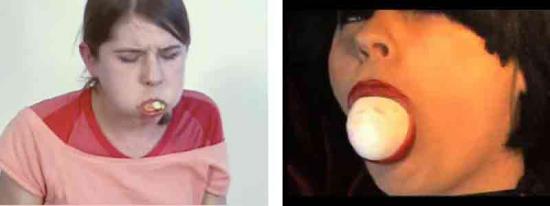
Image: Little Pleasures, Jaime Waelchi, USA (left) and Which Came First?, Anna F.C. Smith, United Kingdom (right)
There are notable works of machinima in this year’s program. If you can bear to watch, the film partnership Les Riches Douaniers remix Grand Theft Auto IV as a squishy critique of avatar indifference in the face of massive multiplayer game violence in their short film Motorized Ordeal (2009).
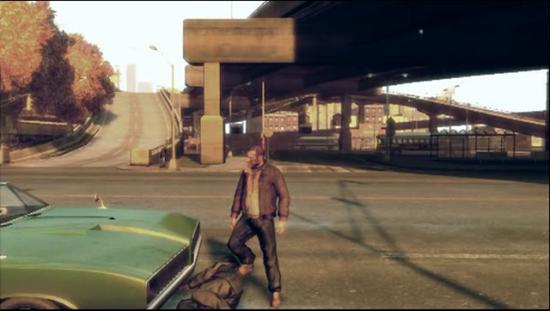
Watching movies as conceptually dense as these made me wonder when the online movie grew up and how it happened so fast. But when asked if this years entries were more complex than perhaps some of the straight plotted narrative entries of earlier years, director Agricola disagreed, reminding me that CologneOFF has always attracted challenging works. Often there is more worthwhile art cinema than even Agricola can present: “There were … too many excellent films submitted. Choosing Taboo! as a topic, we were hoping we would receive less submissions, but in the end we received 203 films and videos. This may … not sound [like] too much, but every work is reviewed several times before a selection is made and reviewing more than 200 films seriously represents a challenge for everybody, especially if so many good submissions come in.”
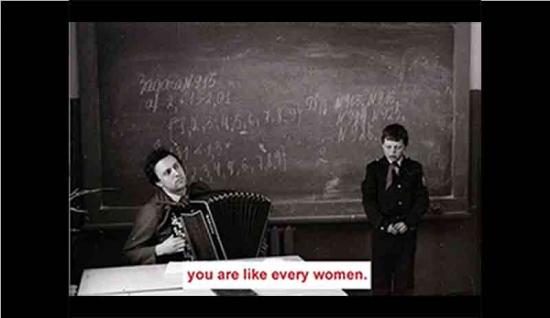
On another note, what is especially exciting is the maturing use of digital effects as an artistic medium in its own right. In Red Star (2009), Milica Rakic overwhelms history by creating a personal memoir of the past that blends archival photography, cut-up titles, and Serbian folk music. Part of the post-MTV generation, Nikesh Shukla assembled his film, The Great Identity Swindle (2008), as a video comic book that literally draws a picture of the taboos he faces as an adolescent Br-Asian. Thinking about the rules of personality led Sibylle Trickes to use video mutiples as an army of her many selves in her film cyclic islands – we and me (2009).
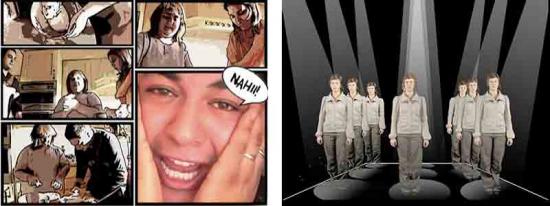
As digital tools move beyond the service of the seamless Hollywood effect to expressive mediums in their own right, what other cinematic forms might emerge from the digital film and the networked festival? Agricola says that technology is advancing so rapidly, he would need to be a fortune teller to predict the future of online cinema. However, he does point out that the Internet has already revolutionized the both viewer behavior and the distribution of art film: “Everybody can determine for himself where and when he wants to enter cultural contexts. I think, the physical live festival and the independent online availability complement each other, and make cultural experience for people, generally, much richer than it has been before ever. The development of cinema needs such different types of approaches, in order to be more attractive and future orientated. Restrictions are there to be overcome.”
Featured image: A group of Australian media artists known as Horse Bazaar produce Digital Fringe at the festival
Every year as part of the Melbourne Fringe Festival (September 23rd – October 11th), a group of Australian media artists known as Horse Bazaar produces Digital Fringe. This is a nonstop digital playlist of short form video, sound, and images, some of it made by artists, some of it not, uploaded to the Digital Fringe website from around the world. Once individual entries are catalogued, the work is assembled into feeds and DVDs, and then streamed or delivered to a network of public and private locations. As expected, the festival’s general stream is sent to museums and galleries but, in an effort to commandeer every available space, Horse Bazaar also sends Digital Fringe to bars, cafes, public squares, libraries, restaurants, and pretty much any other location that will allow them in. You can see the festival online, along with an interactive map of this year’s screen locations, at the Digital Fringe website, http://digitalfringe.com.au.
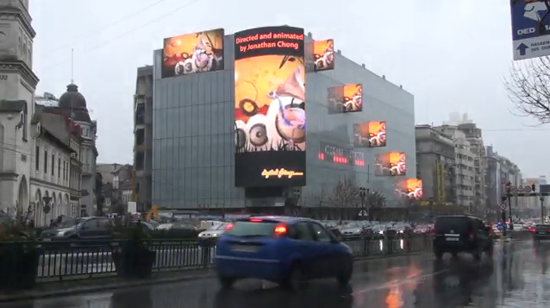
According to festival co-producer Simeon Moran, an estimated half-million people saw this year’s festival which was broadcast on about 250 screens. Most of these showings were in Australia, but there were also screenings in Africa, Europe, Asia, the US, and the UK. To project at locations where there is no existing equipment, on a street or in a public building, Horse Bazaar gathers donated screens from schools, community groups, and private supporters. To project across key buildings or monuments, Horse Bazaar calls in its mobile unit, also known as the MPU. Other than that, the festival can be, and is, about anything. There’s no jury. Submissions are not restricted to a theme. There’s just a global call for work followed by a global response.
As a result, one of the most enjoyable aspects of Digital Fringe is the range of sensibilities it manages to present. Emerging artists especially stand out. Among the more lyrical of this year’s entries is Waveform (2009), by the Amsterdam based French photographer Federico Campanale. Using video shot in Finland, Campanale lays an ambient track of digital pops and clicks against a perfect, languid, 360 degree pan of a line of trees reflected in a lake at dusk. The harsh, guttural rasp of the soundtrack set against the blue infinity of the horizon forms a direct commentary on environment and endurance, and on nature’s coexistence with the manmade.
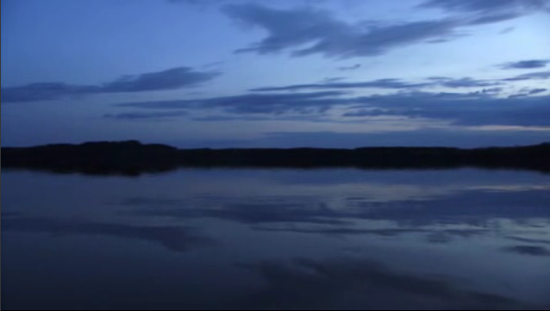
There is the moody, existential narrative The Man in His Tower (2009) from Tone Gellein of Oslo. In this video, one of those tough guy movie characters walks down the street while suffering jump cuts and odd camera angles. He ends up swinging from lampposts in a cinematic expression of an existential state of mind. Other films may be less accomplished, but are equally philosophical. For example, filmmaker Joe Tusley sent in Spud & Amp in the Barra, Part 2 (2009), a no-frills documentary about a few minutes of fishing in the Apsley Straight, Bathurst Island, NT. Maybe it’s a personal reaction, but it’s hard not to think about the big picture as, on camera, Spud reels in a huge, silver barramundi, then slits its throat.
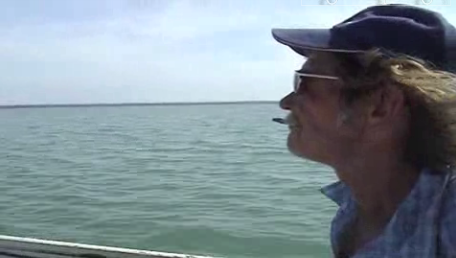
Digital Fringe also streams sound pieces, music videos, machinima, and performance films. There is a good amount of 3D modeling and animation. Colliderscope artist Zennor Alexander and musician Fiona Soe Paing submitted Thayn Tyha Hai (2009) from New Zealand. In this work, the sun and moon follow each other across a wispy, ethereal sky that lies somewhere between dreaming and waking. If you prefer something more scientific, there is the stop-motion simulation Every Second Equals Forty Million Years (2009) by animator Gregory Crocetti of Melbourne. In just under two minutes, Crocetti uses children’s blocks to build the Tree of Life from the beginning of time to just a little while ago.
There is software art such as Turkish programmer Tahir Un’s screensaver project Concepts and Images (2007). Ãœn chooses words ending with the suffix ‘ism’ as the query strings for an internet image search. After collecting images for 90 minutes, a software program fixes a random sampling of that data set into a collage.
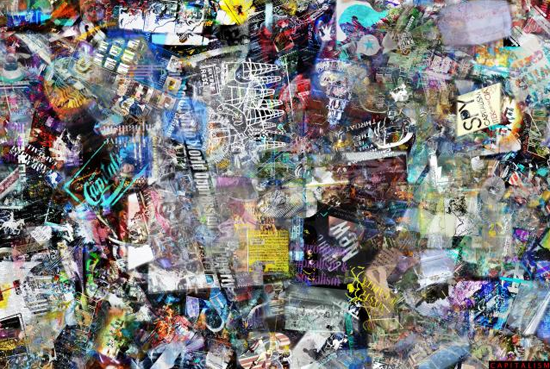
Another interesting aspect of Digital Fringe is its continued support of open source computing and shared culture. Artists uploading work to the Fringe website keep all rights to their projects and are able to license their work in a number of different ways. These include the traditional ‘all rights reserved’ copyright, the Creative Commons ‘some rights reserved’ license, and the completely unrestricted category of ‘public domain’. Creative Commons says that about 75 percent of the festival’s participants choose the CC license, which secures rights of ownership while allowing for mash-ups and remixes. This shows that many emerging artists are willing to distribute under non-traditional copyright provided there are a still few small protections.
Ultimately, Digital Fringe, is a festival that intends to include everyone, play everywhere, and show it all from the dreamscape of the perfect virtual environment to the underlit reality of the amateur video guy. Aside from its inspiring generosity, we get a lot of interesting experiments, the unmediated juxtaposition of the professional and the amateur, and a kind of yearly almanac of what up and coming digital media makers seem to have on their minds.
—
Link: Digital Fringe Trailer.
Image by Alice Alexandrescu.
This year’s edition of Artivistic brings the fields of art, politics and academia together under the theme of TURN*ON.
Eventually, the investigation about systems of representation – be they semiotic, informational or political – might slip into the one psychoanalysis considers the most elementary and surreptitious of them all: sex. That’s precisely where the Artivistic gathering got into in its fourth edition, which happened in Montreal from 15th to 17th October. To be exact, the theme under which the event tied the fields of art, politics and academia together was TURN*ON – according to its curatorial statement, ‘a fragile bridge extending, over a valley of which the depth you cannot see, to a life centered on pleasure, consciousness, togetherness, understanding, and joy’.
Formulated this way, the concept seems to be a response to the well-worn verses by journalist Eduardo Galeano, in which he states that utopia ’causes us to advance’ only because it ‘lies in the horizon’. With turn on, Artivistic proposes that the forces that move people forward and bring worlds into existence are not far away: in a scenario emptied of grand narratives, the desire (of the self?) should gain preponderance over any masterplans (of the party?).
So, if libido is the why, could we say that art is the how? As crude as it can be, this comparison makes clear that aesthetics, just as politics, mainly operate in the level of methods. They are more concerned with the way desire is manipulated (often repressed or enhanced) than with its ontological truth. Language cannot explain affect, and it shouldn’t pretend to – the best it can do is create spaces for its continuous exercise.
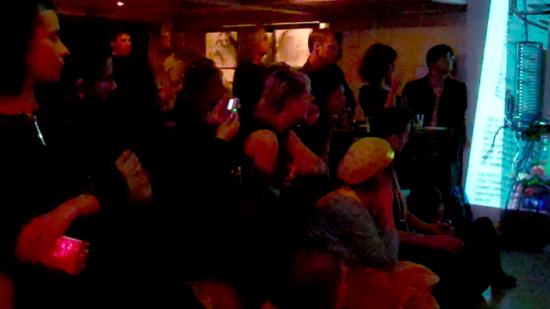
In that sense, what really stood out during the event were the workshops. I wouldn’t go as far as to agree with the idea that such activities are a distinct genre within the contemporary art circuit. Workshops indeed revitalize the exhibition space – however, they do so not by occupying it with new forms, but by proposing new forms of occupying it. In Artivistic, these interfaces ranged from diy electronics and card game design to pornographic filmmaking and even a kind of un-workshop on workshops! Among those, there was a remarkable amount of projects concerning the performative of one’s own identity.
In fact, the workshops punctuated Artivistic in a not much different way than the everyday activities of cooking and eating in group (or translating things to French or English – it was a true bilingual event). One thing led to another, keeping the gathering together in spite of the healthy excess of participant autonomy allowed by the organization crew. Of course, the concentration of (almost) all activities in the same place helped building this integration. This was a strategic option, very coherent with the intimate theme of this edition; the former Artivistic, about un.occupied spaces, had been distributed in different venues throughout Montreal.
The integration of the participants was so successful it had the minor side effect of creating an almost self-centred environment. Even though some activities would have been very interesting for people outside regular art-audience, it was hard to see among the public someone besides those that were immersed 24/7 in the event. For instance, it was a pity that the orgasmic birth workshop, which introduced alternative ways of pregnancy and labour, had no pregnant women participating.
This paradoxical isolation was imploded in the last night of the event – most ironically, not by the long-waited closing performance Resist Me Release Me: Turn On Act On, which artist Shu Lea Cheang had been organising with the participants throughout the gathering, but because of its impending cancellation. It seems that the managers of the venue where Artivistic was happening had not understood that the event would contain nudity and explicit sexual acts, and took account of this just in time of the final soiree. Since they had no public license to host this kind of activity, they said it was impossible to have the performance there: either it had to be suspended or transferred elsewhere.
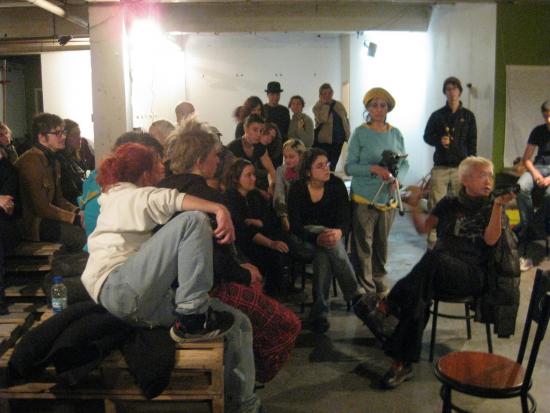
The organizers explained this incident to the participants and called for a collective decision. That immediately ignited a very intense discussion, where it became clear that what was at hand was not mere censorship, but a very subtle negotiation of the different spheres that Artivistic addressed. The autonomy people were requesting was not sexual, but artistic – ‘we do not intend to do an orgy, but performances’, as someone said. Hence, it was not a simple conflict between raw libidinal impulse and oppressive morality; it concerned more complex, structured systems – i.e. art and Montreal society, both already contradictory in themselves.
I dare say that some solutions proposed in this debate – for example, live-streaming the works from another place or ‘censoring’ performances in real-time – were way more interesting than any prescripted show might have been. These proposals were the sign of an art that was alive and kicking, ready to respond emergencies and fight back, instead of just claiming its secular, innocuous freedom (a freedom that critic Julian Stallabrass very cunningly regards as supplementary to that of the market).
The result was that in a couple hours the whole programme for the night was adapted and moved to a venue nearby, in a beautifully orchestrated, self-organized effort. Unfortunately, due to limitations of structure and space, not everything that had been planned before could be presented. Nevertheless, the accident had allowed the necessary hands-on without which a turn on just fades away, and something bigger was engendered in the process – I’d say revolutionary freedom, a kind of autonomy that, as the old leftist maxima states, must always be conquered.
Links: